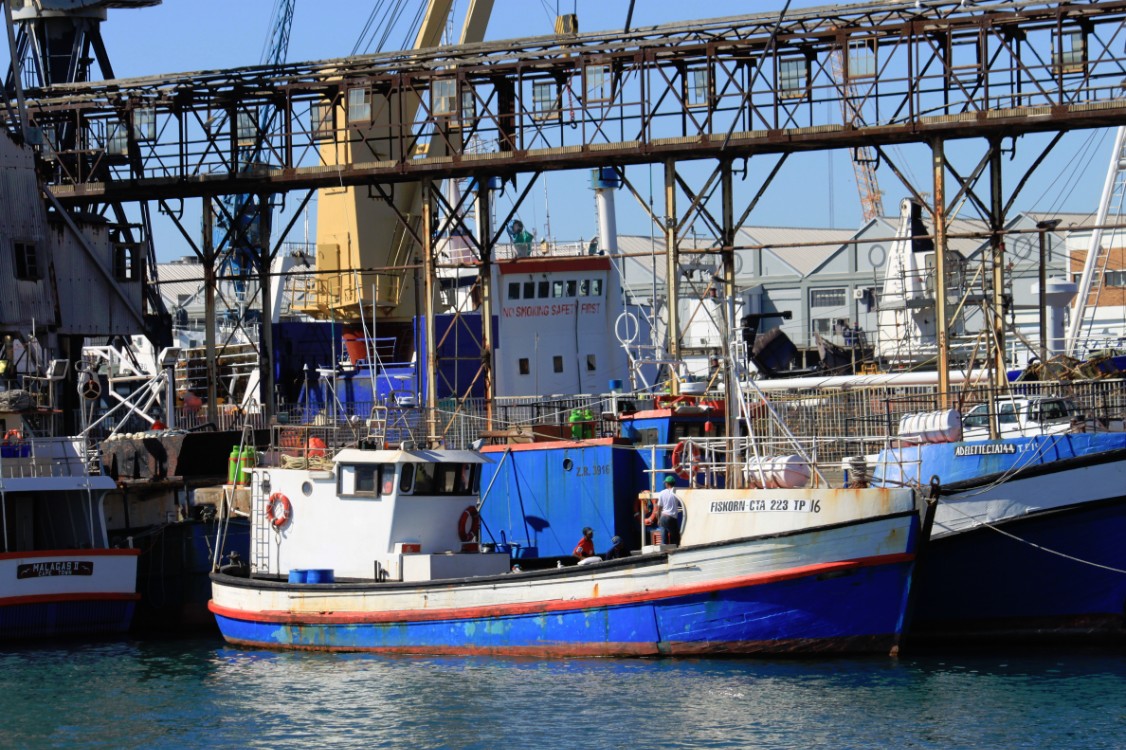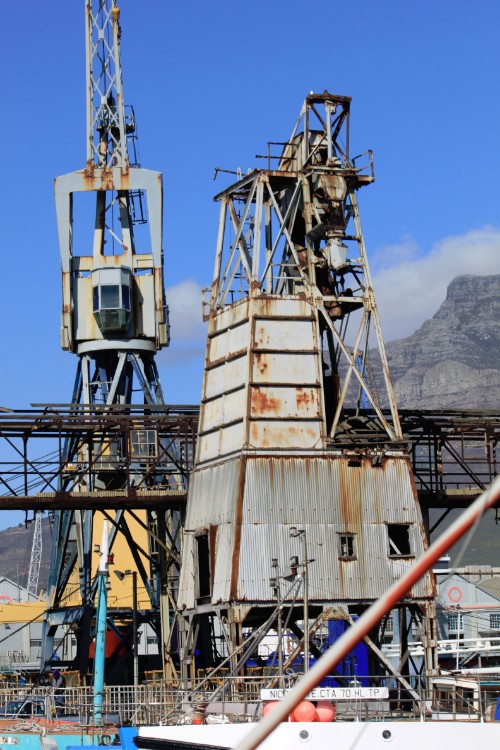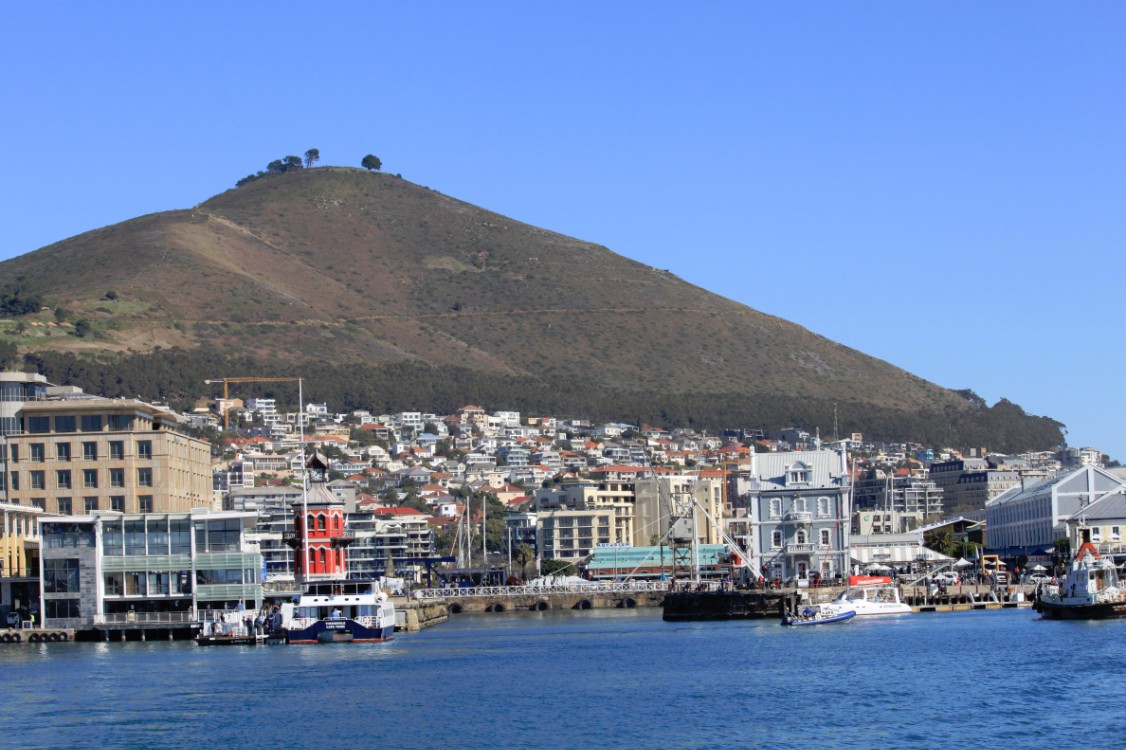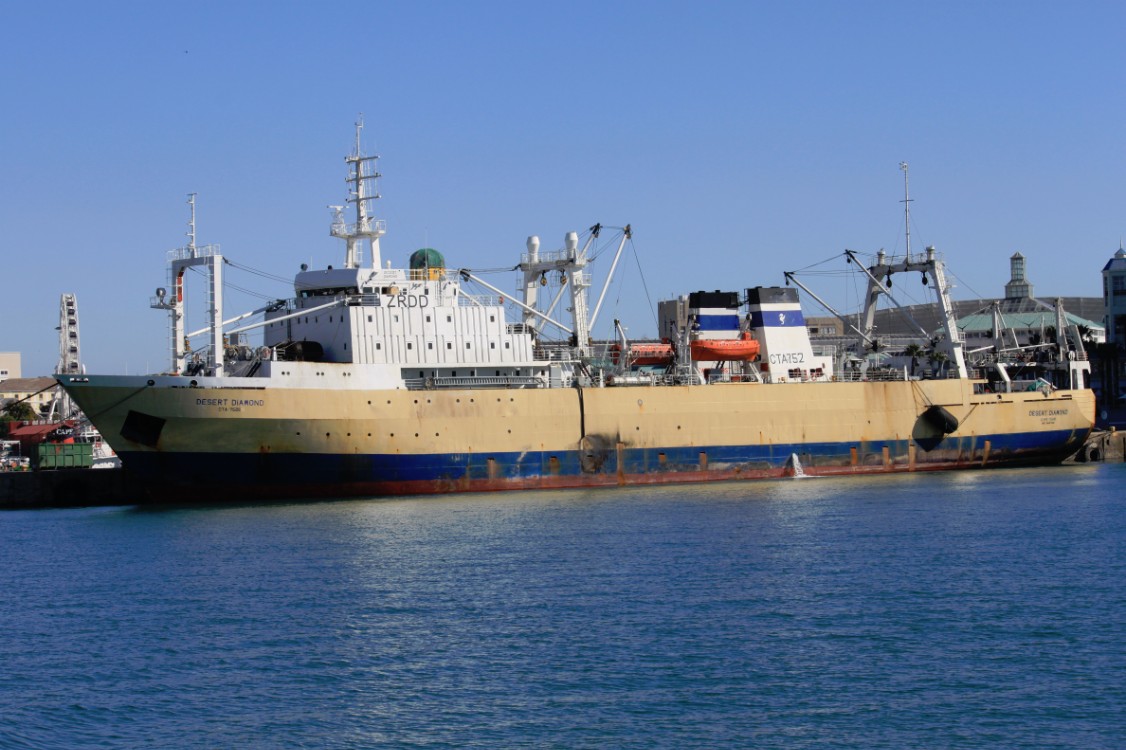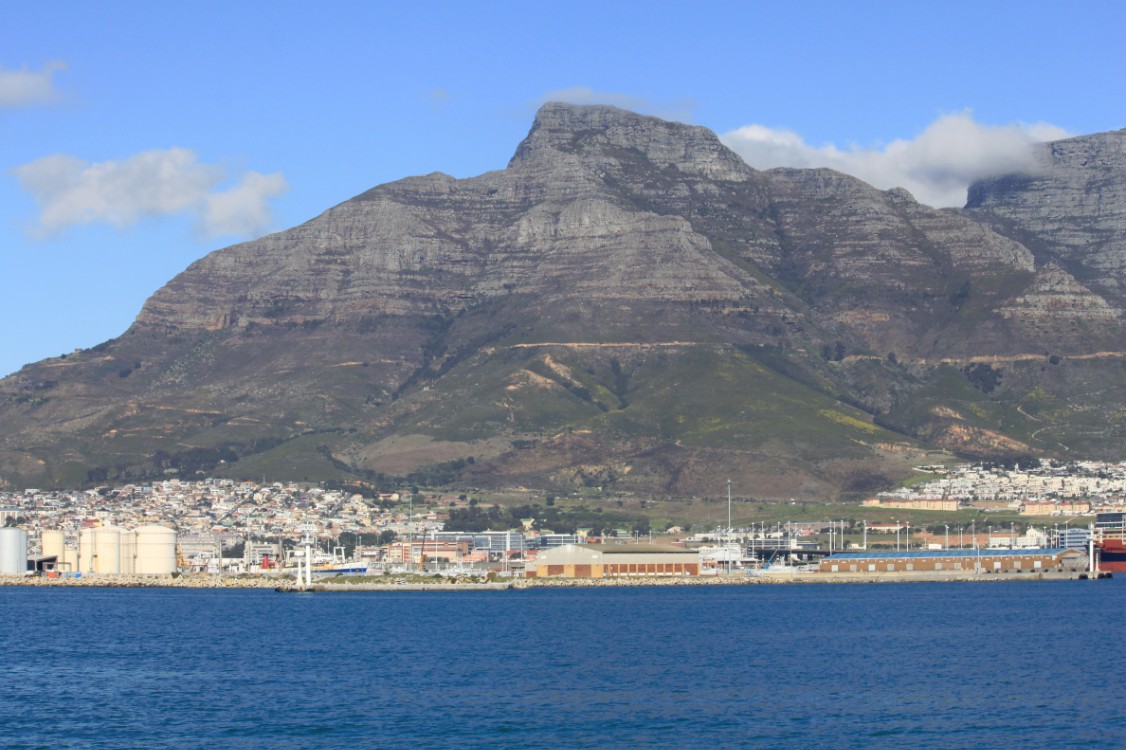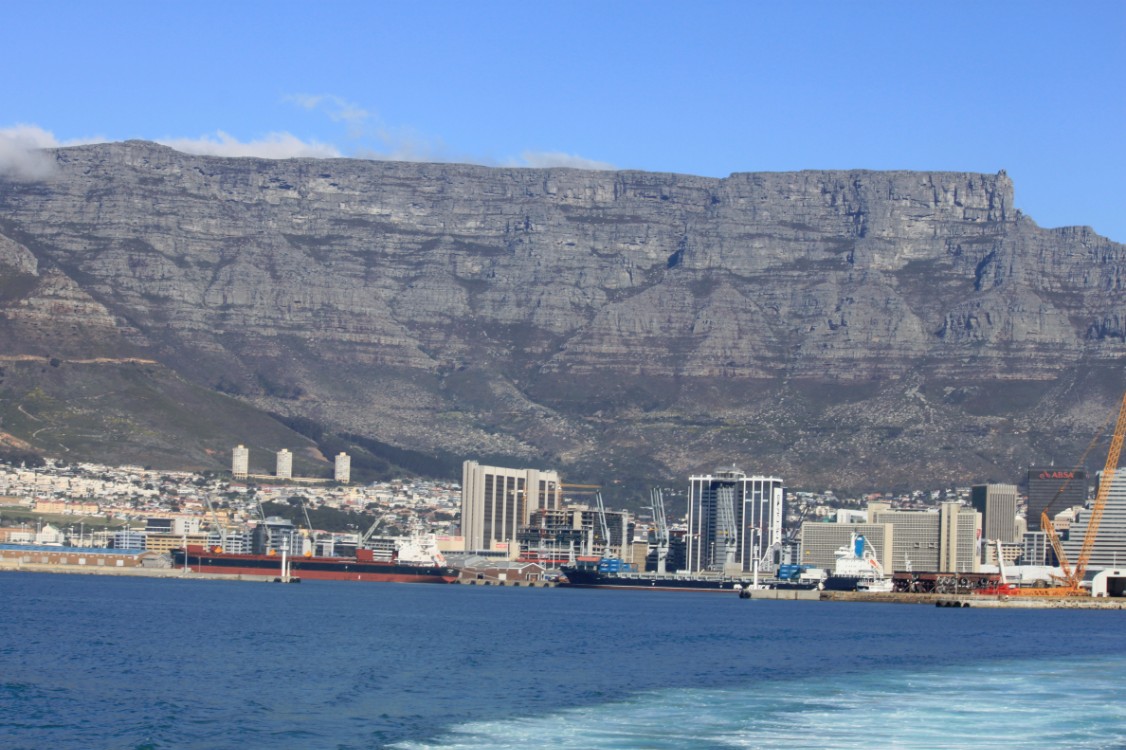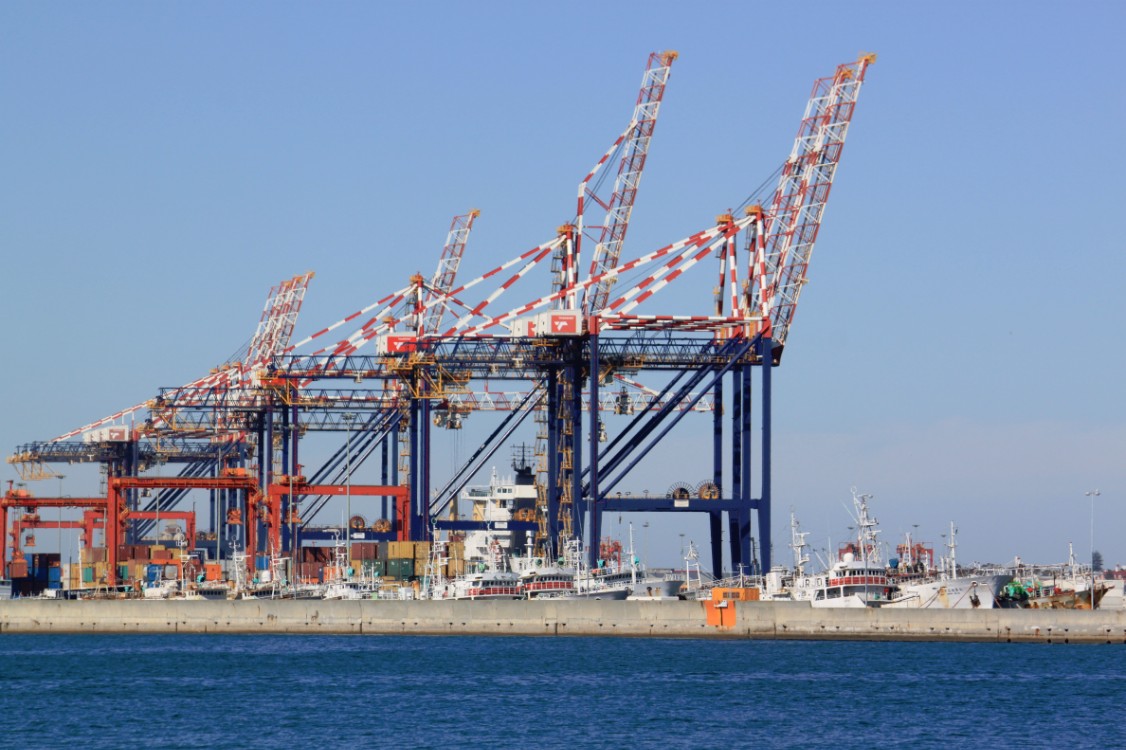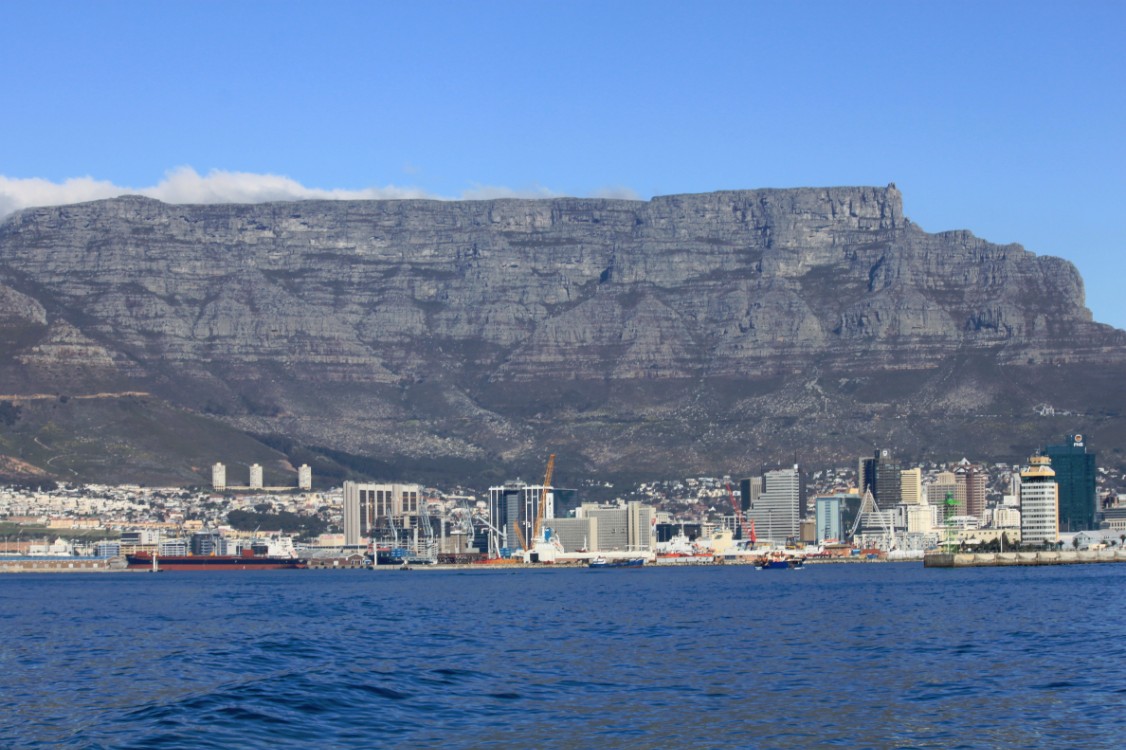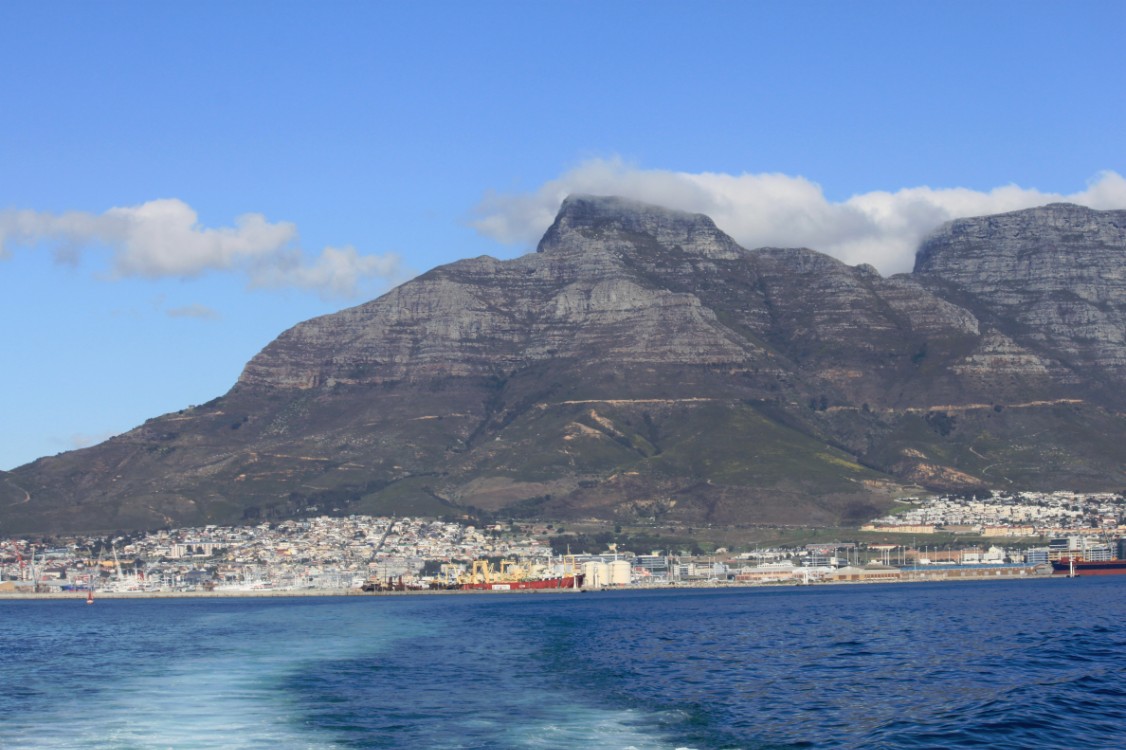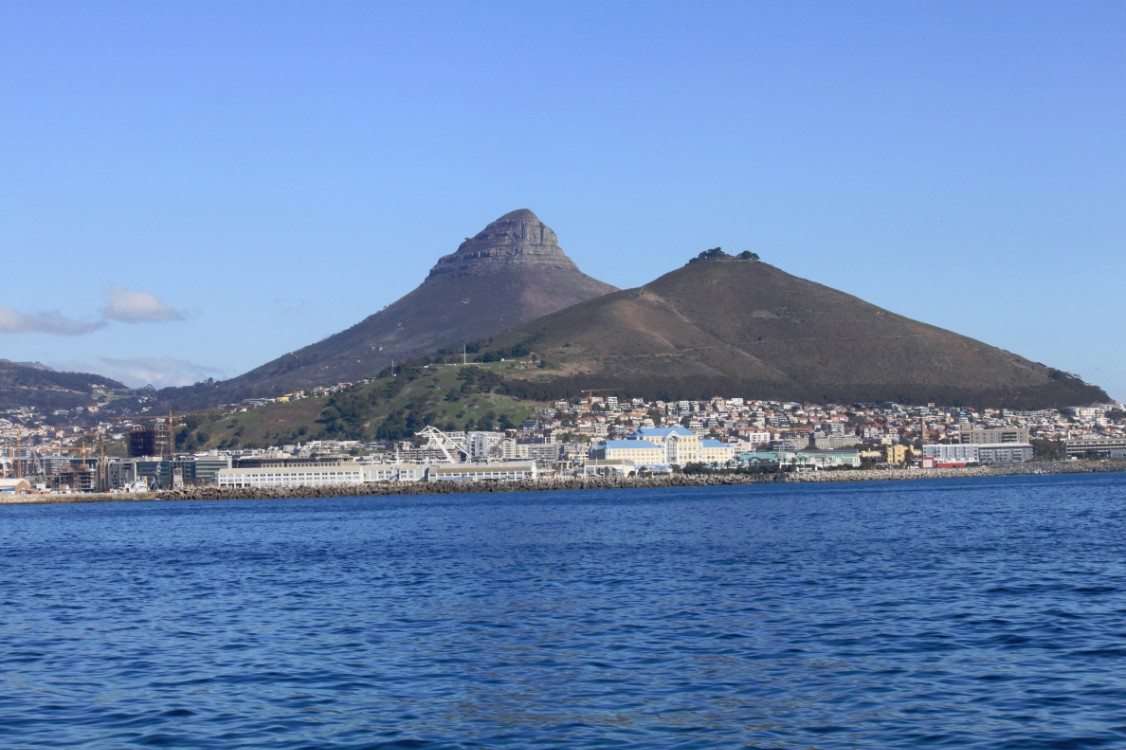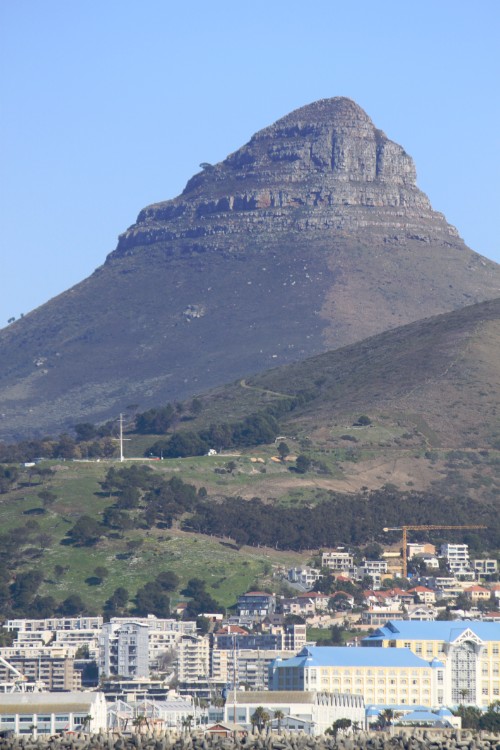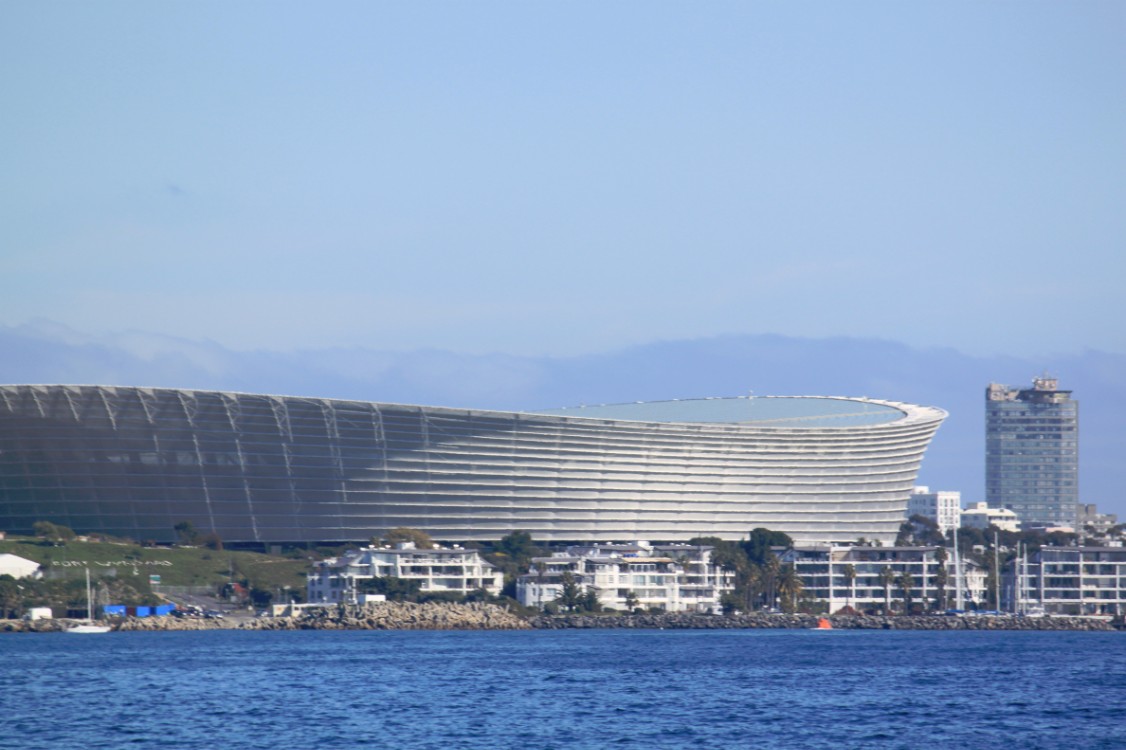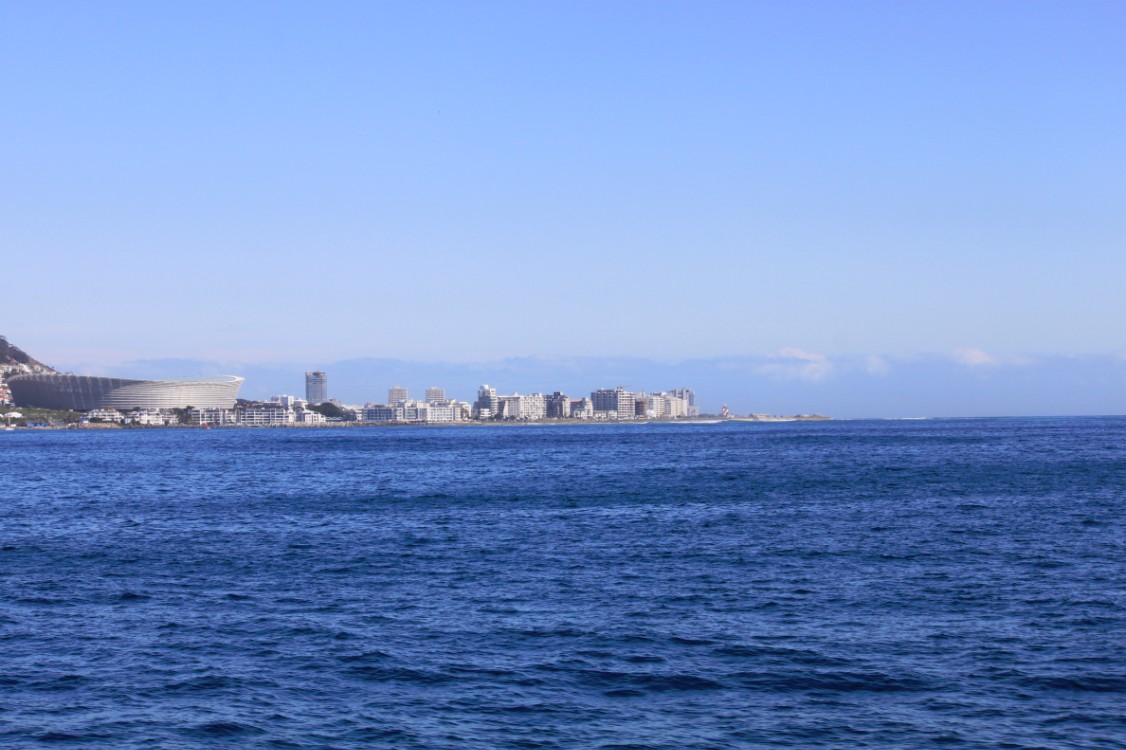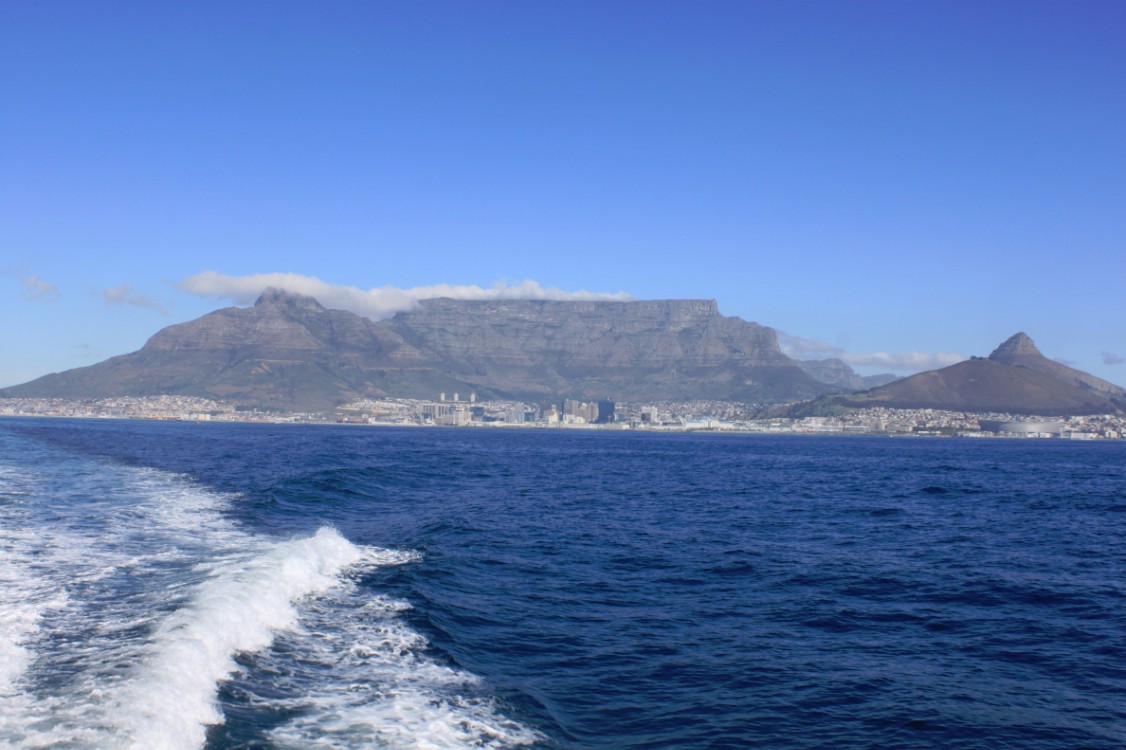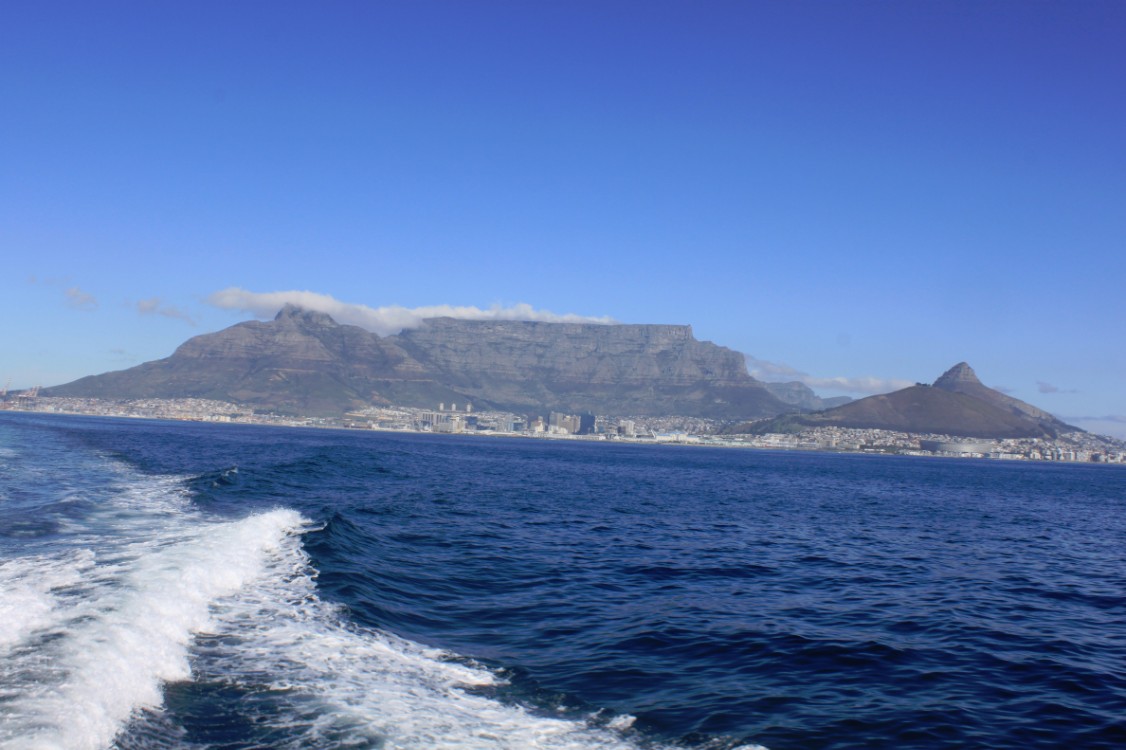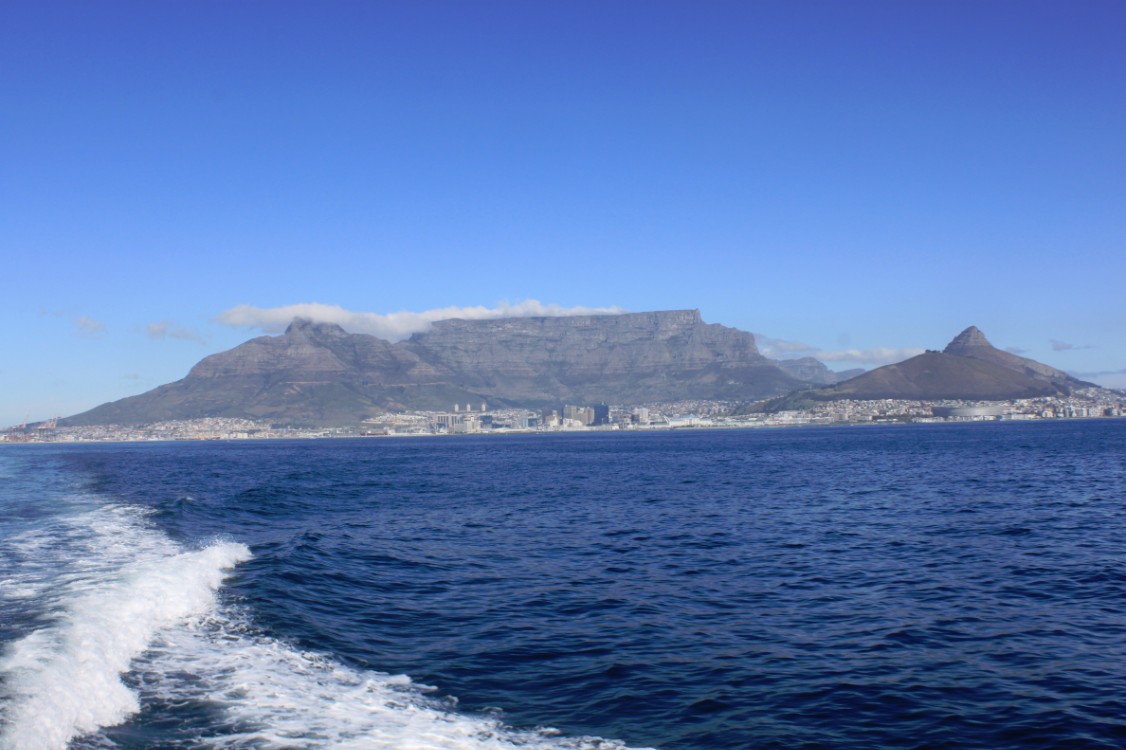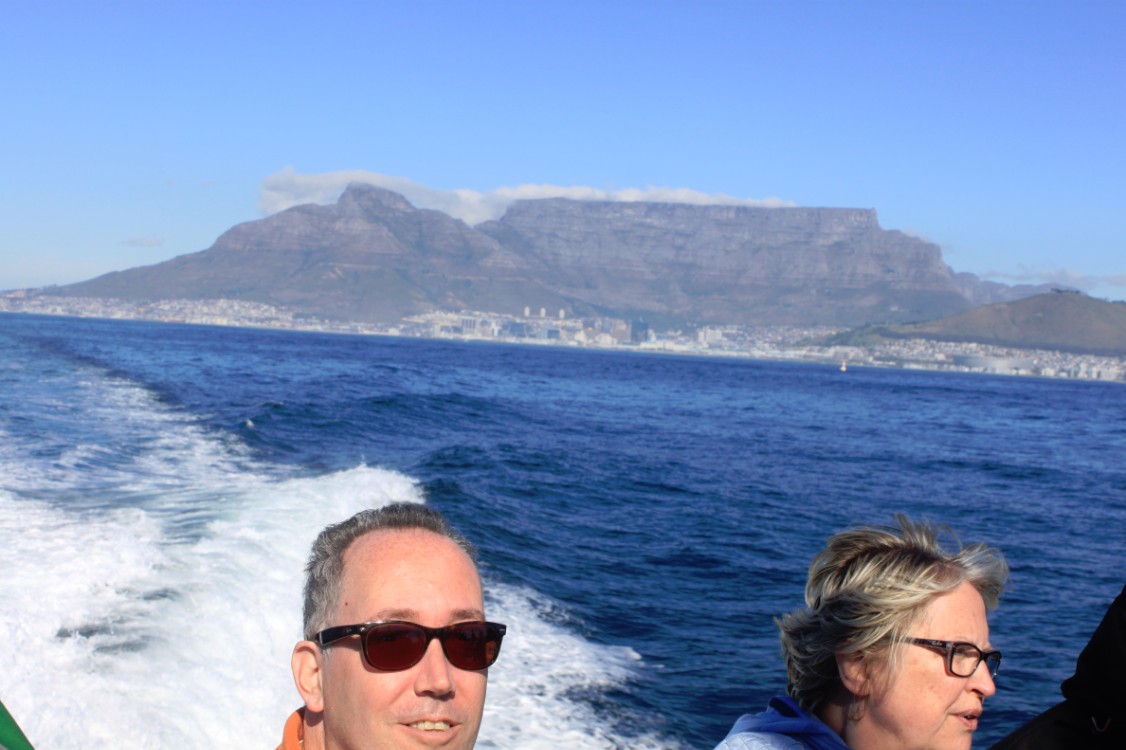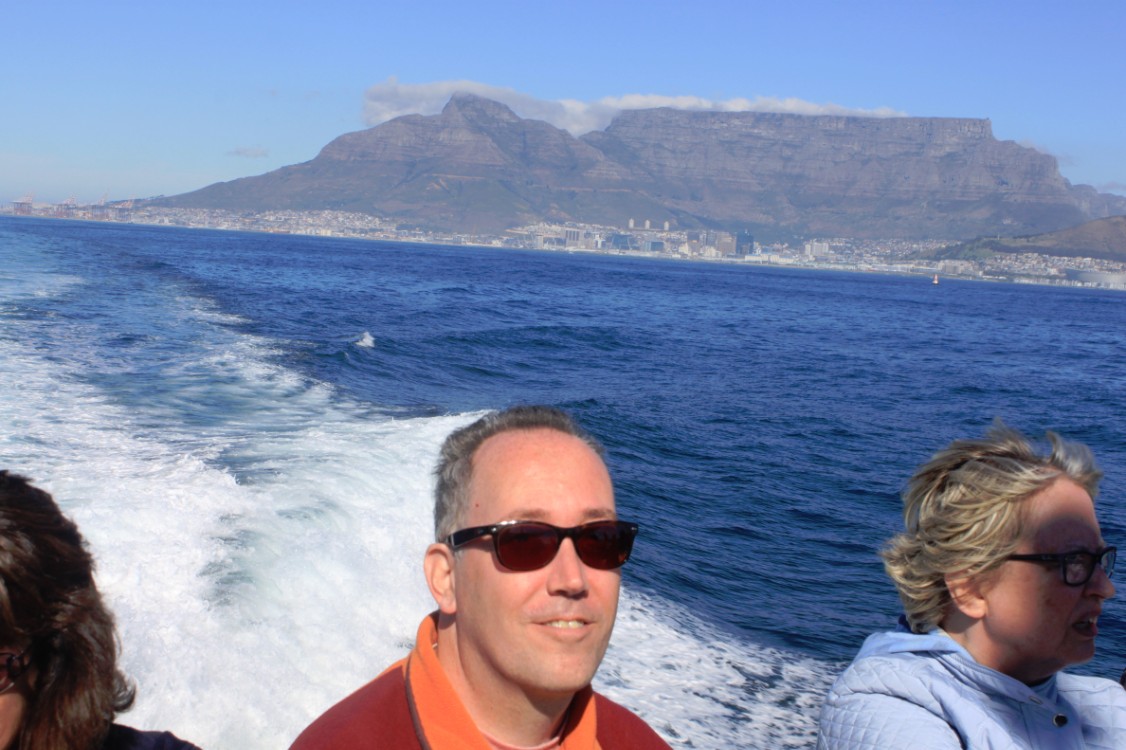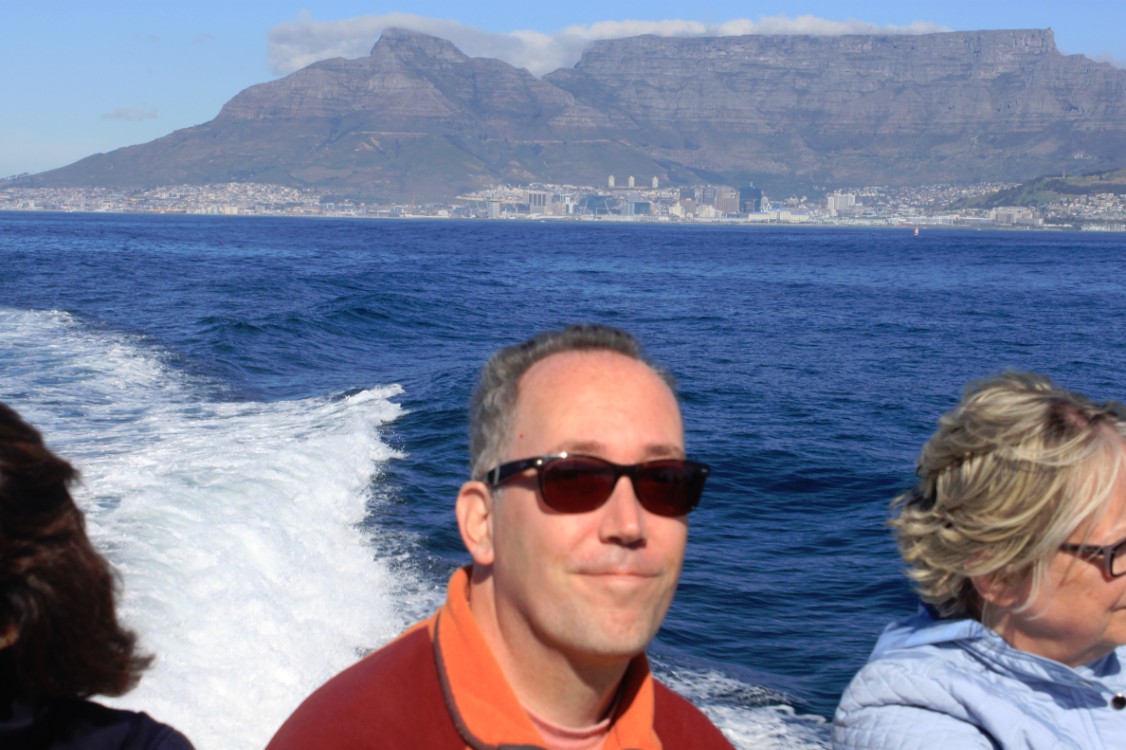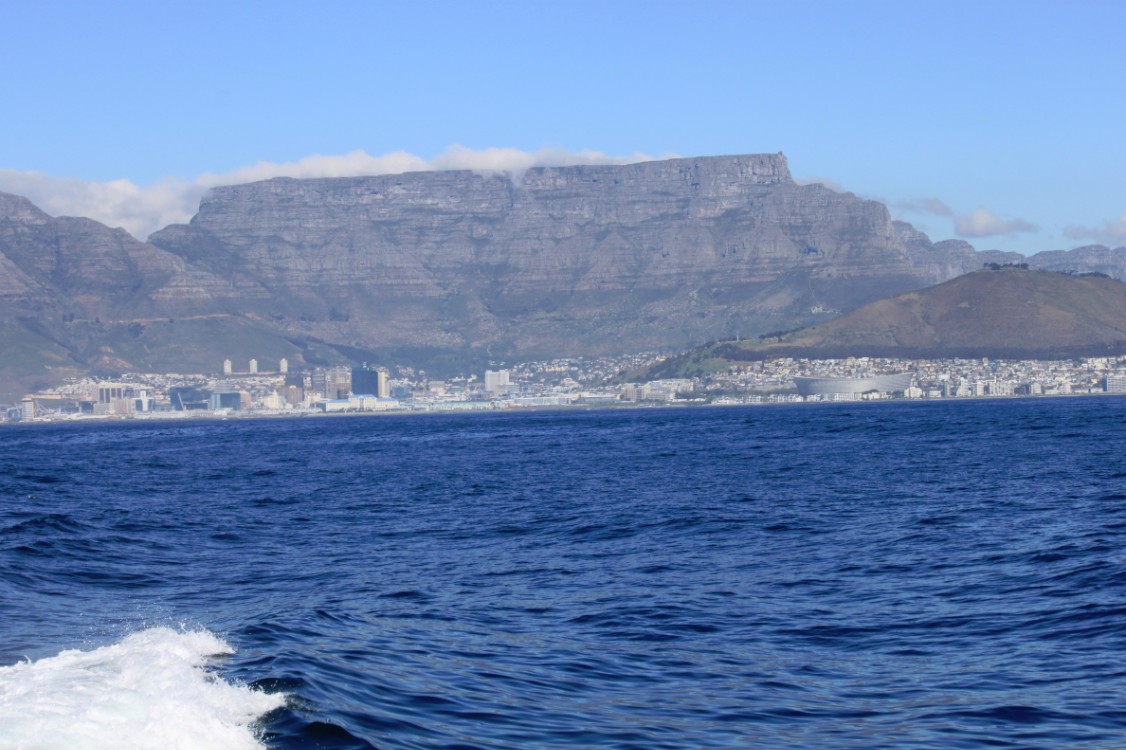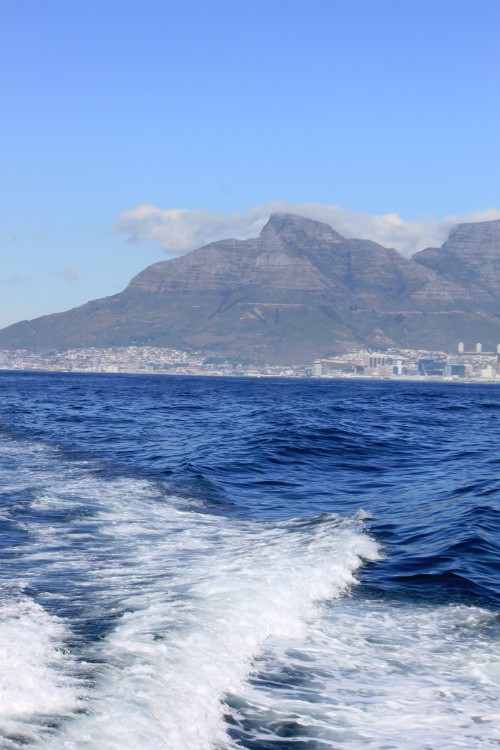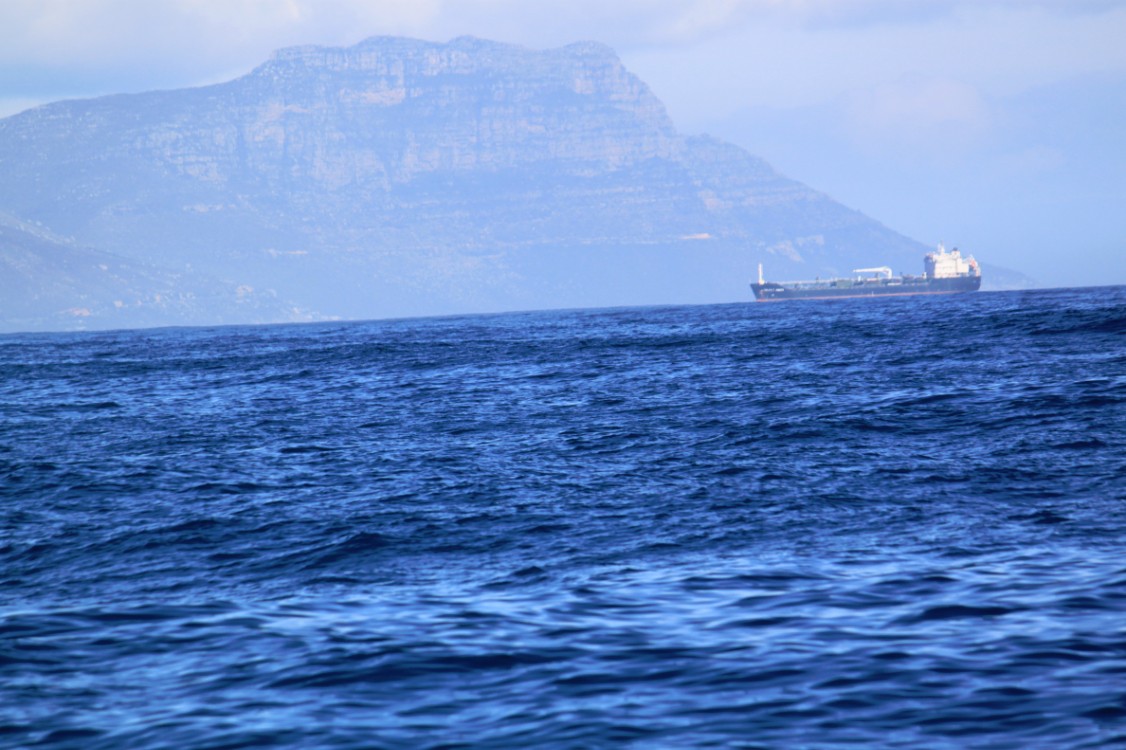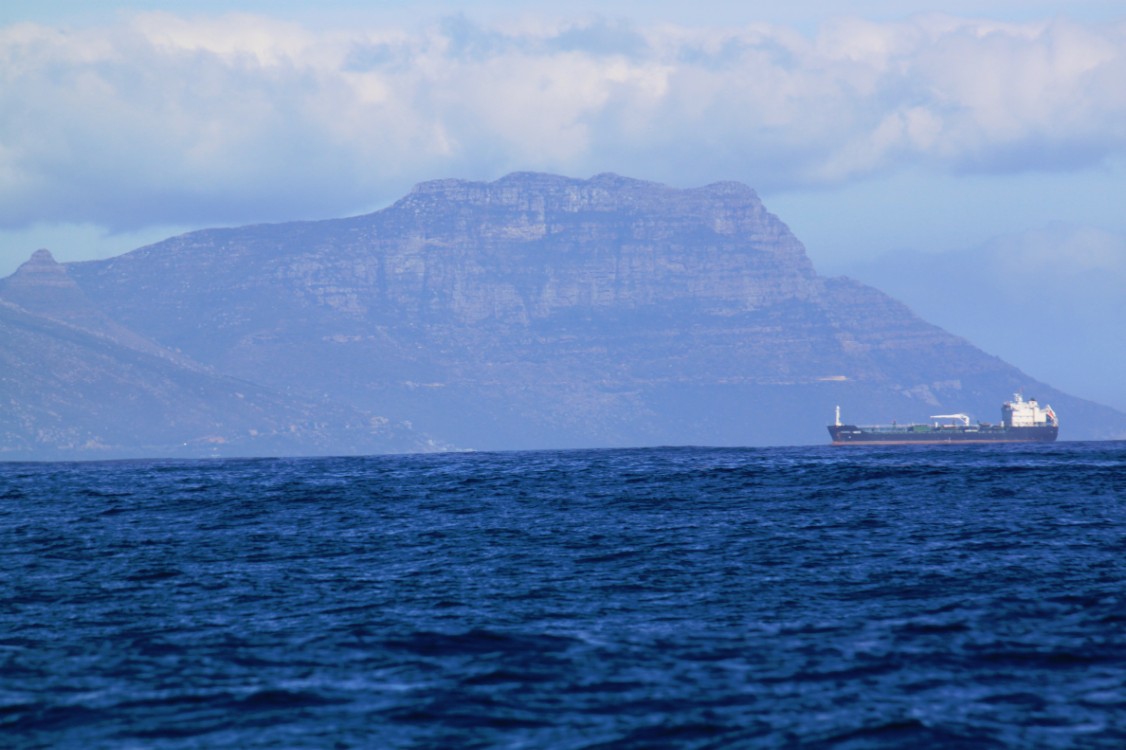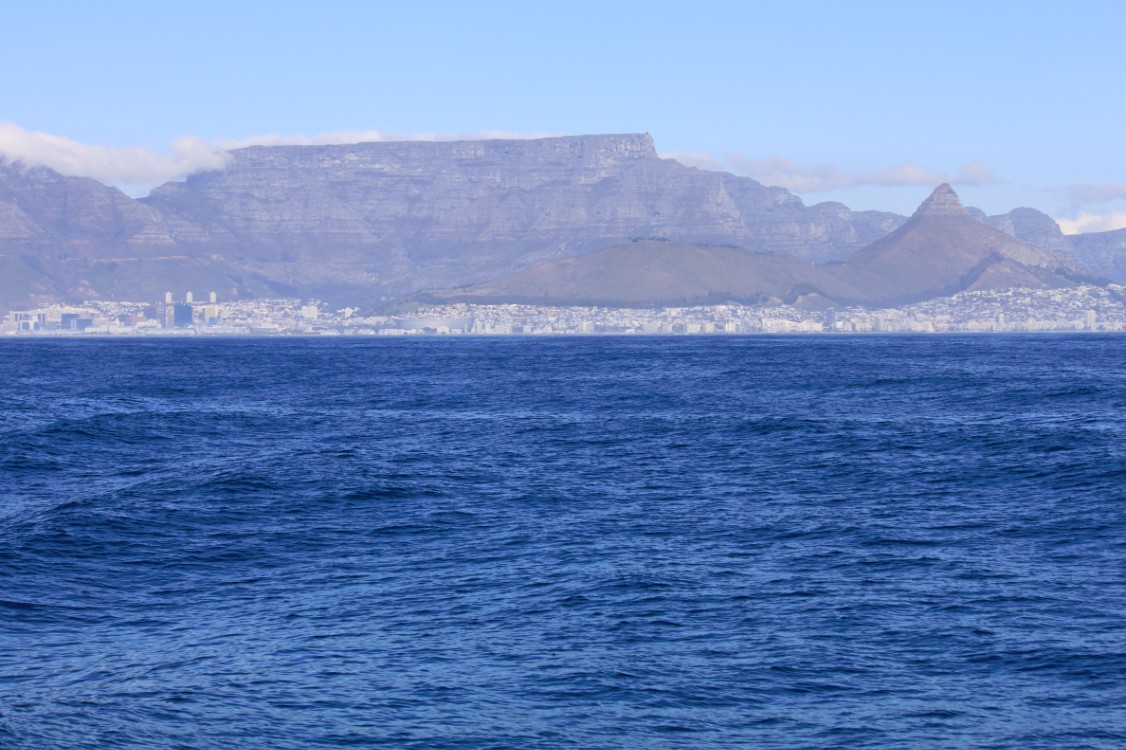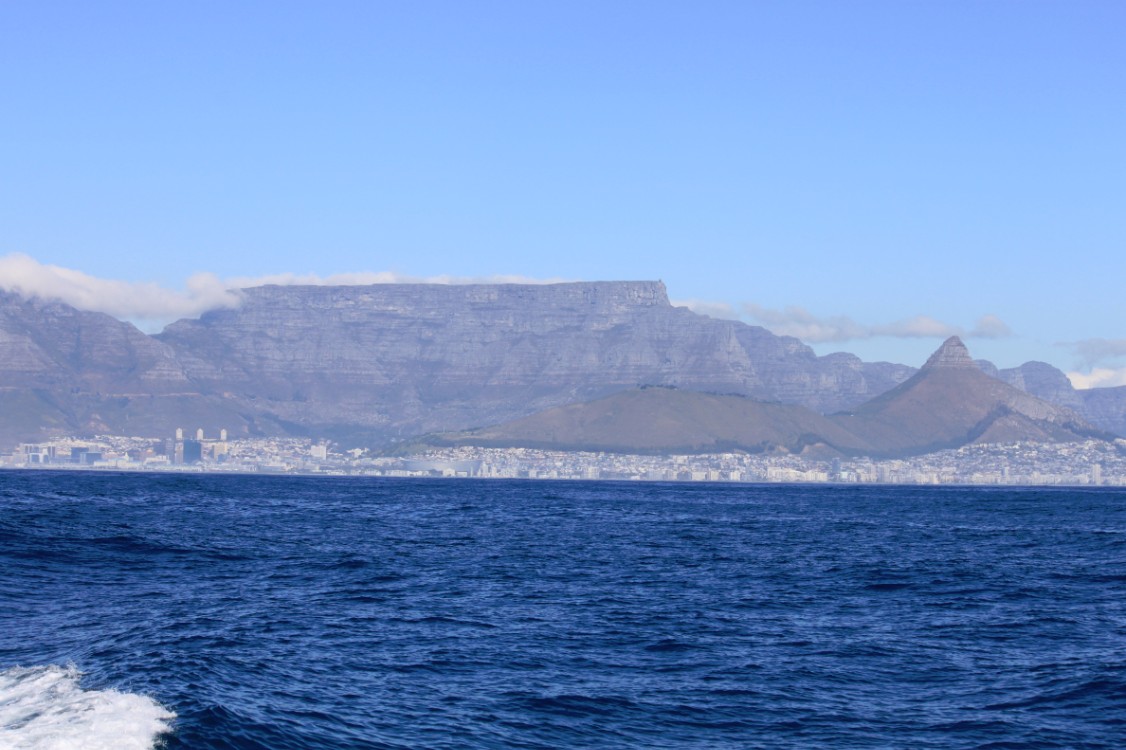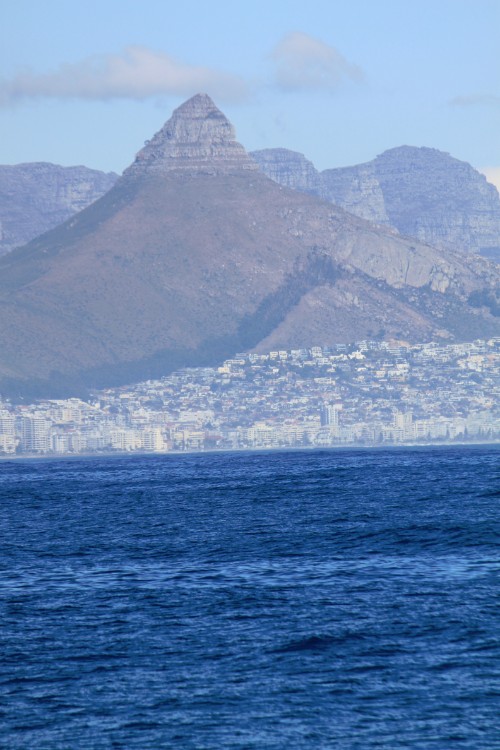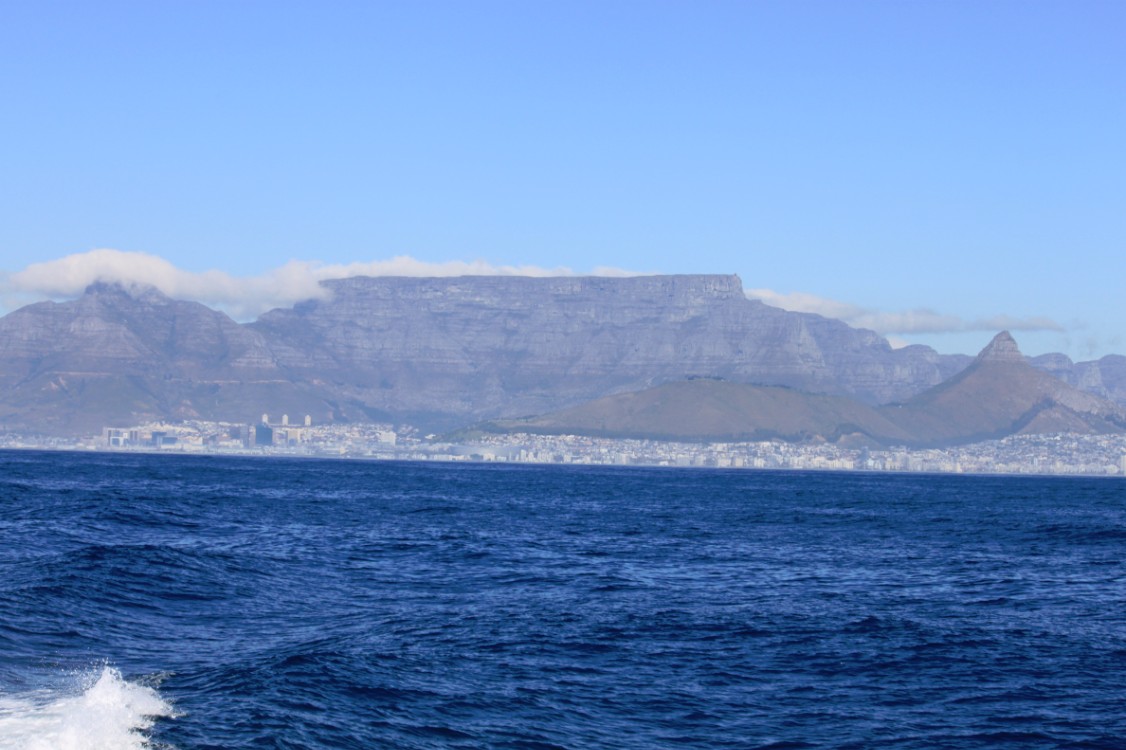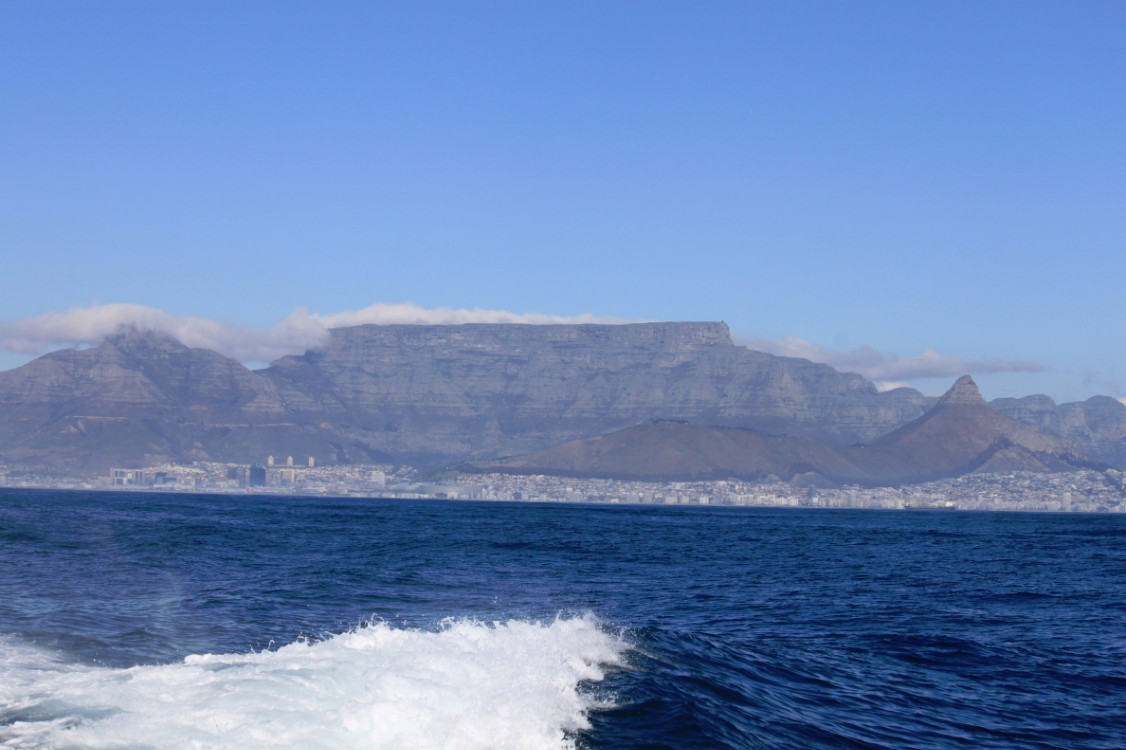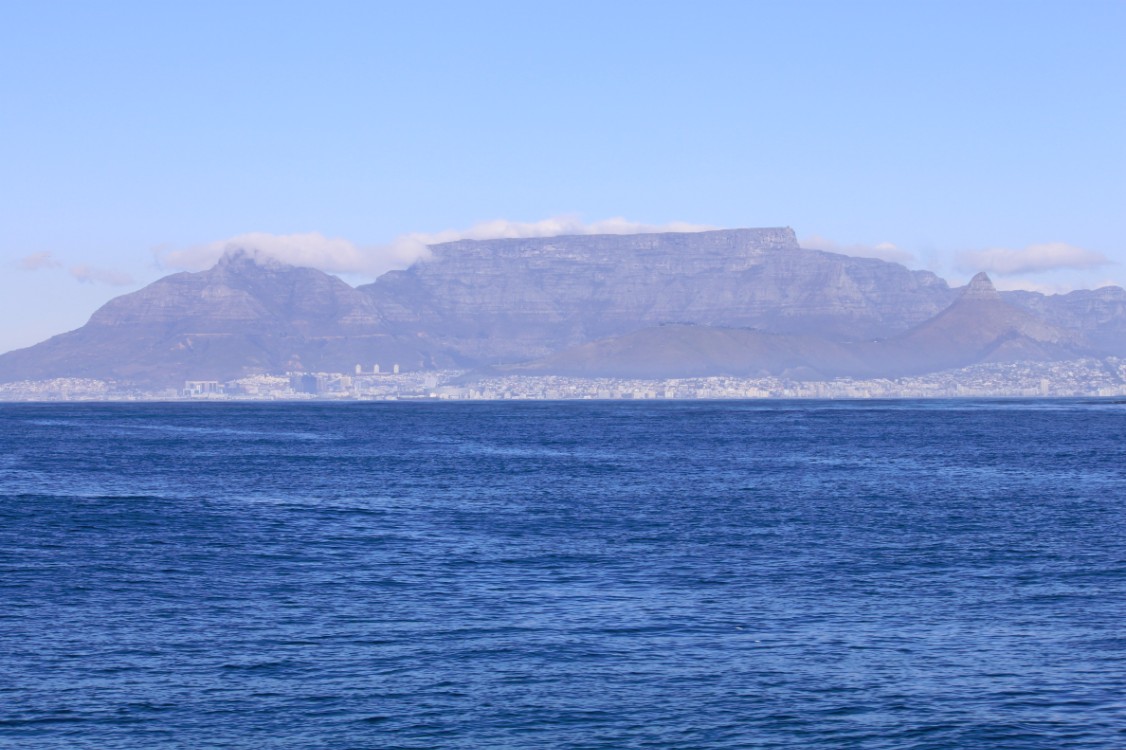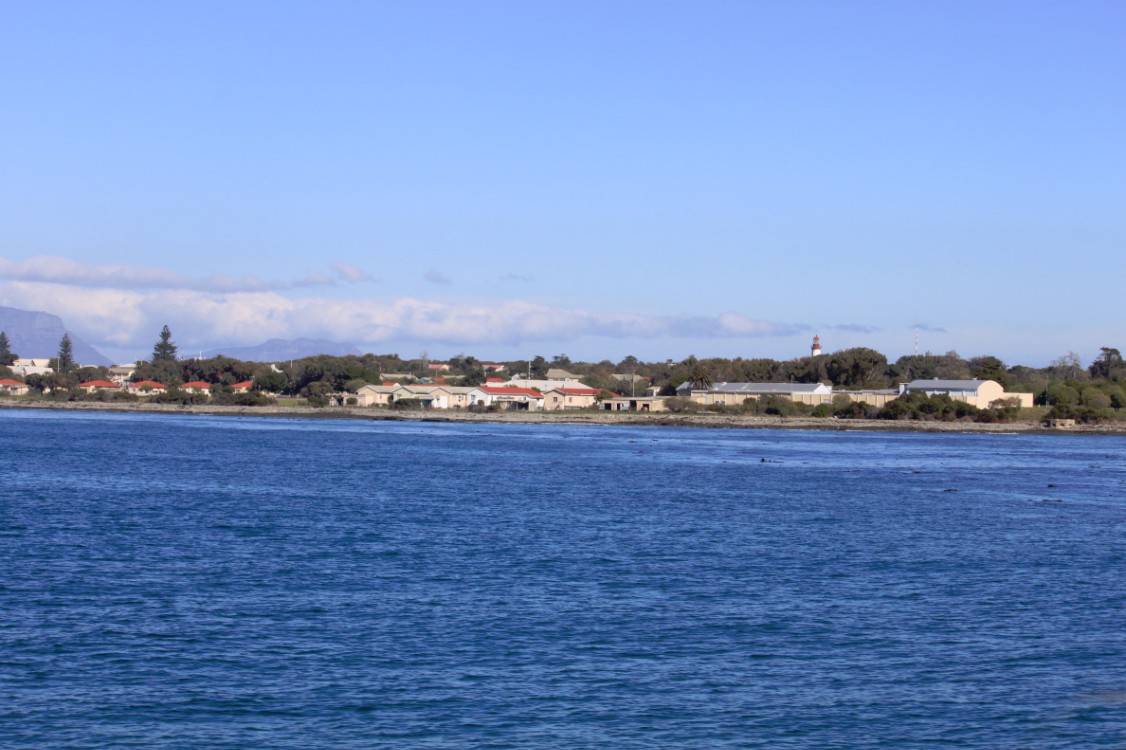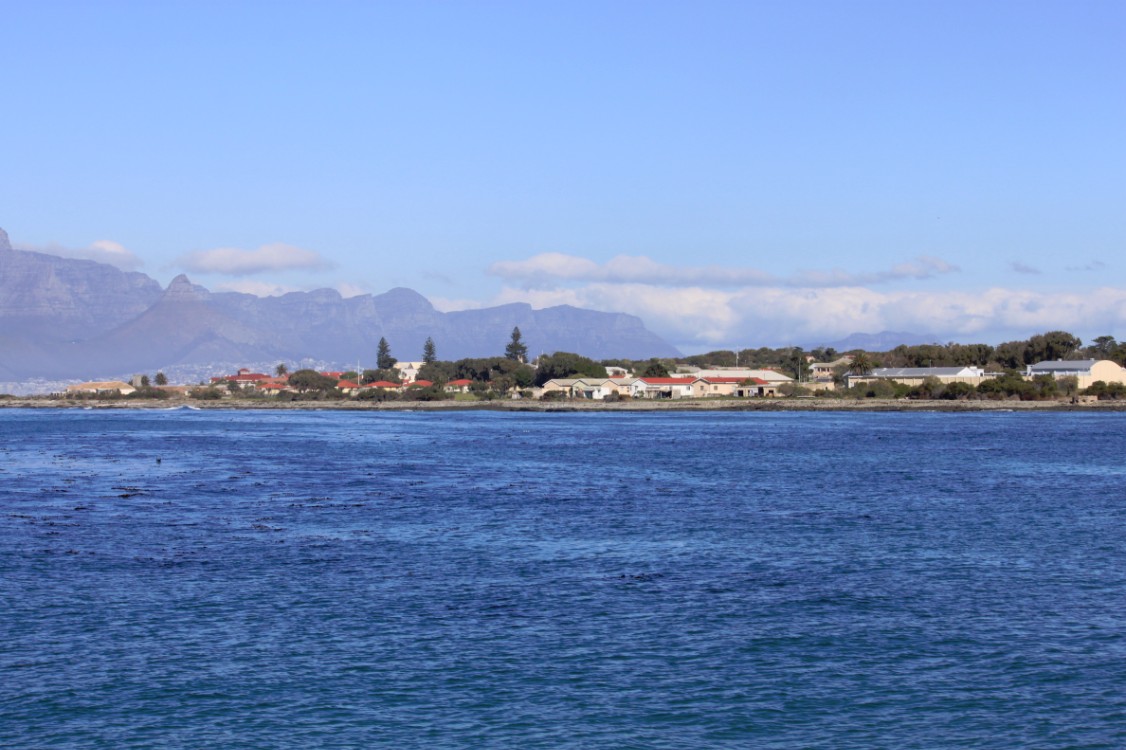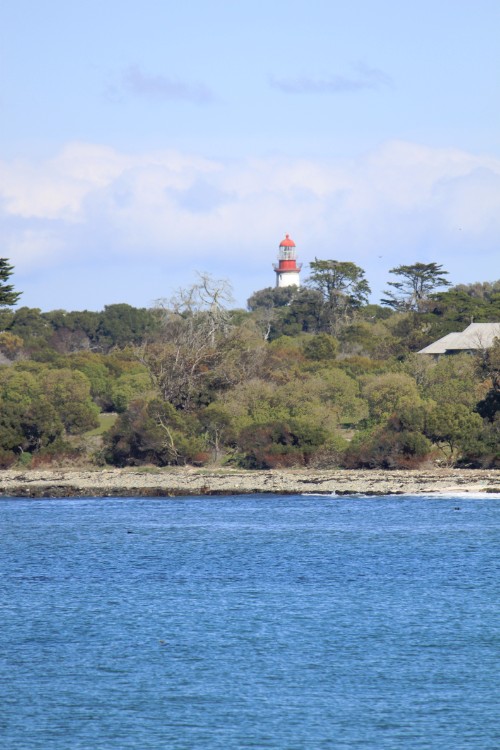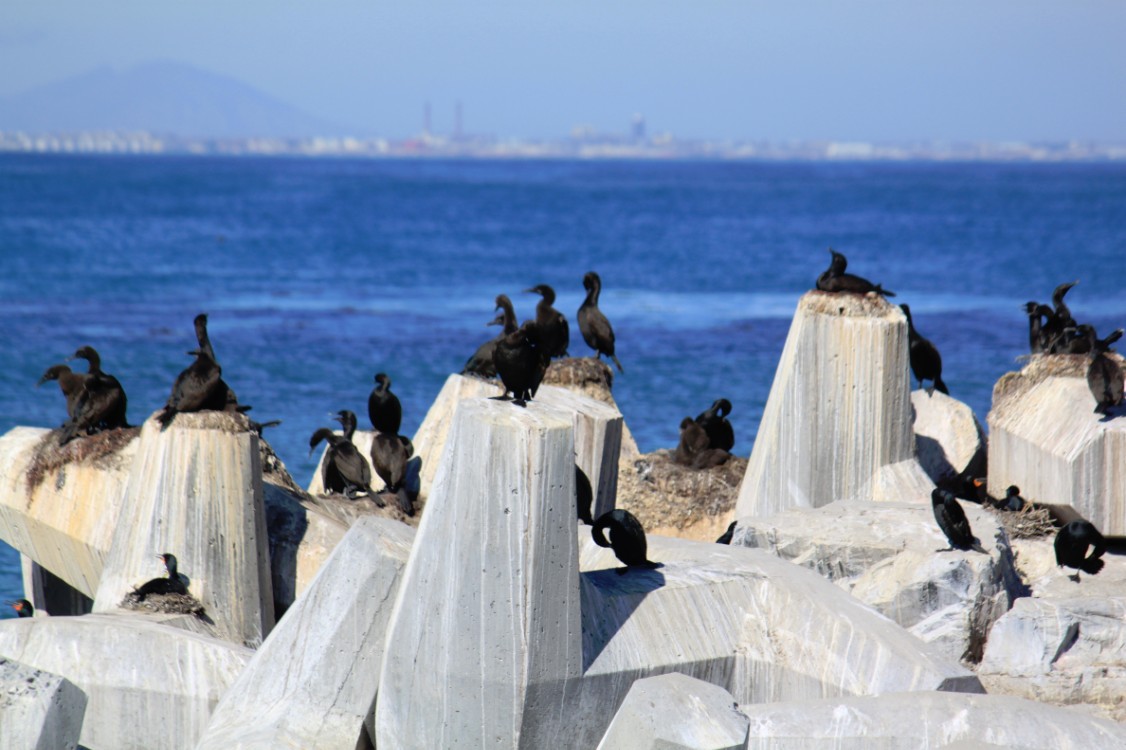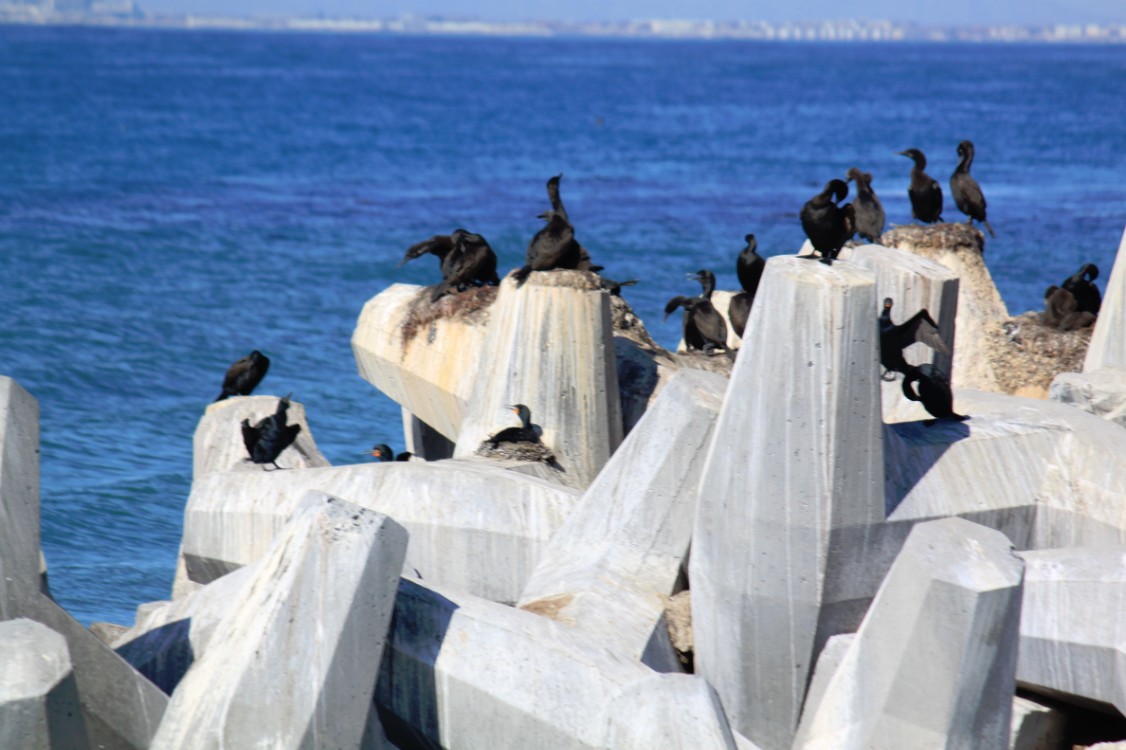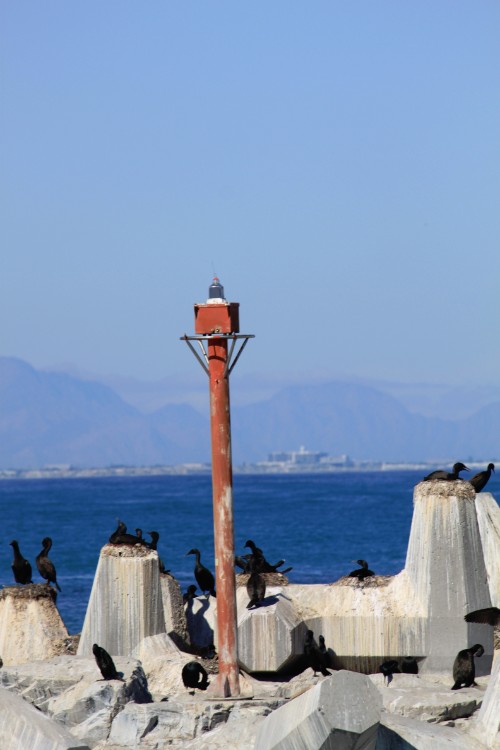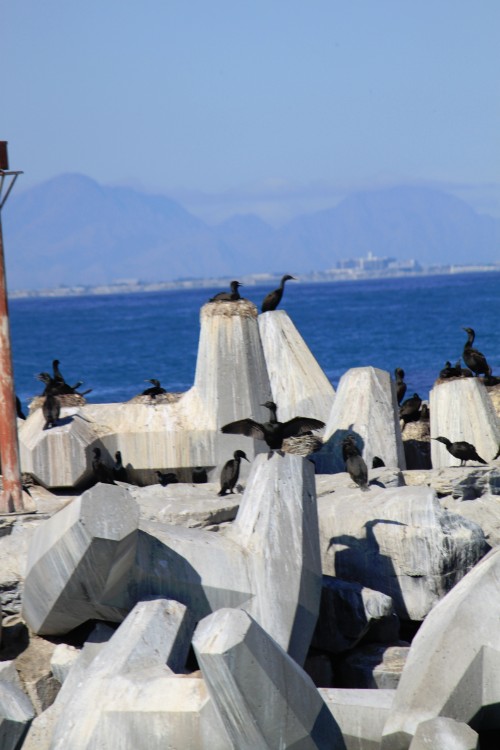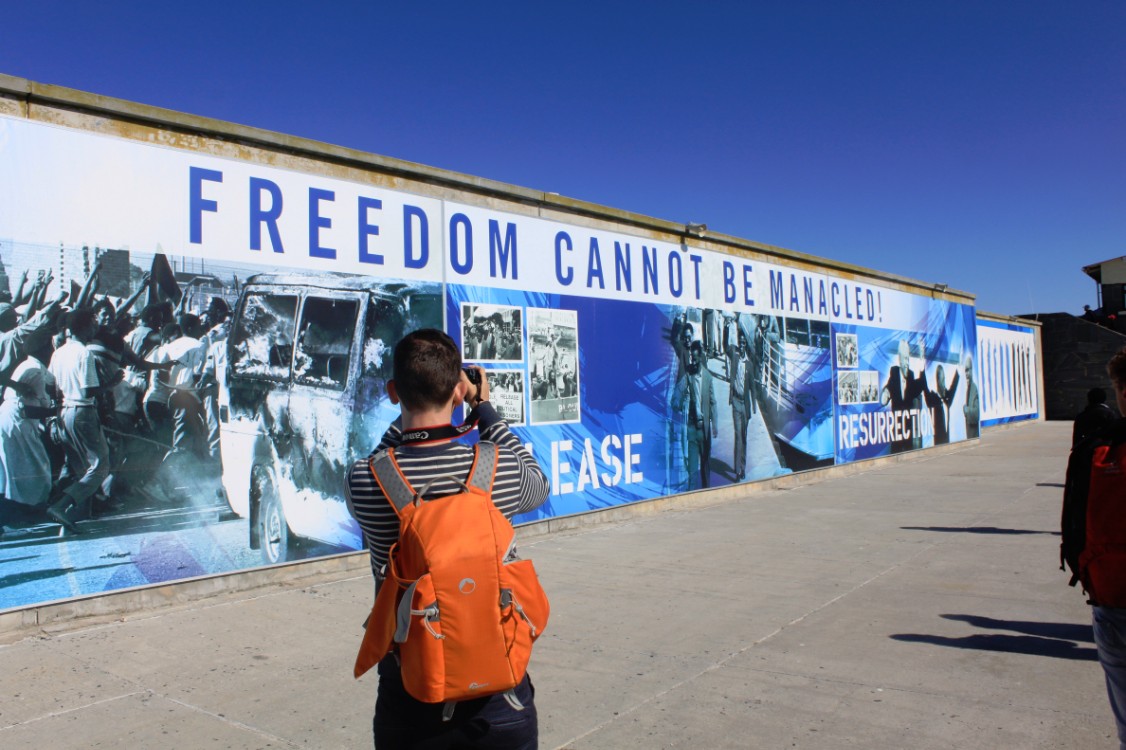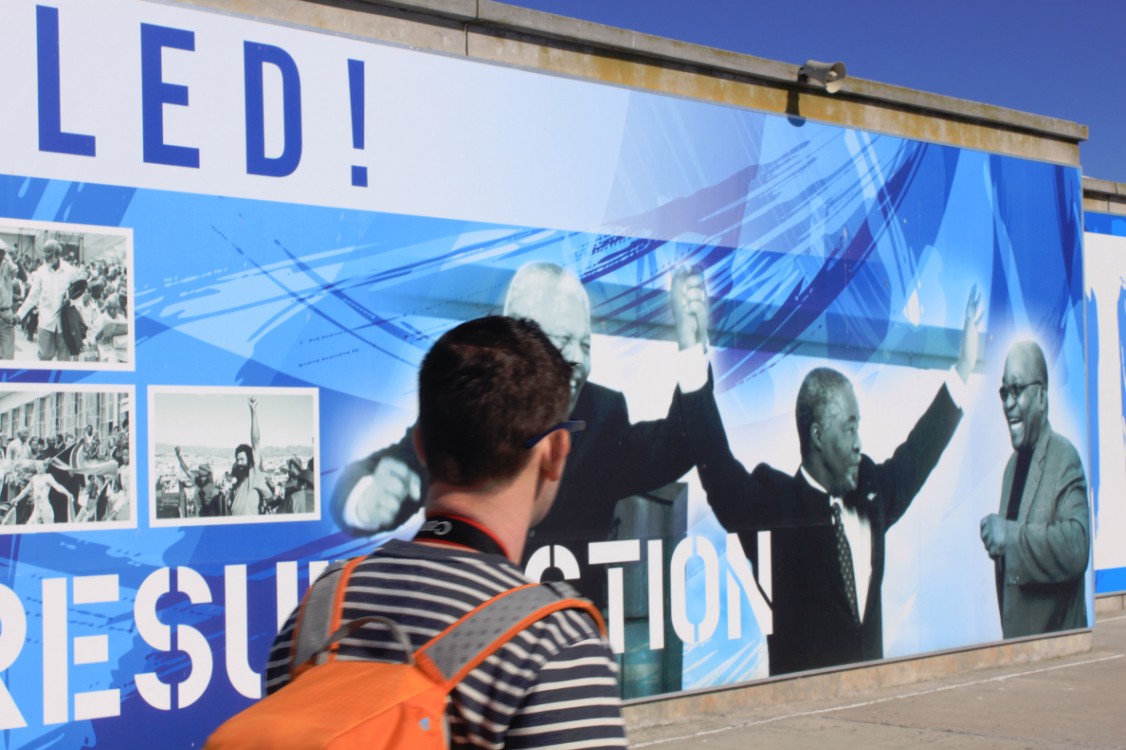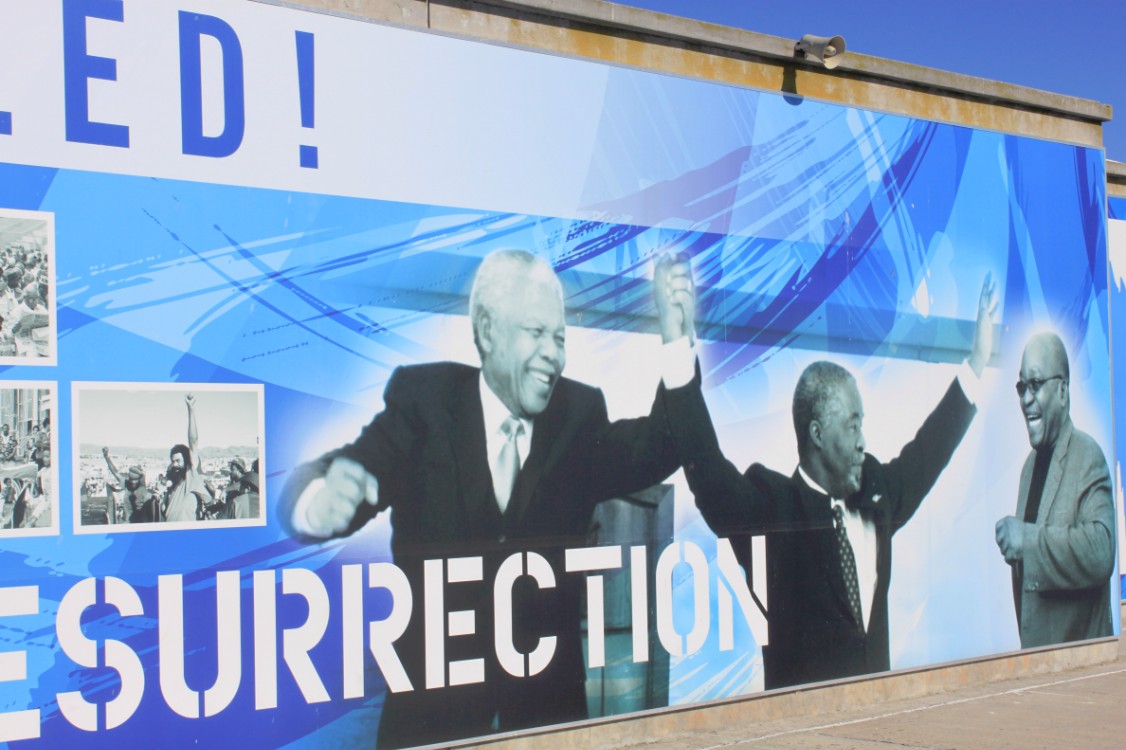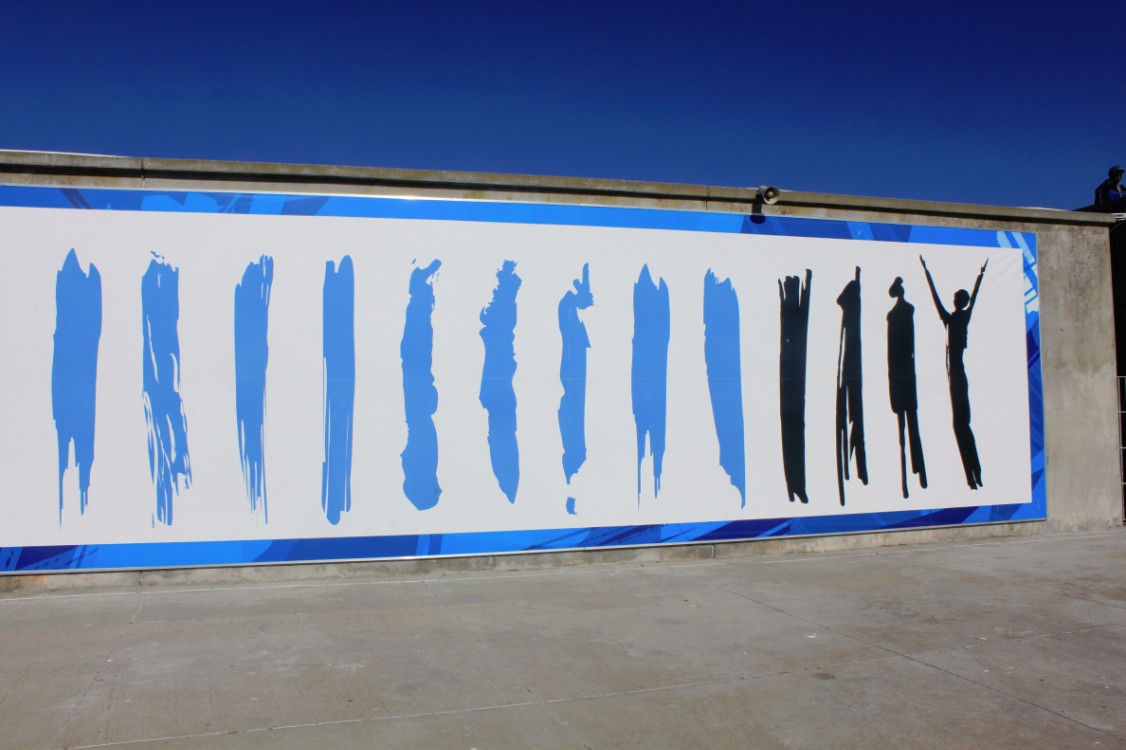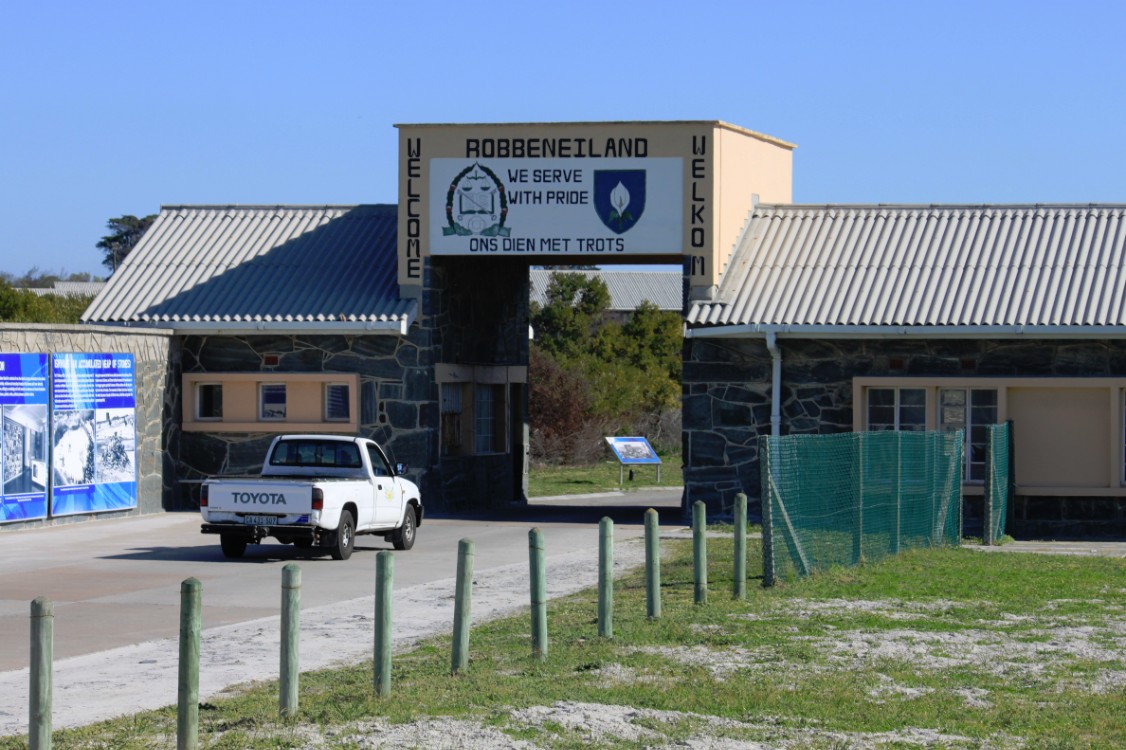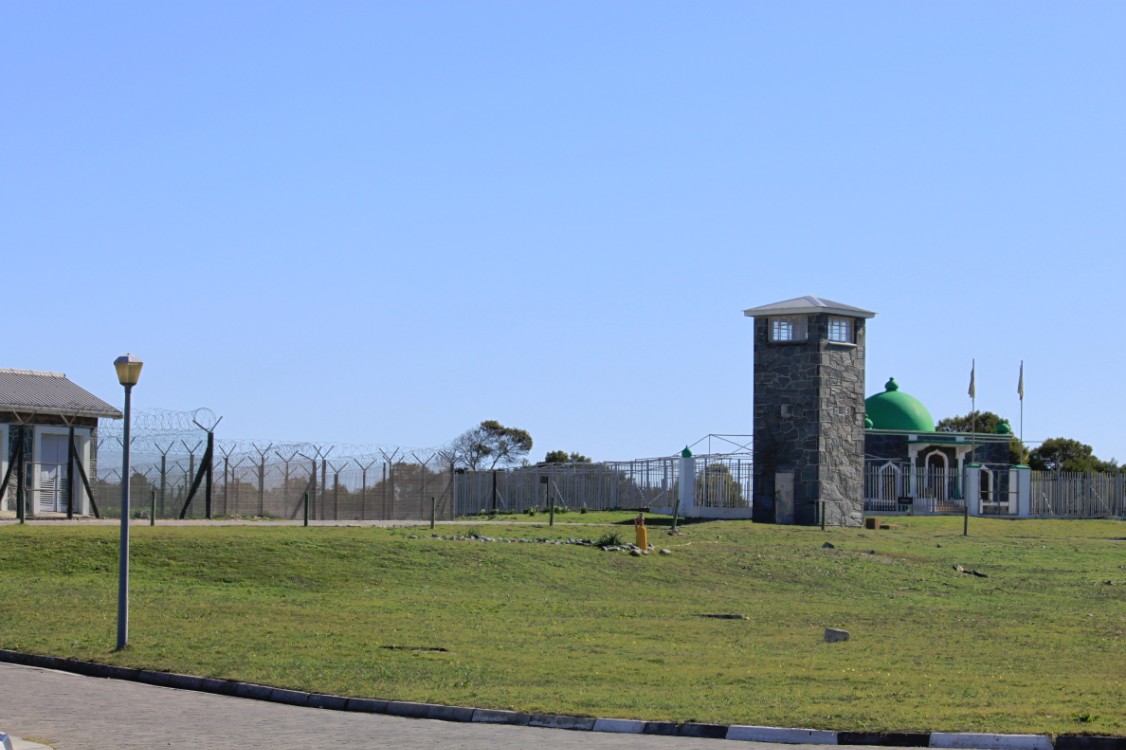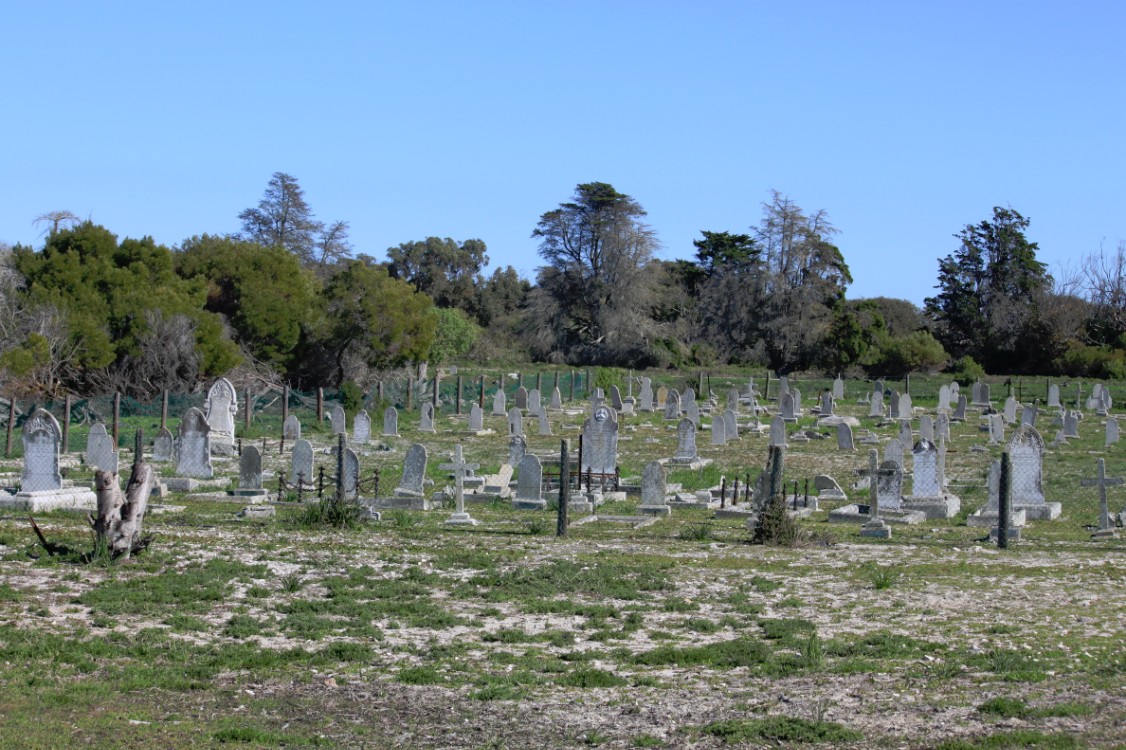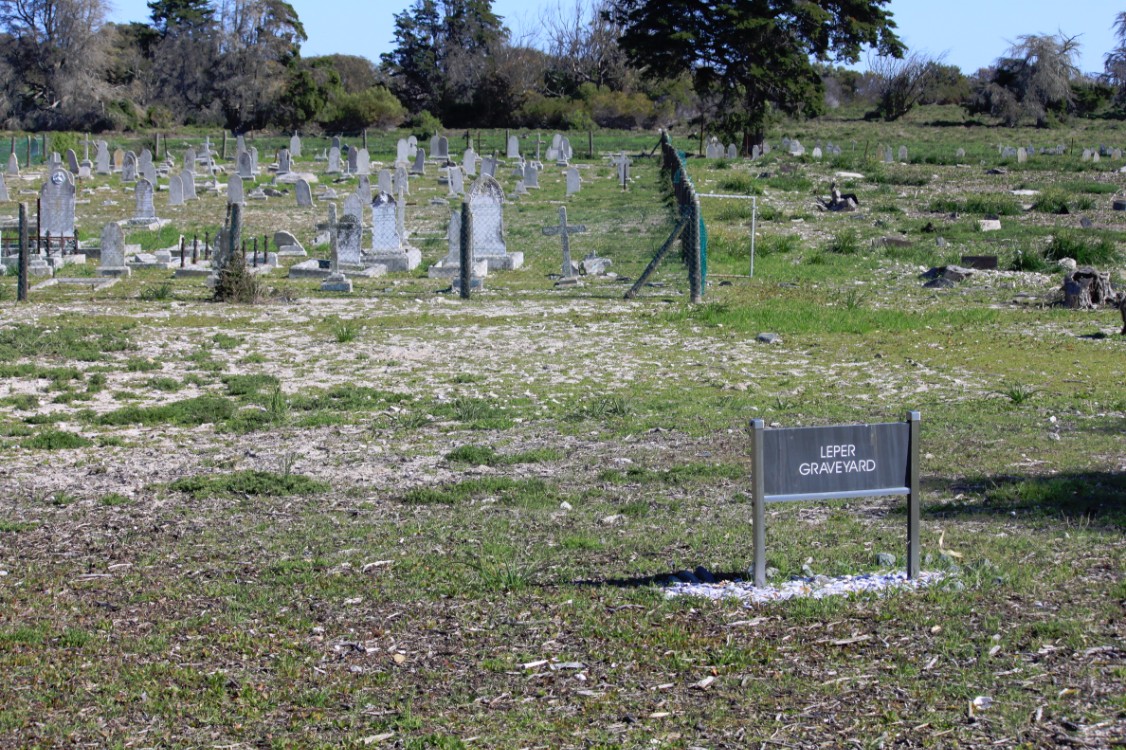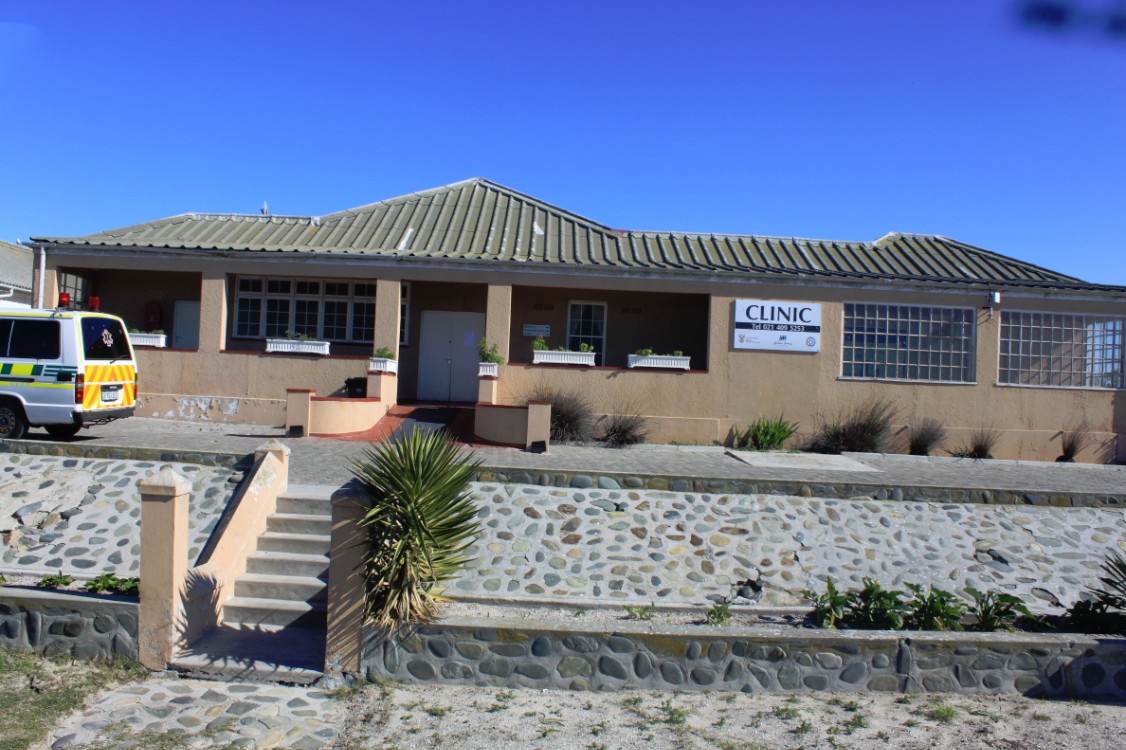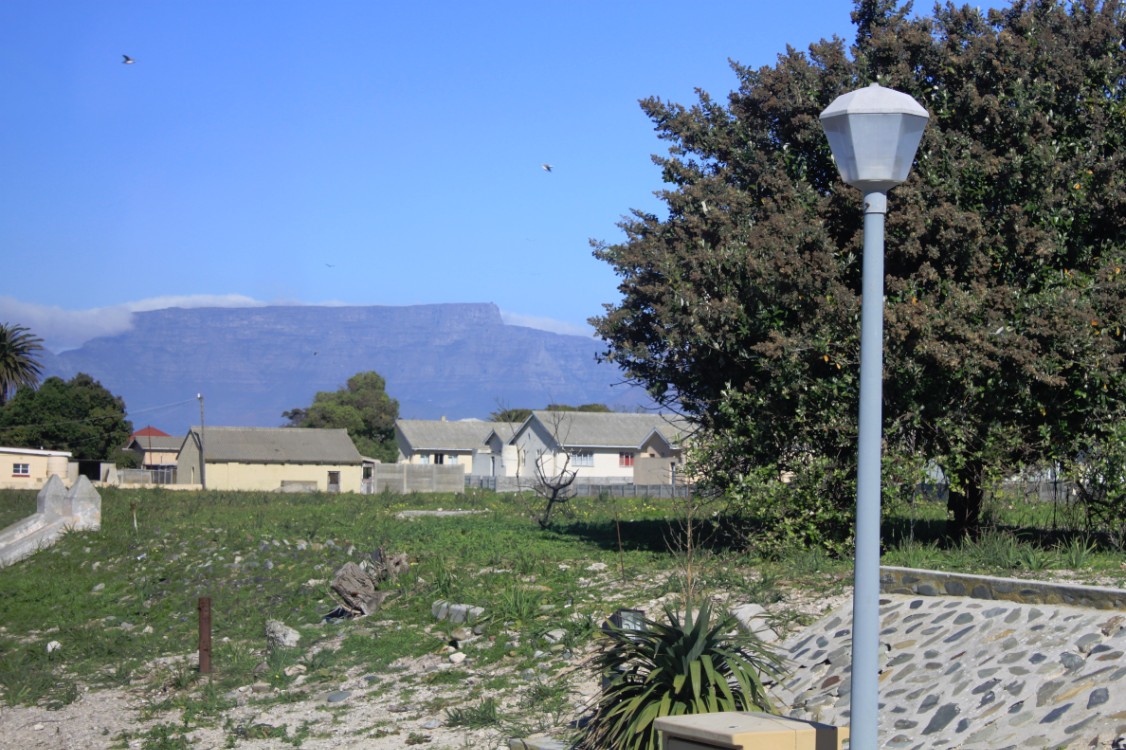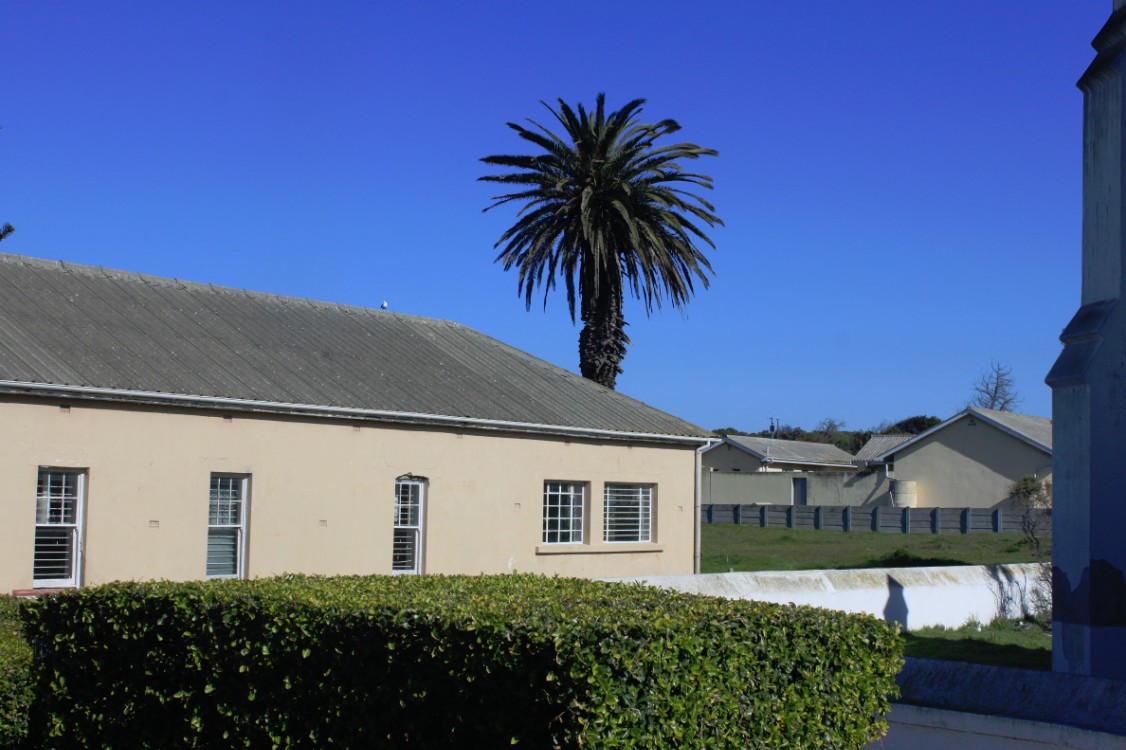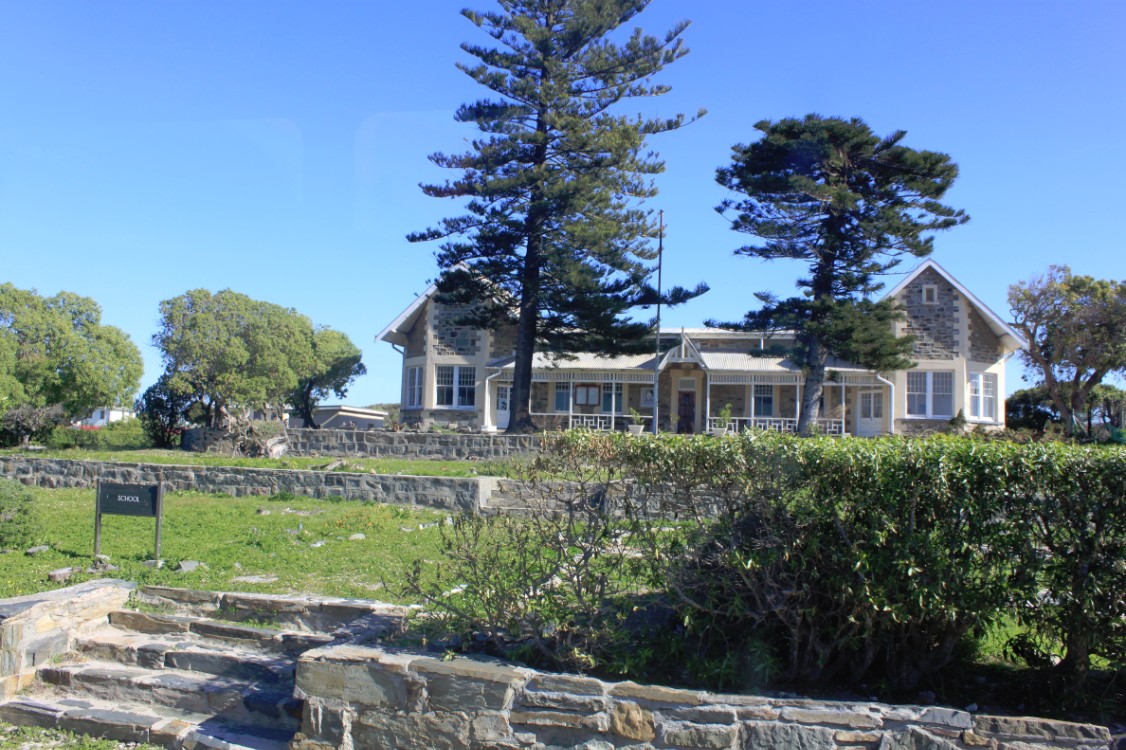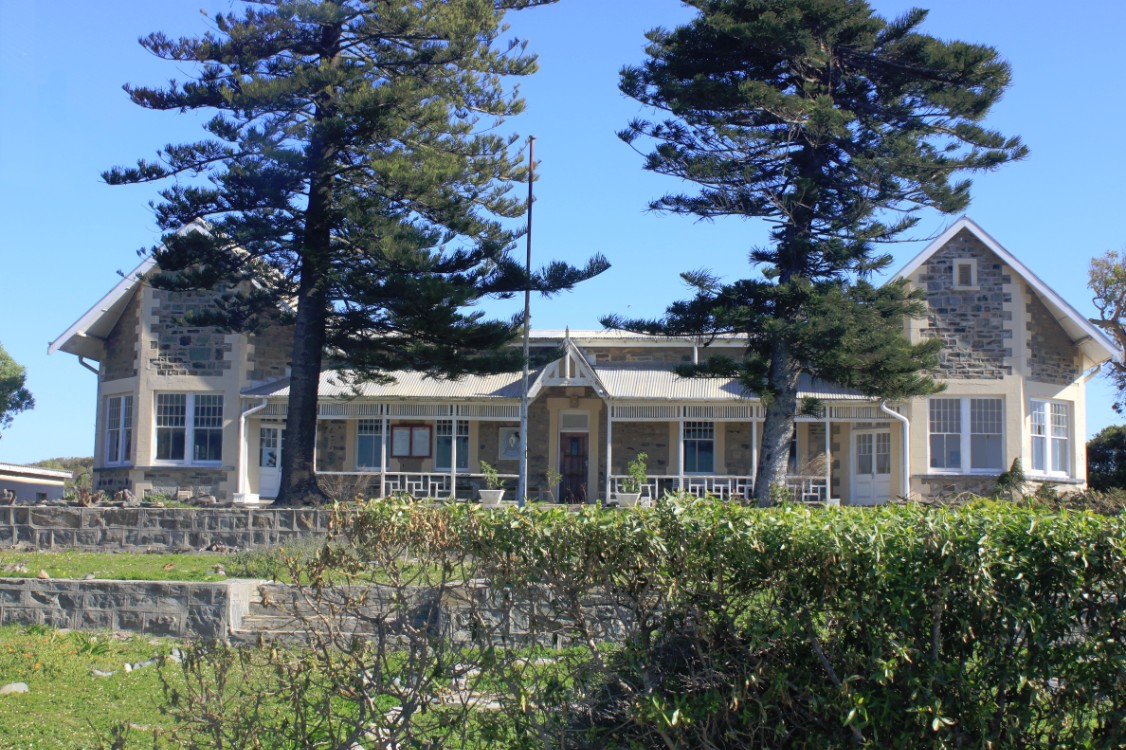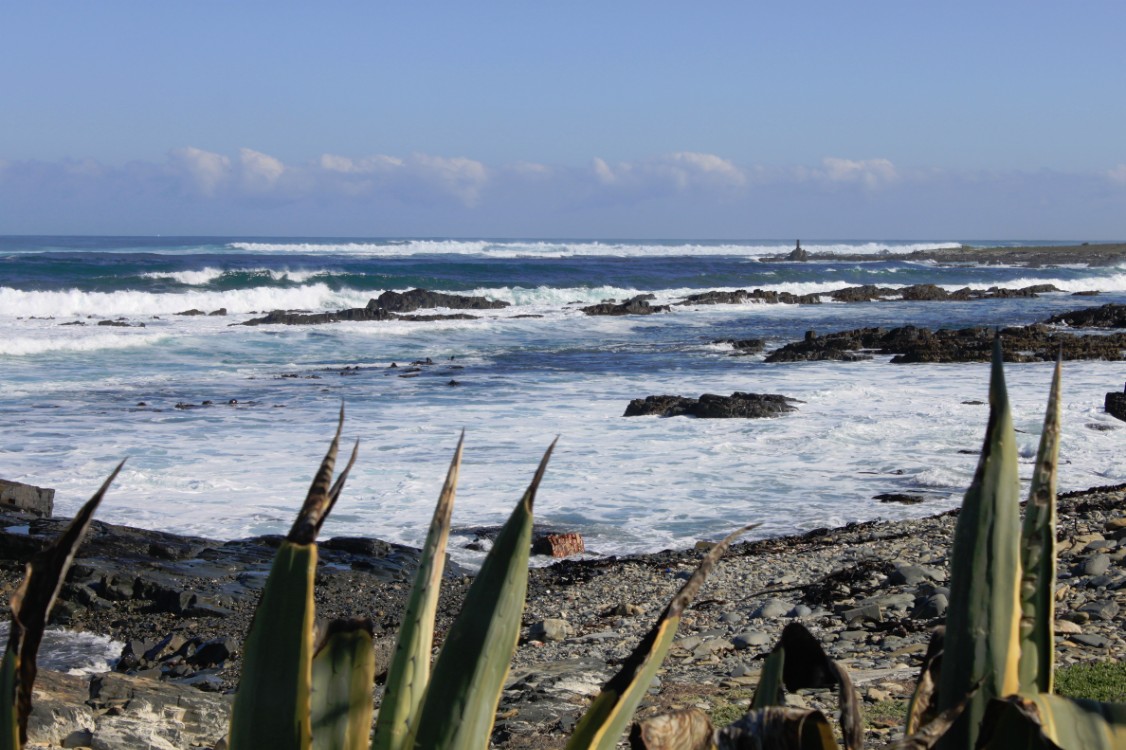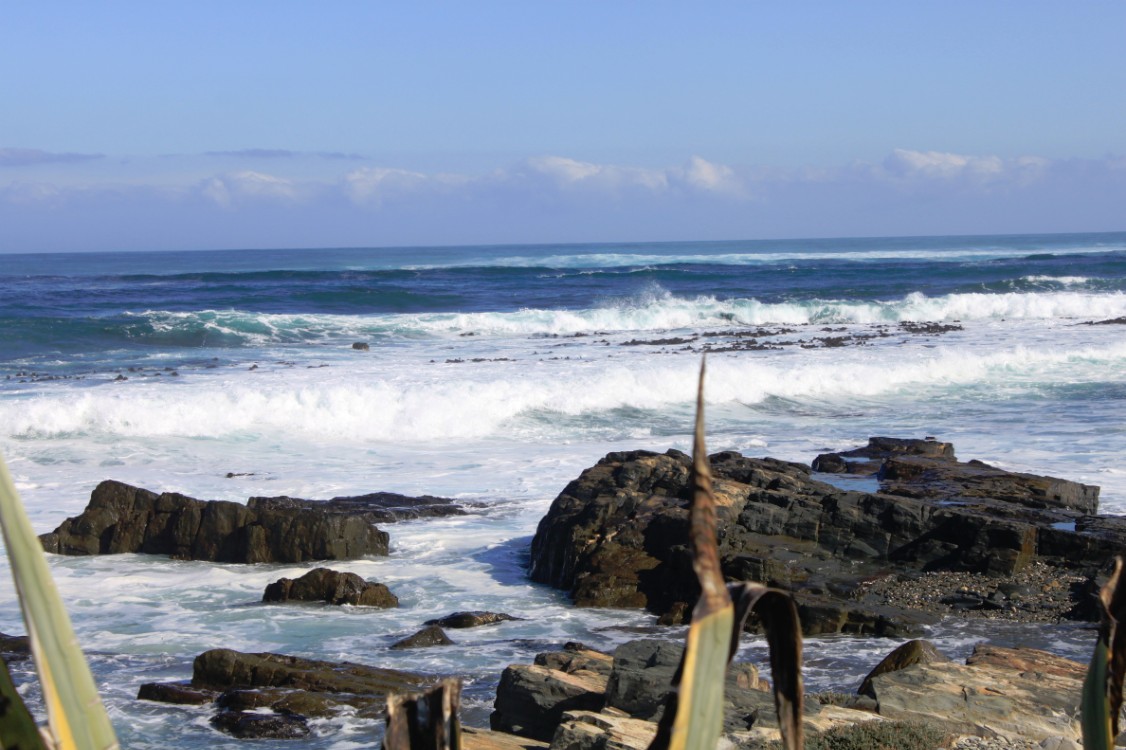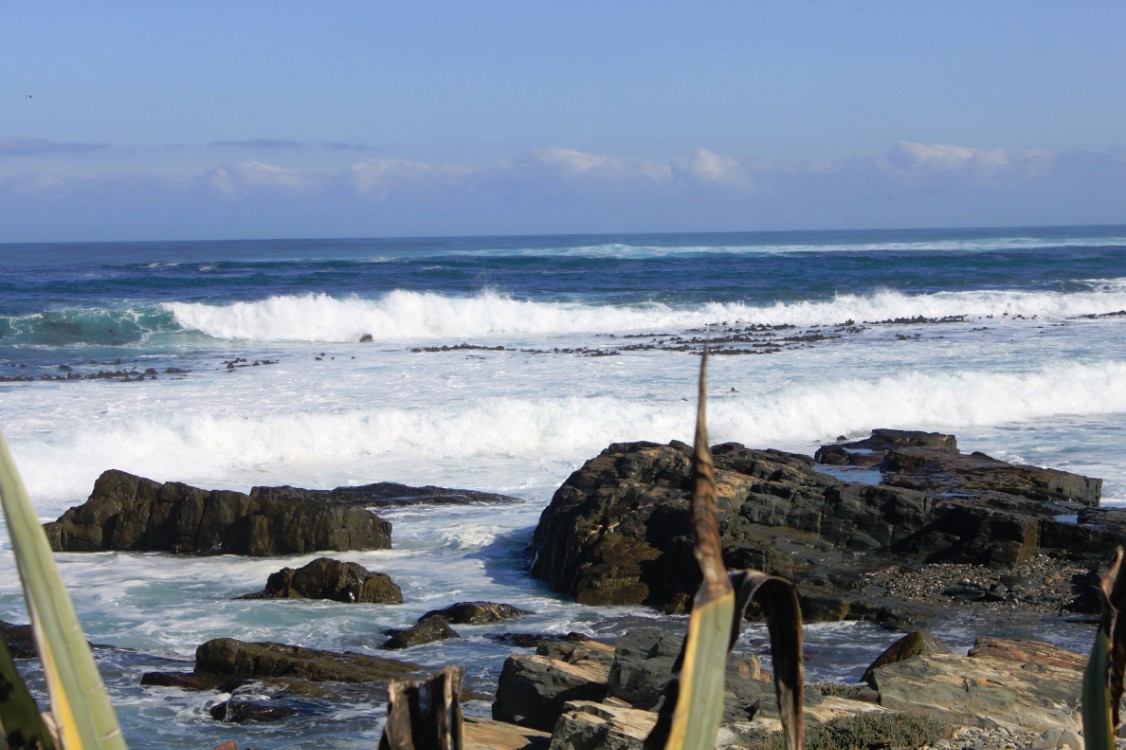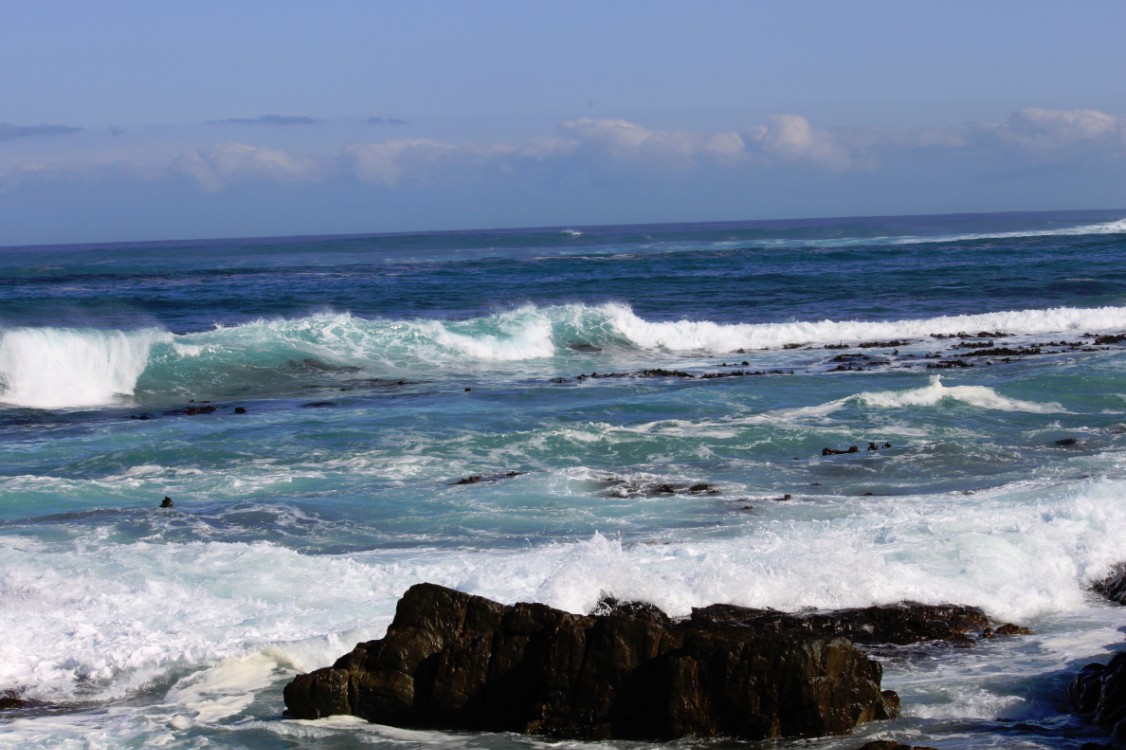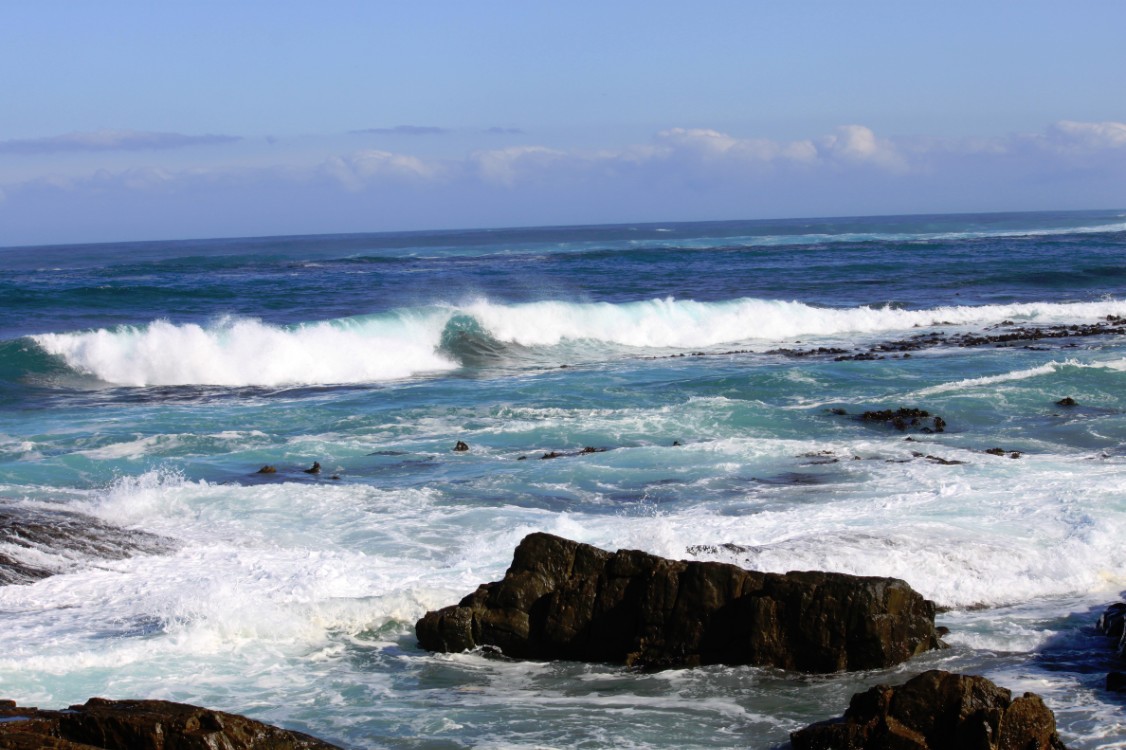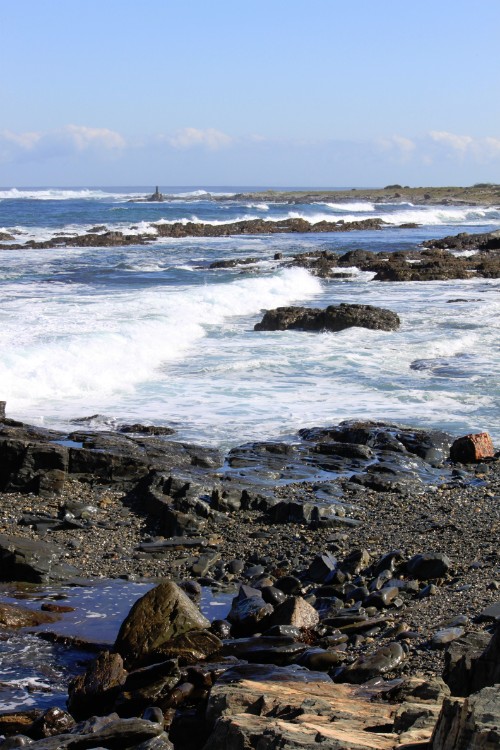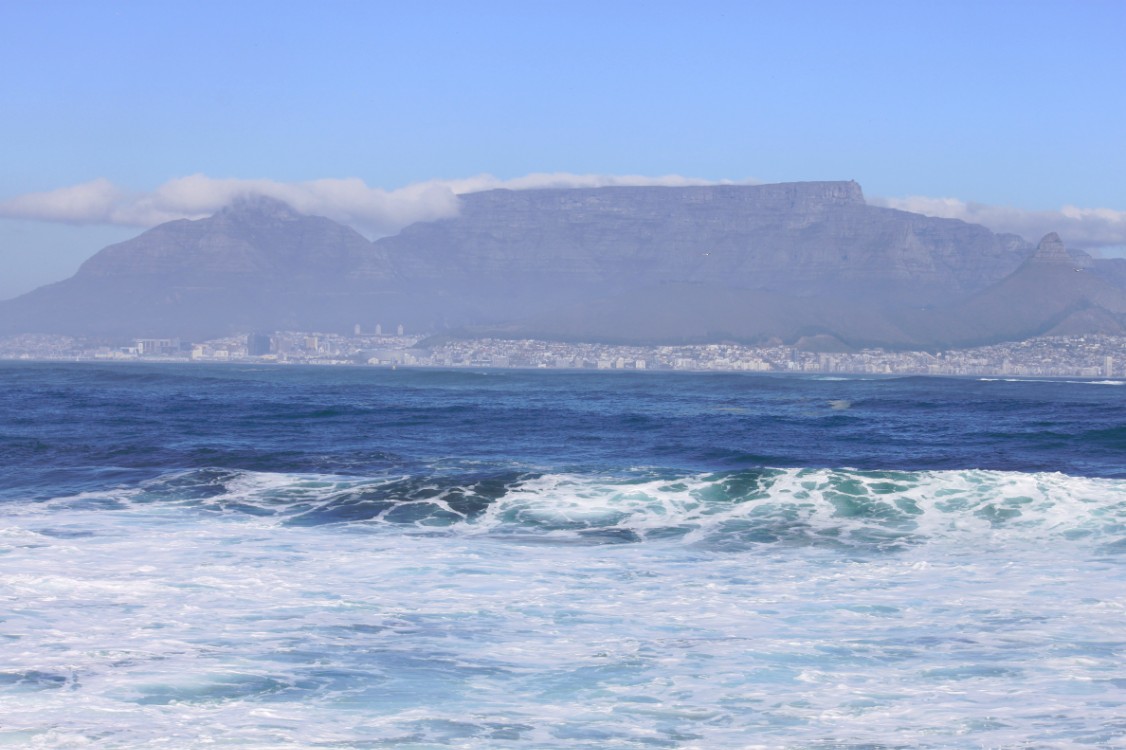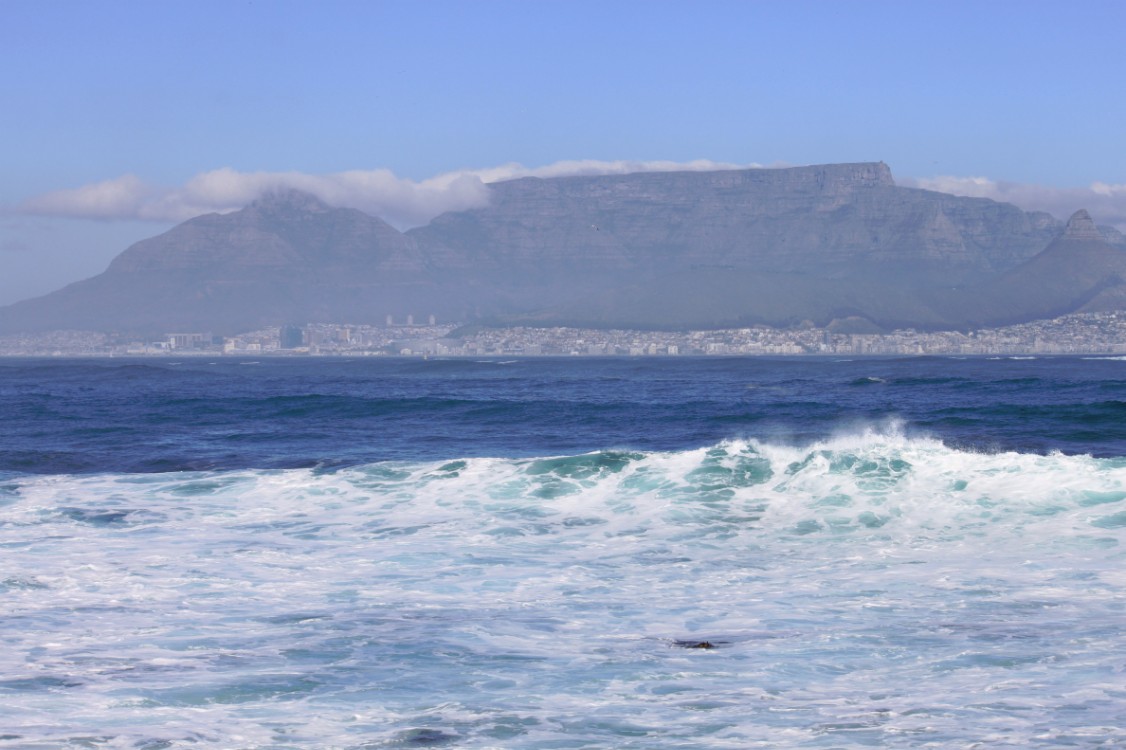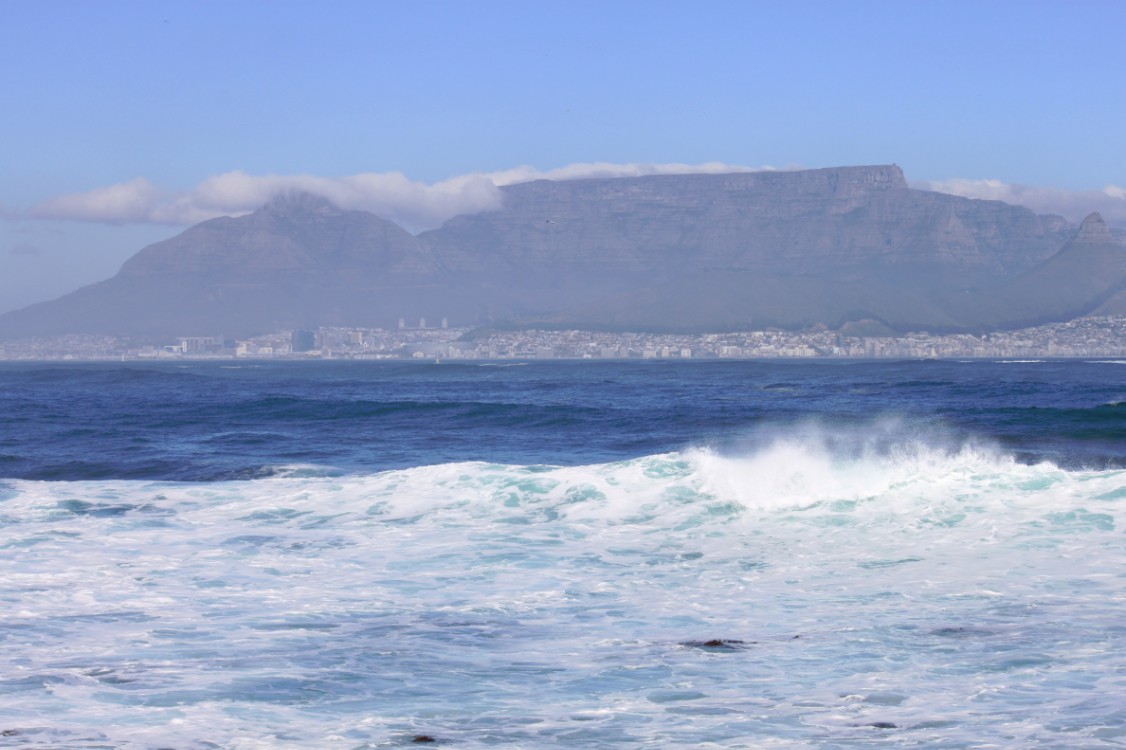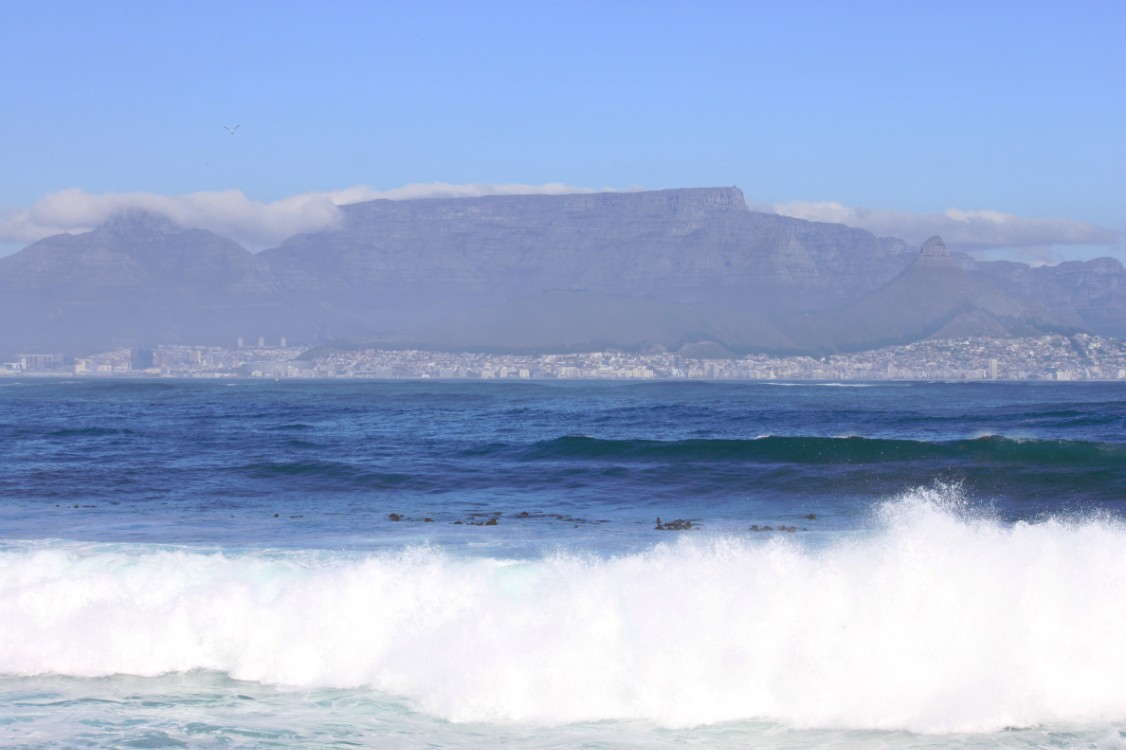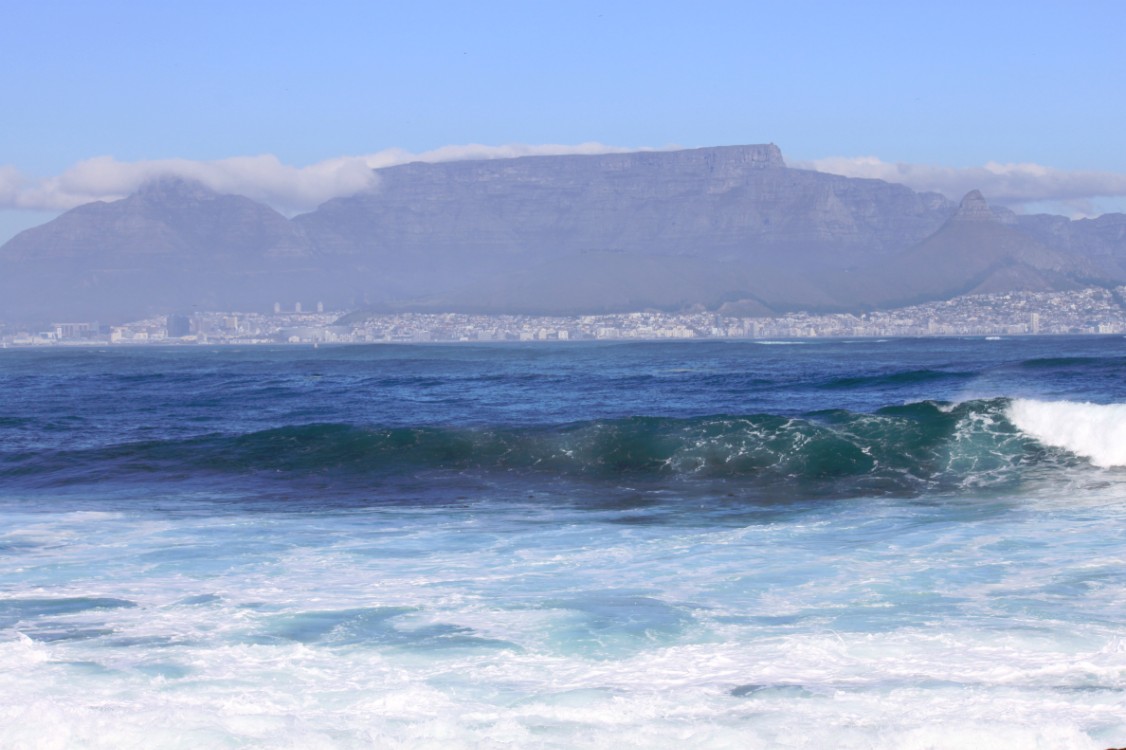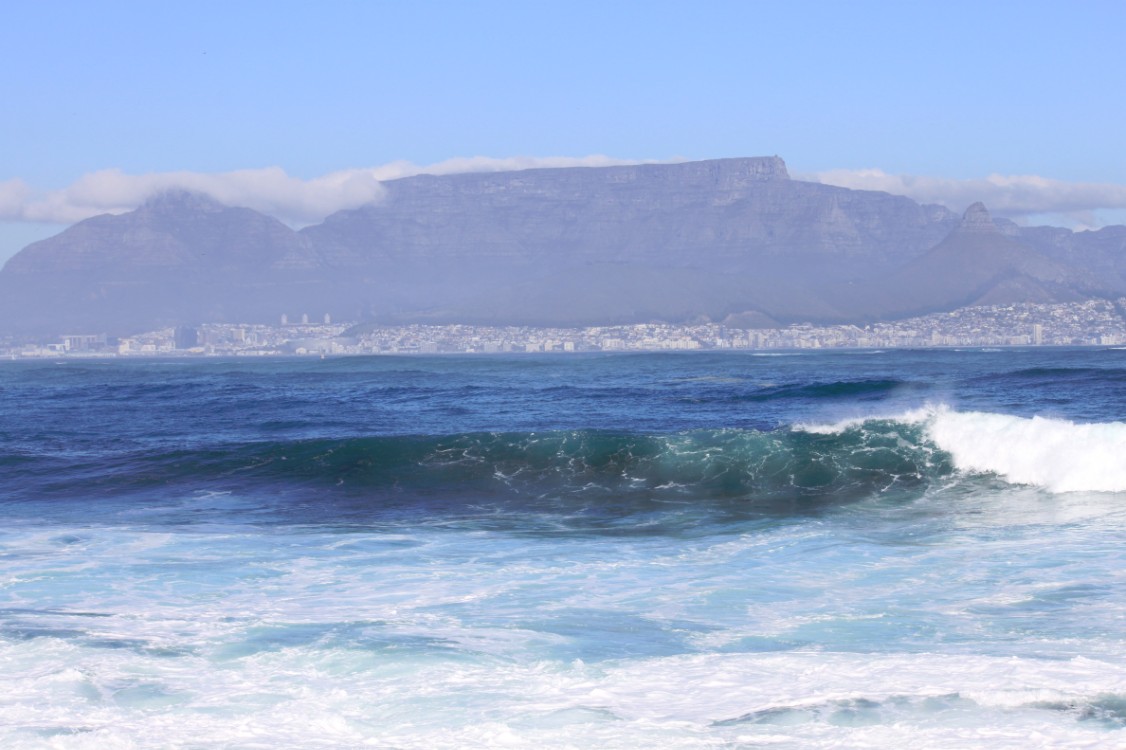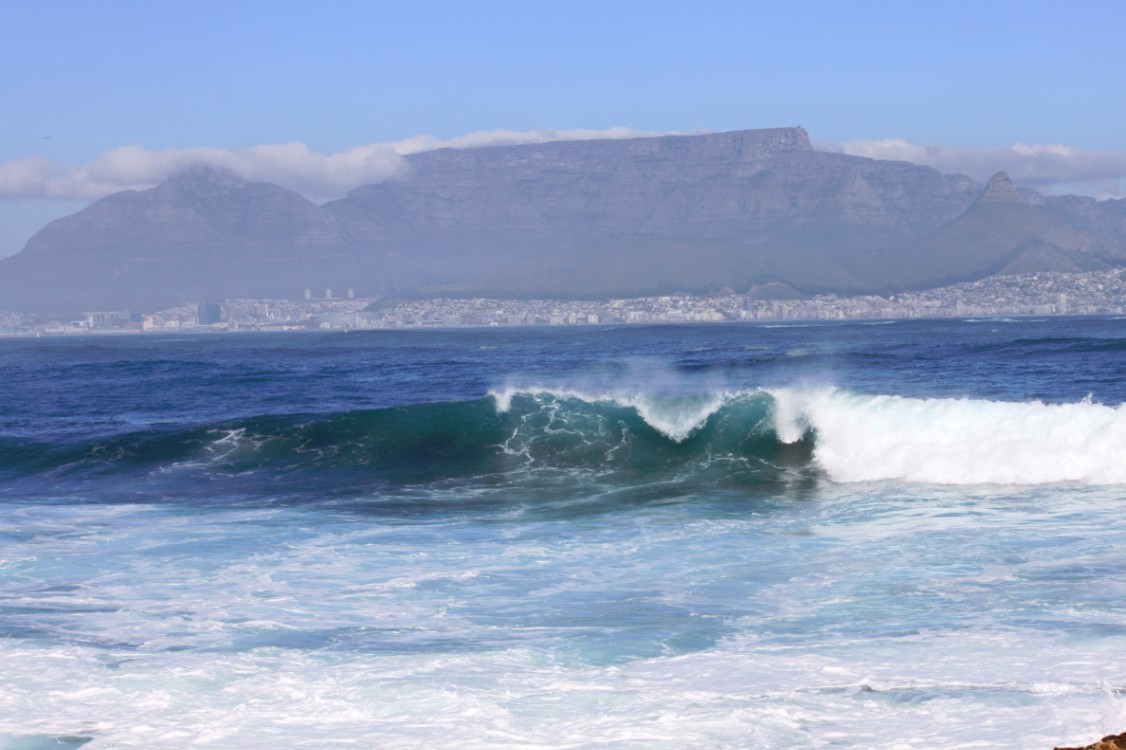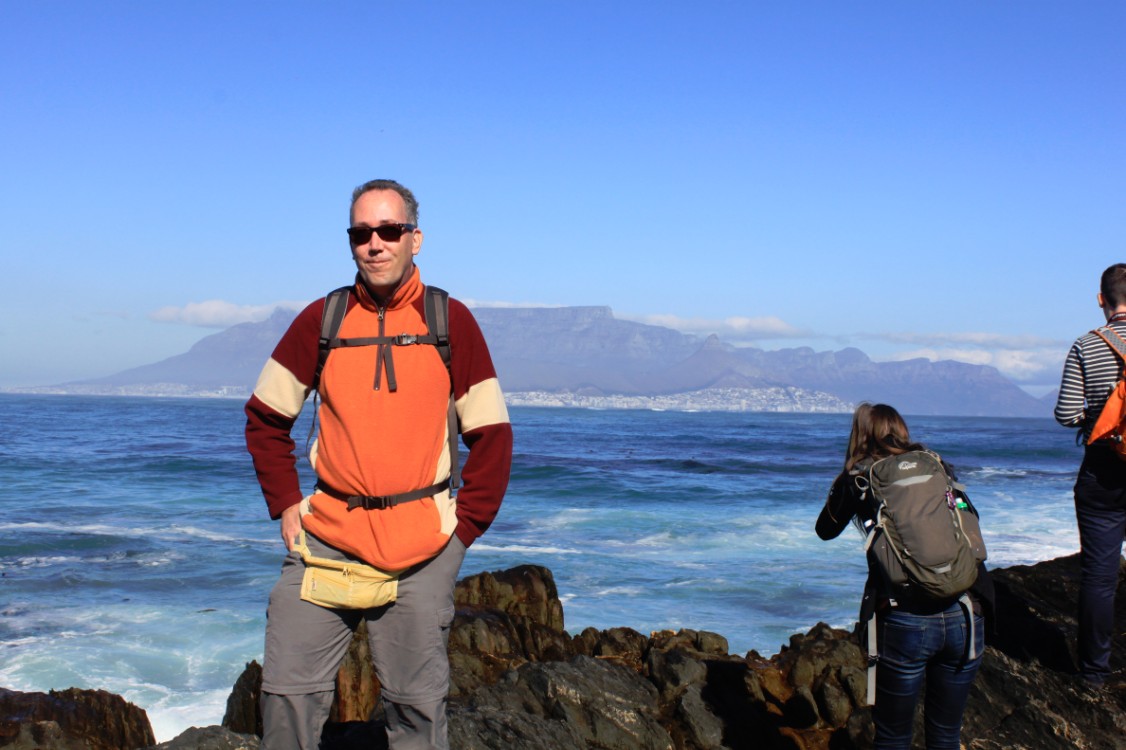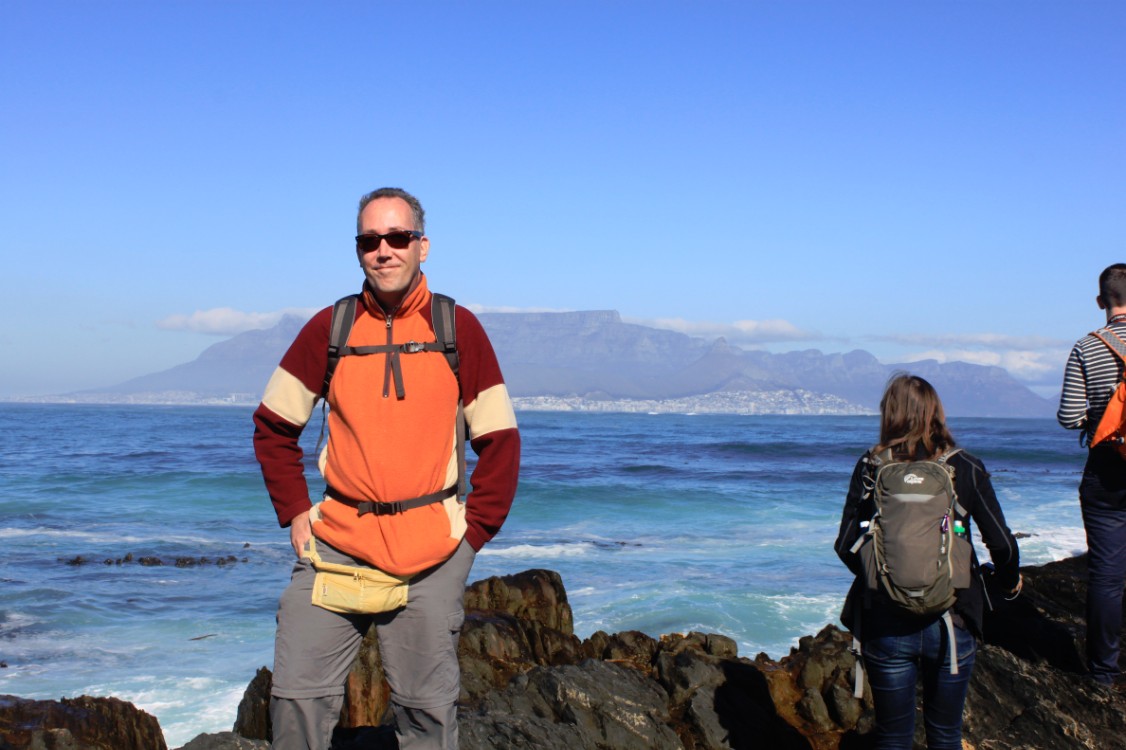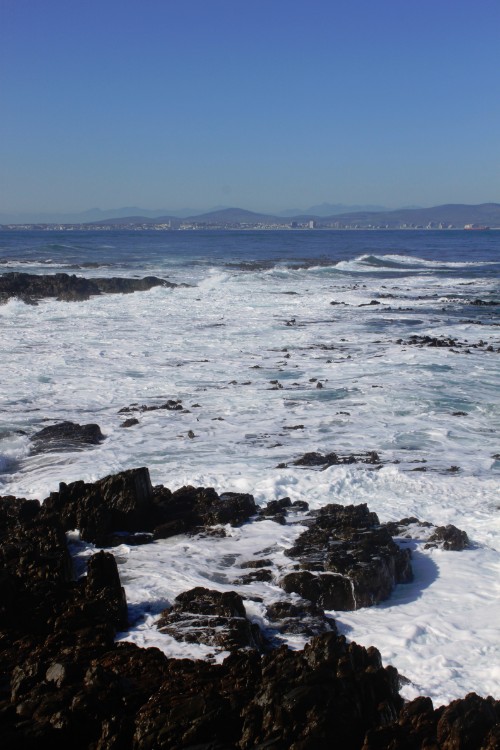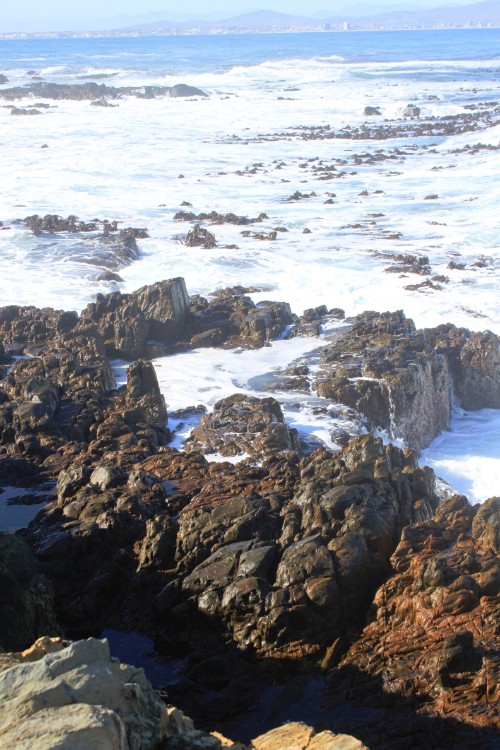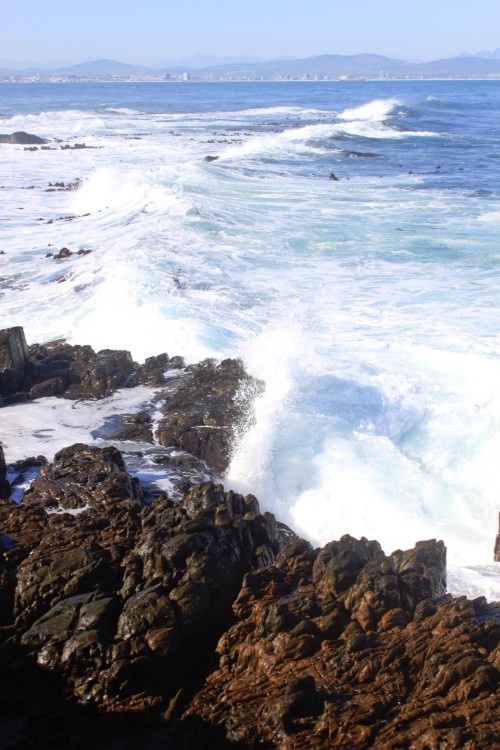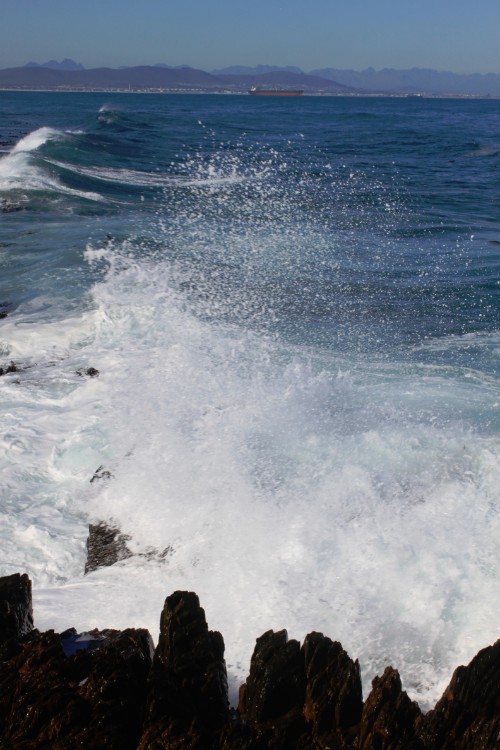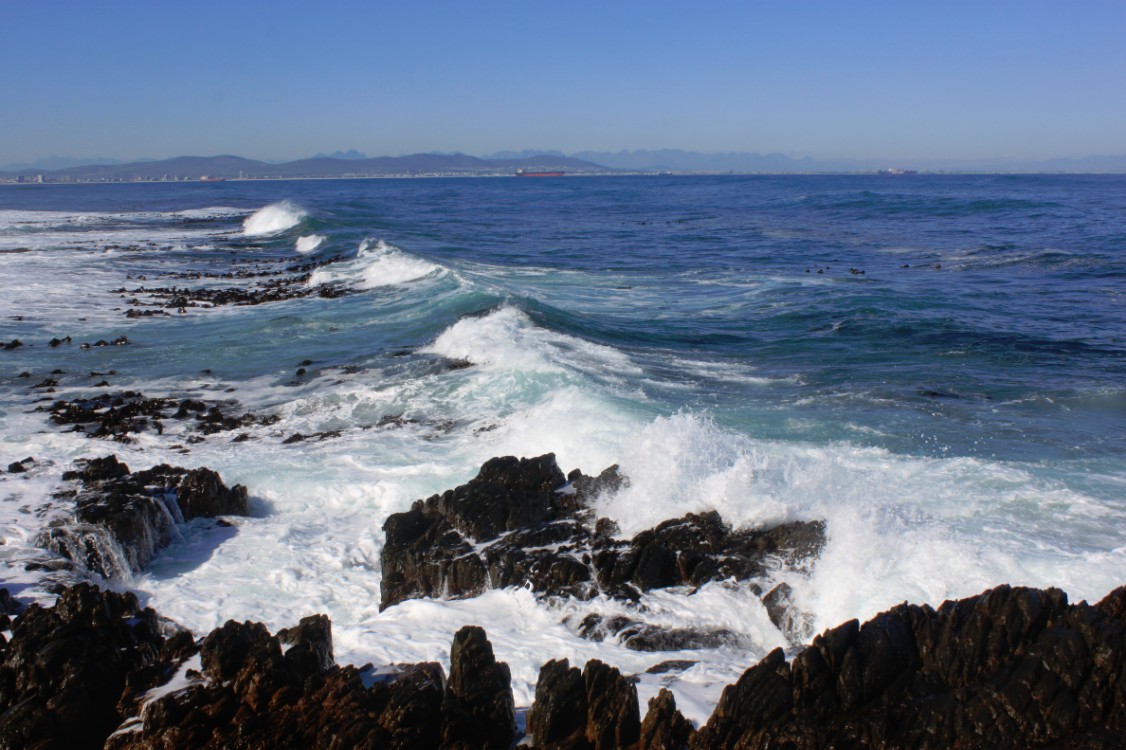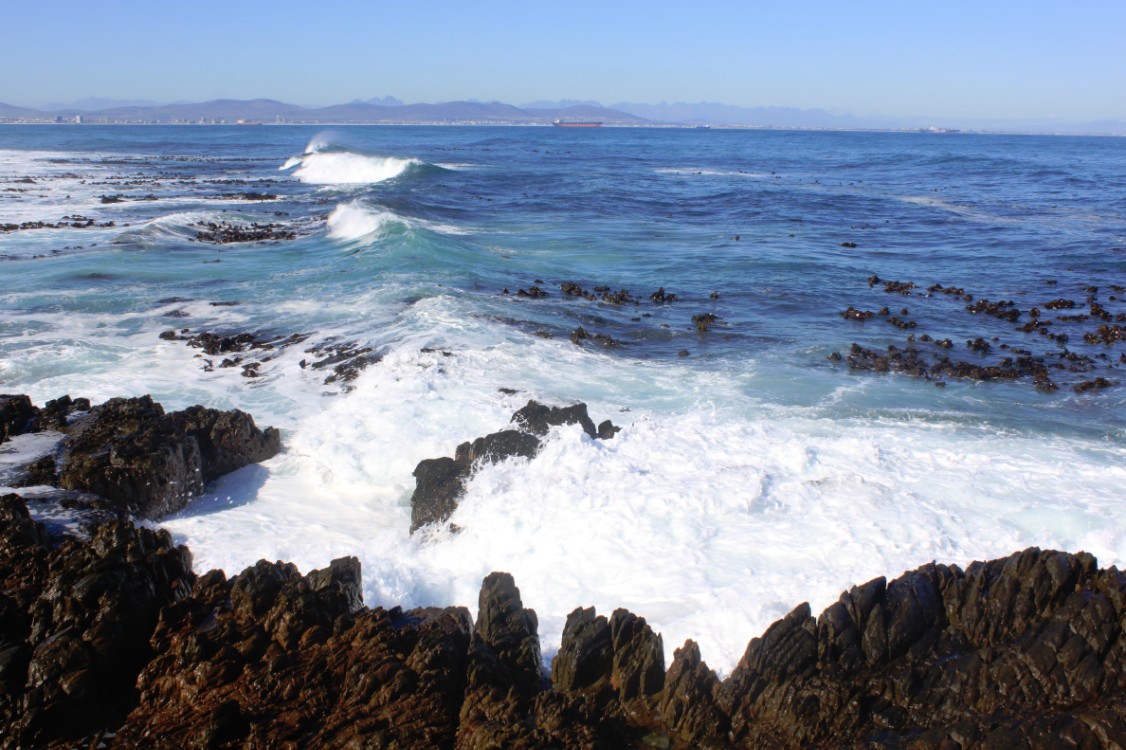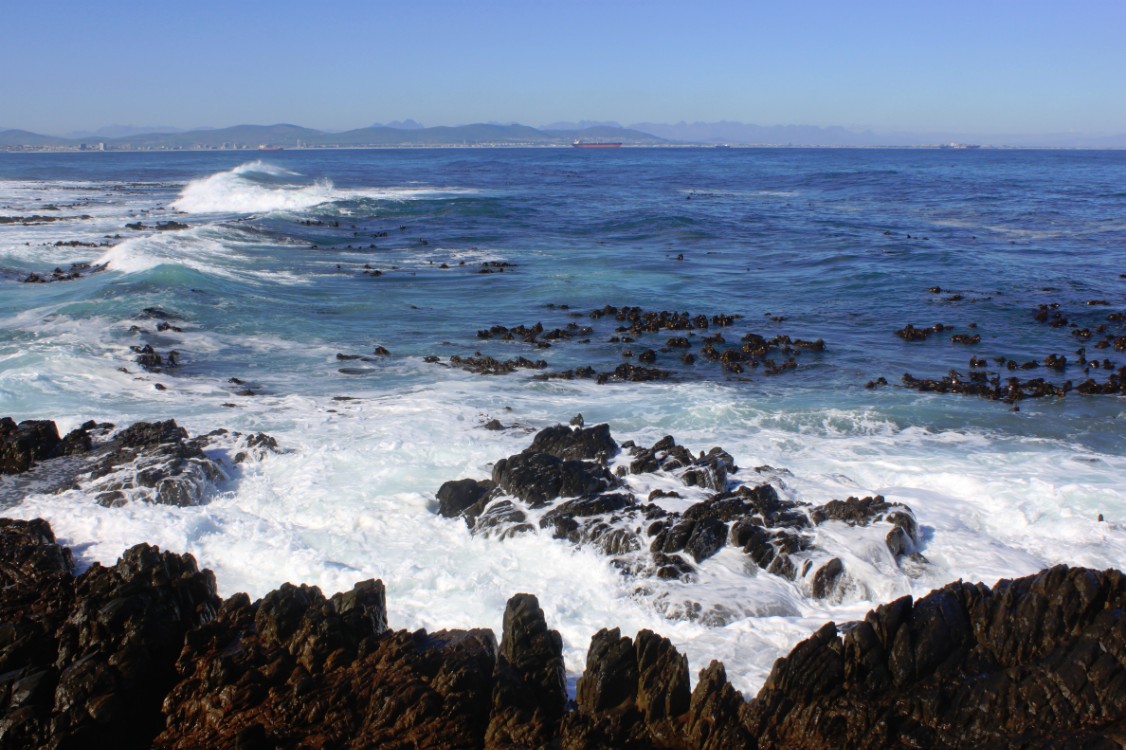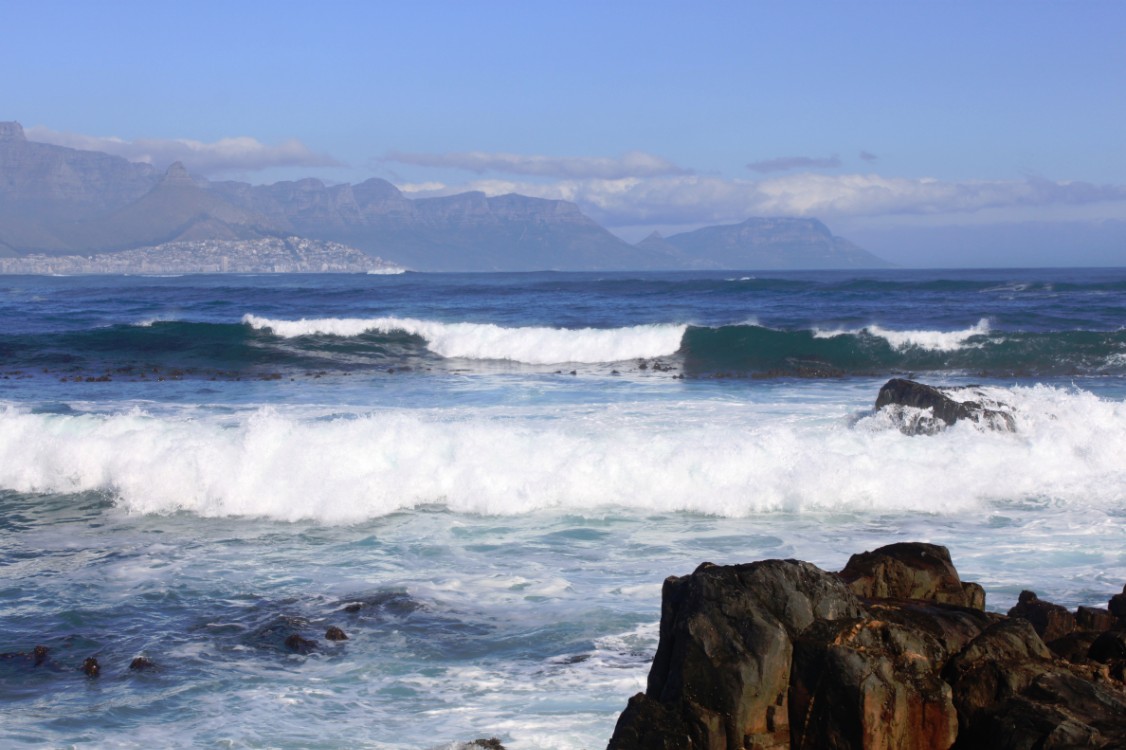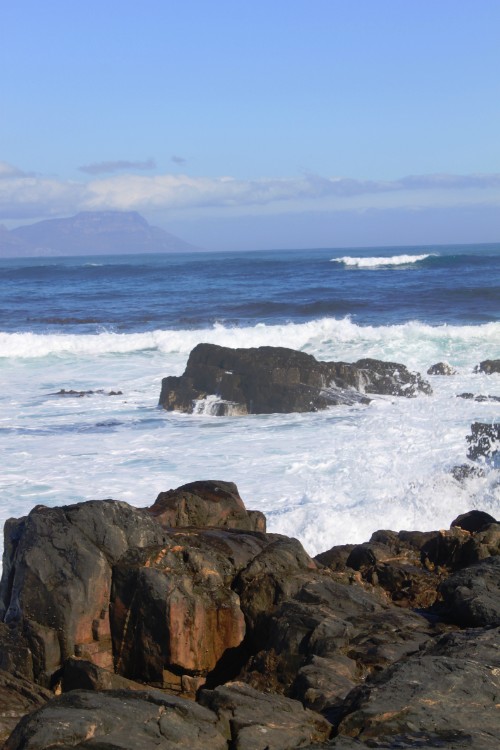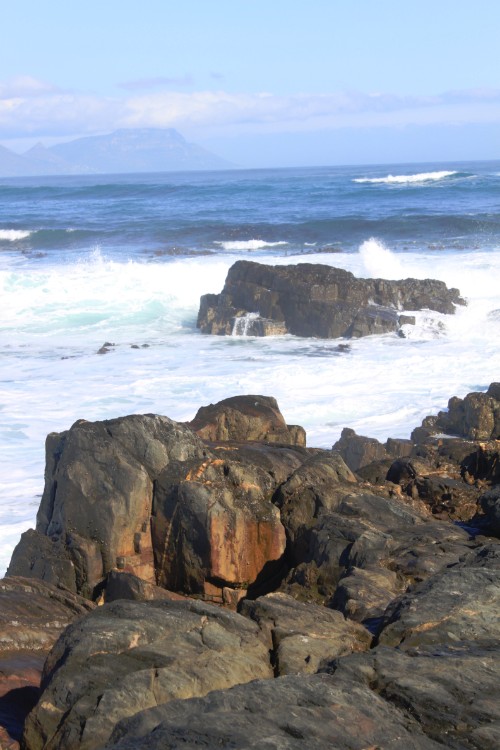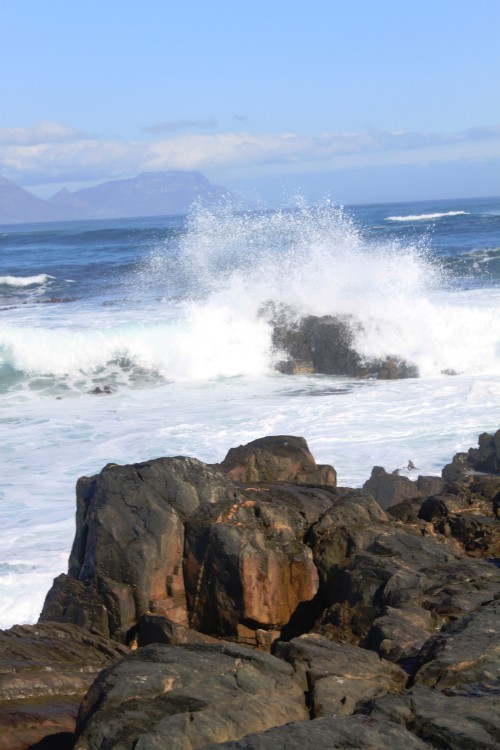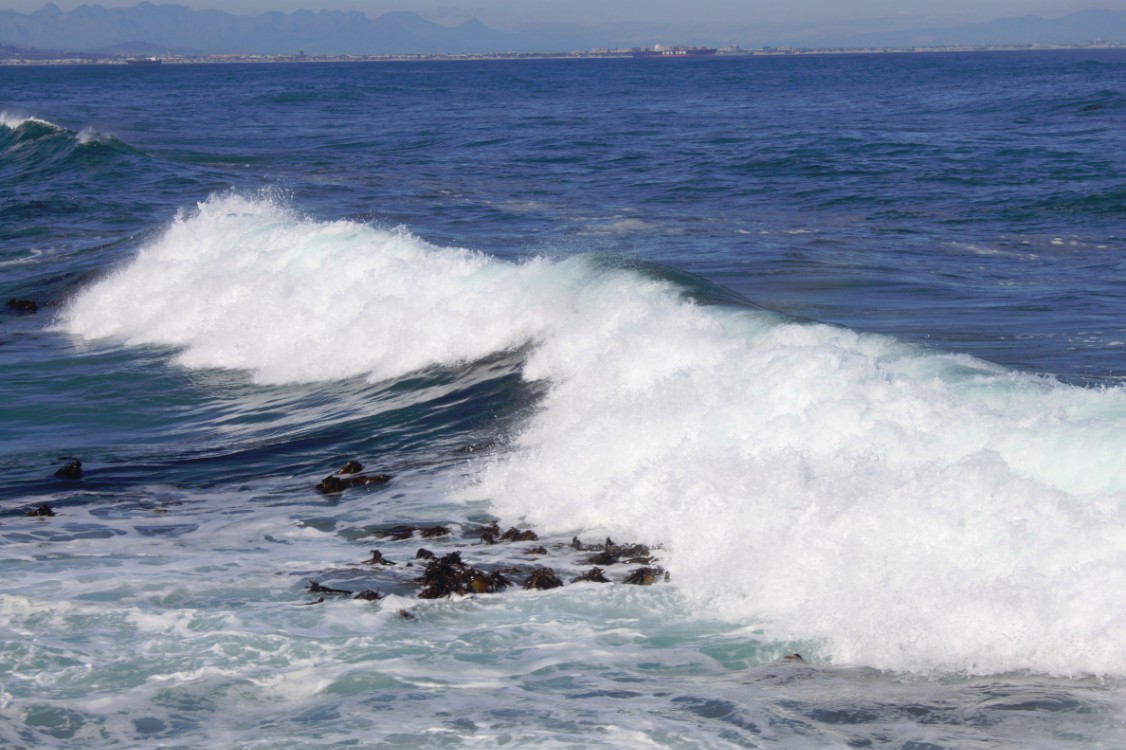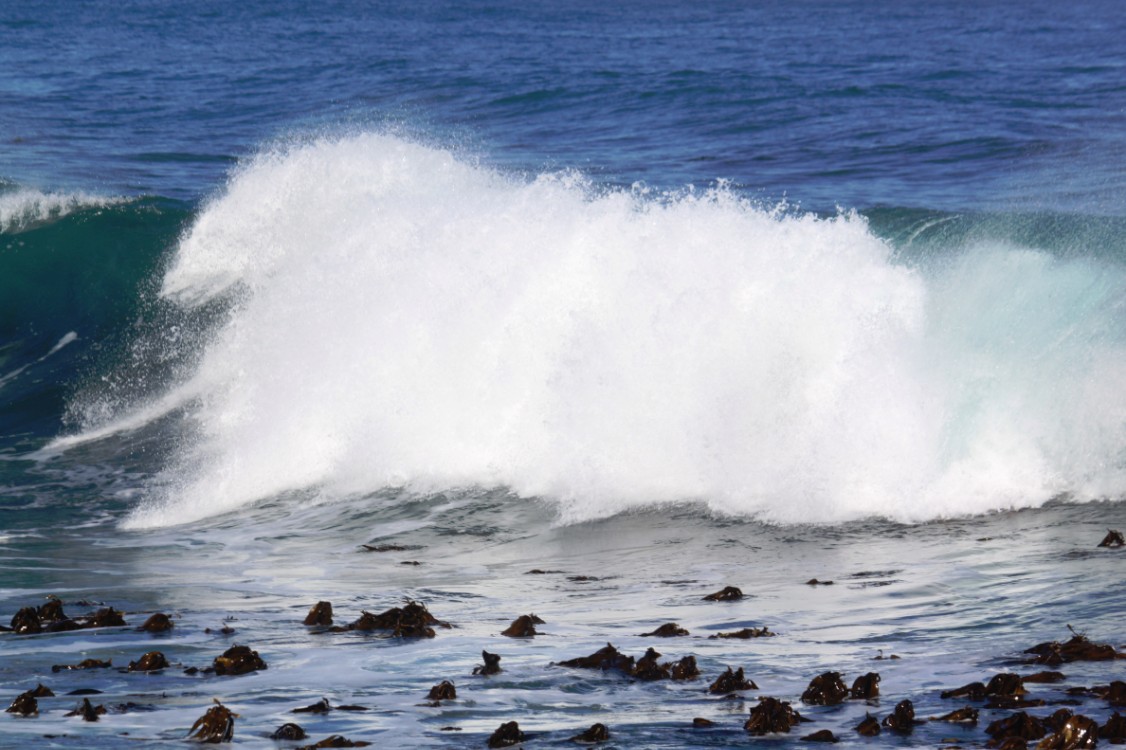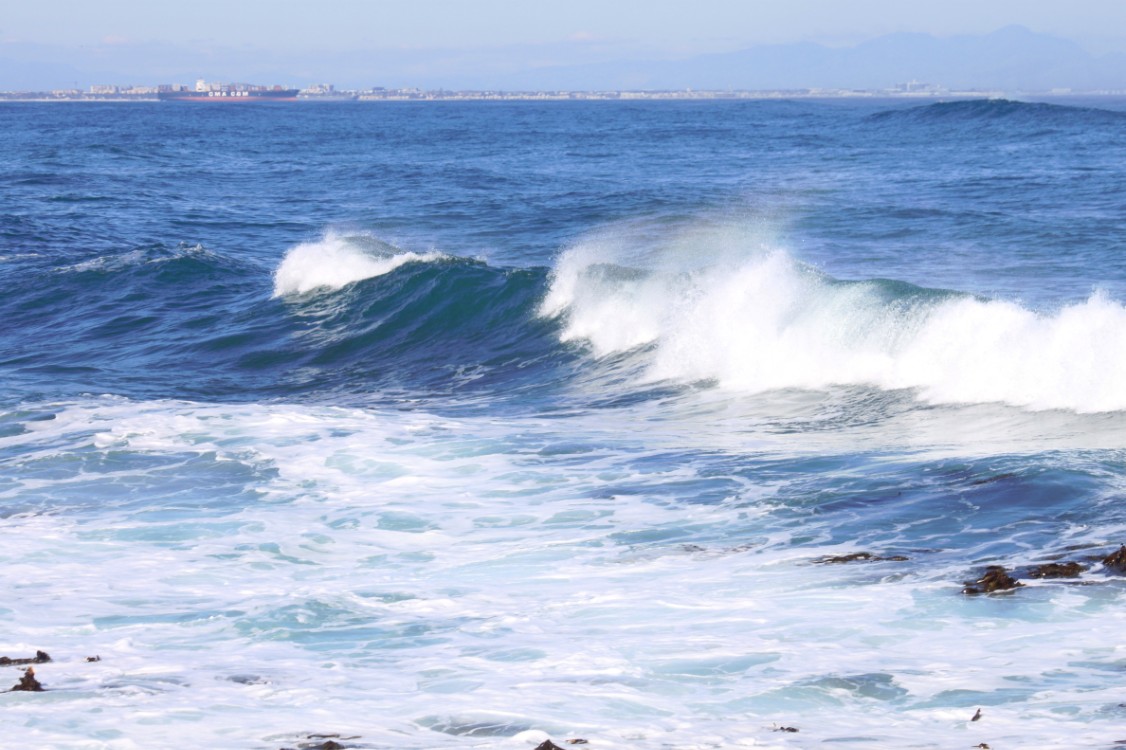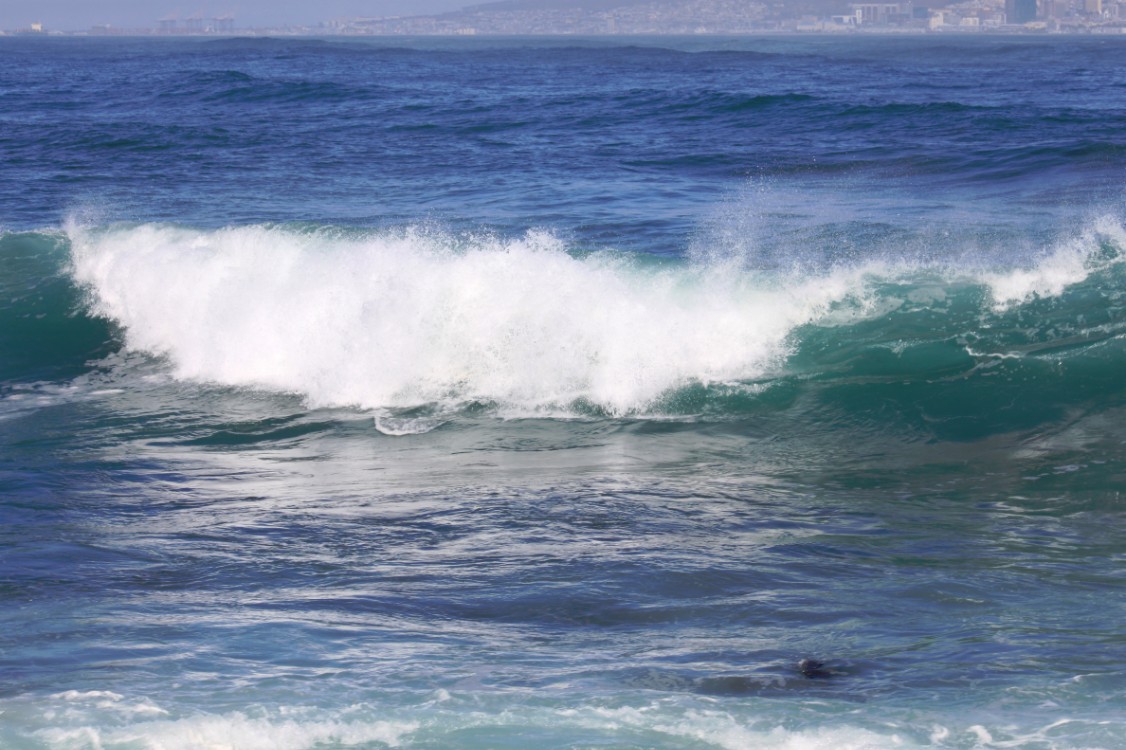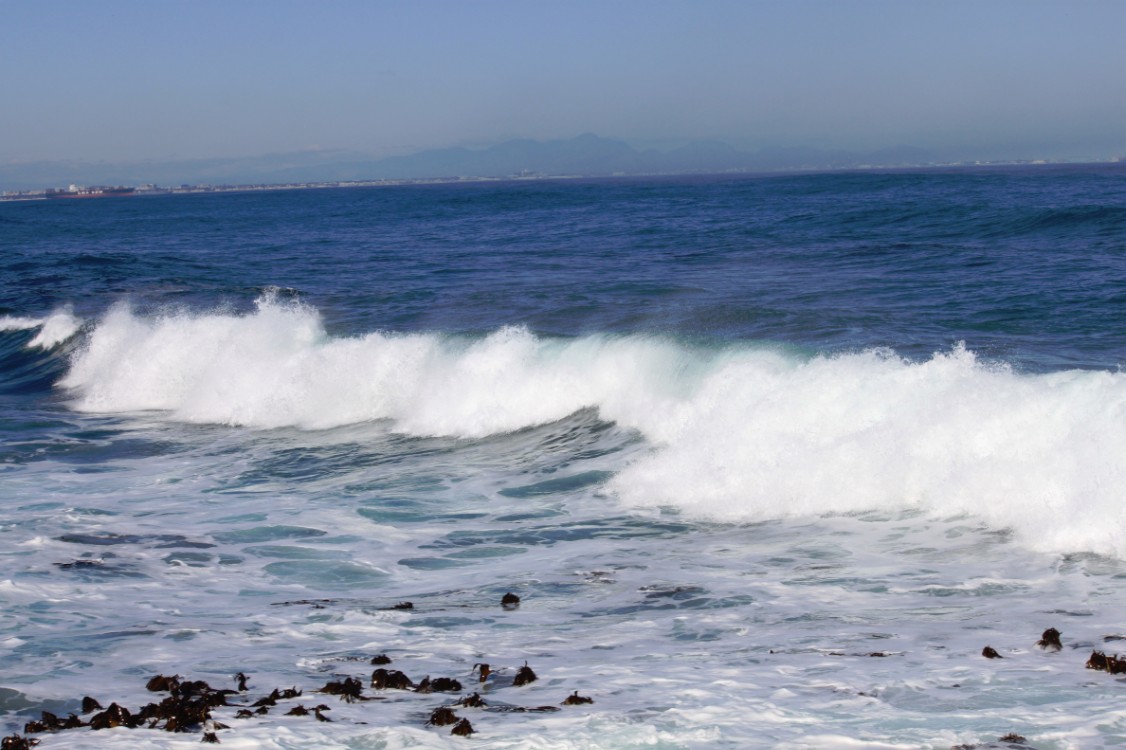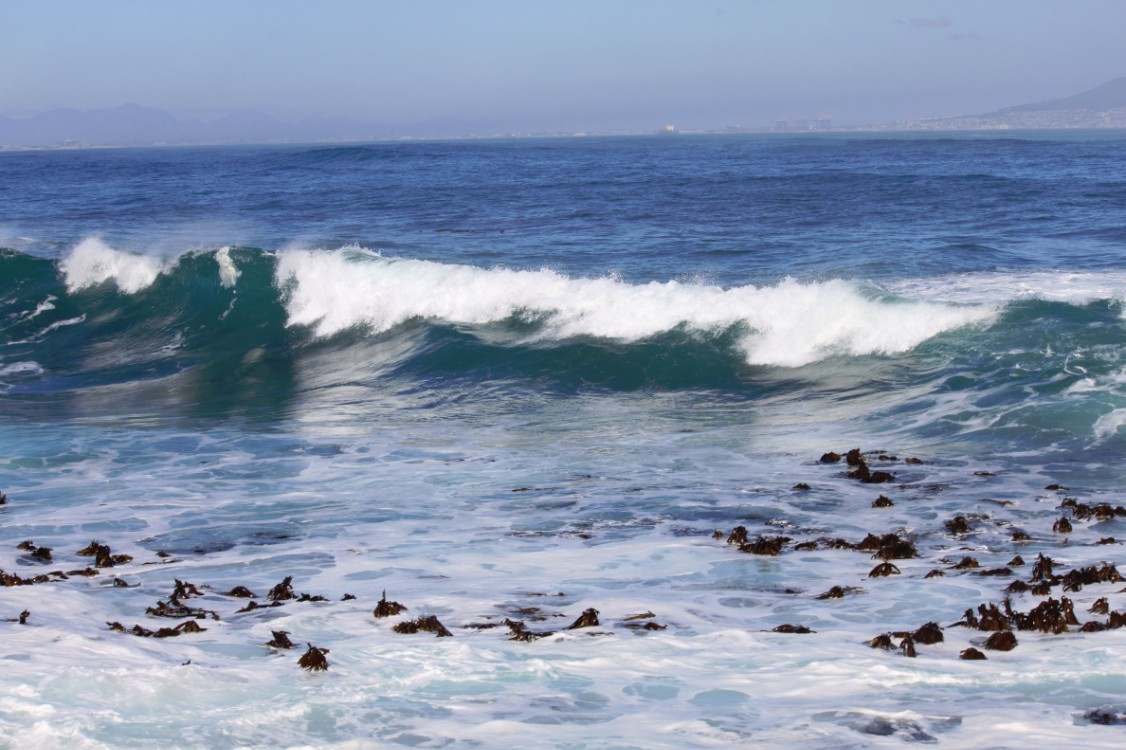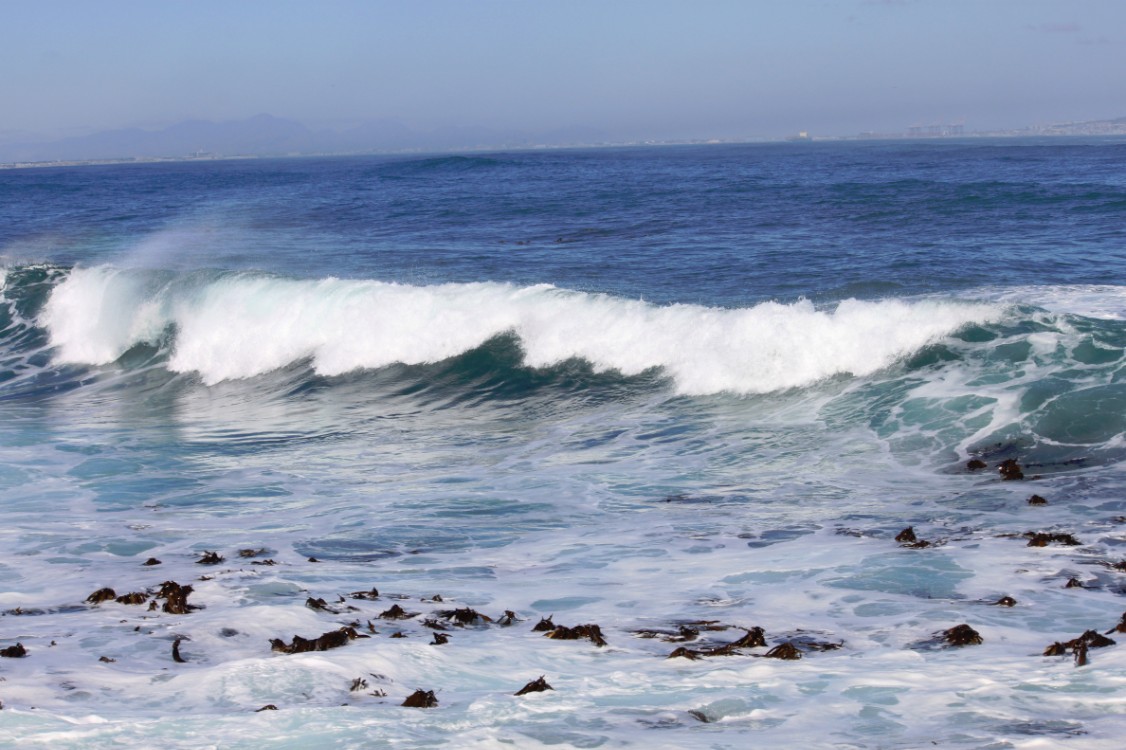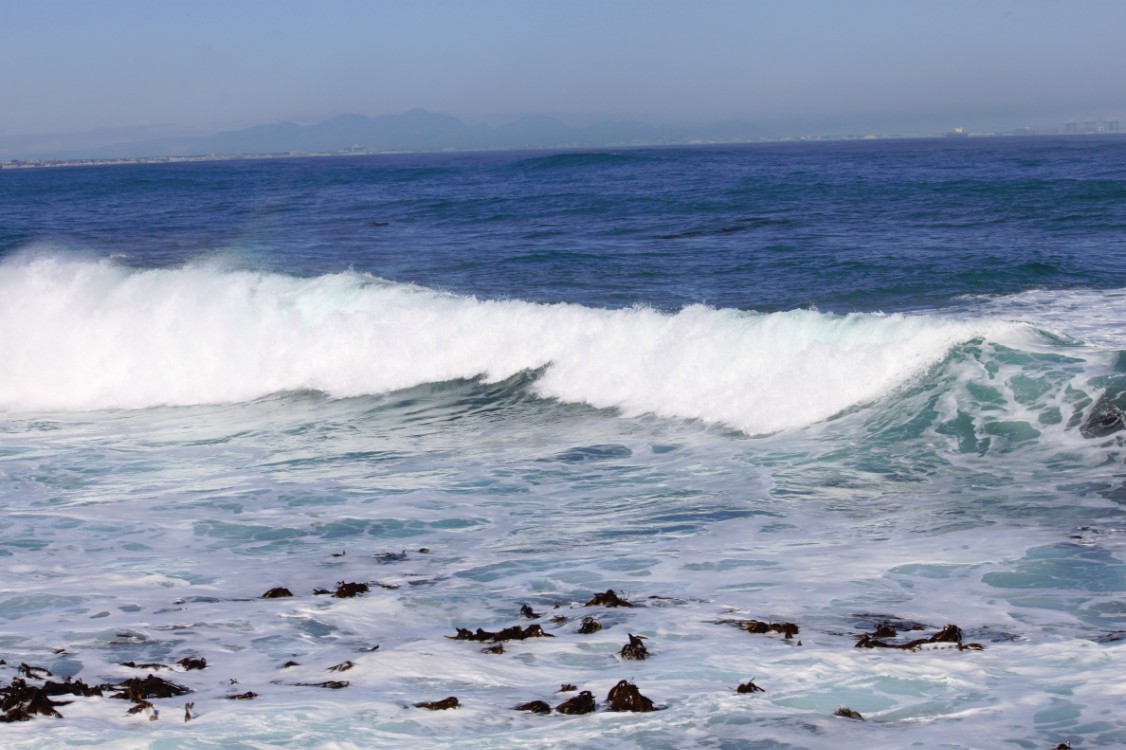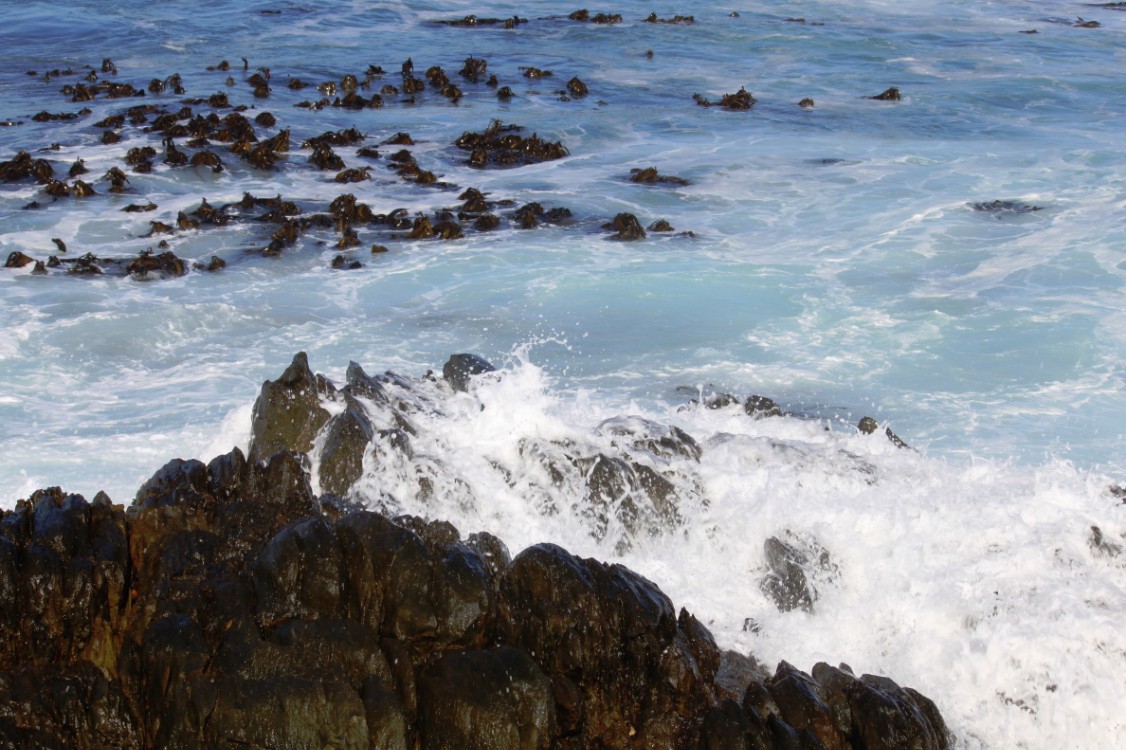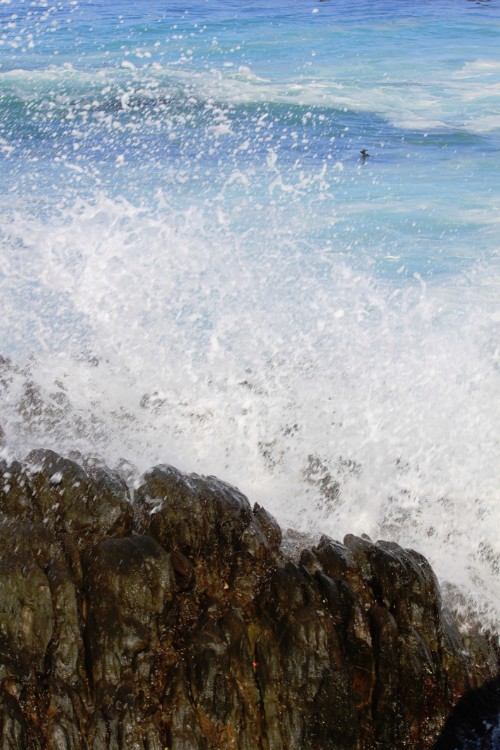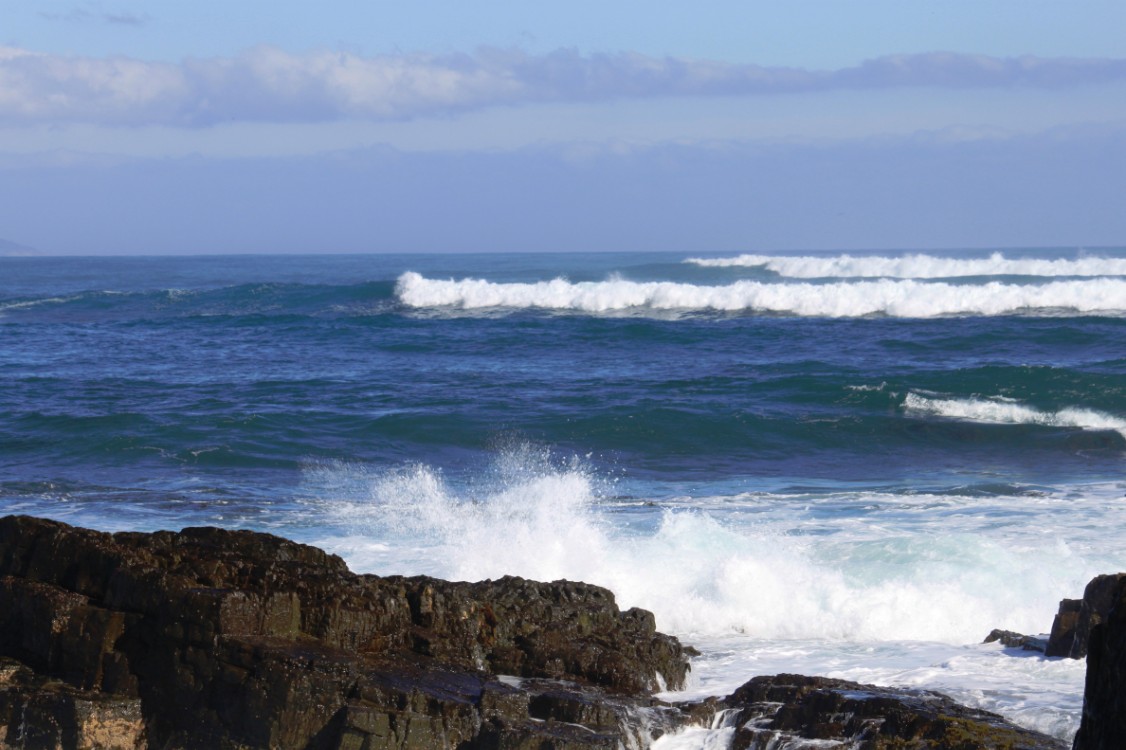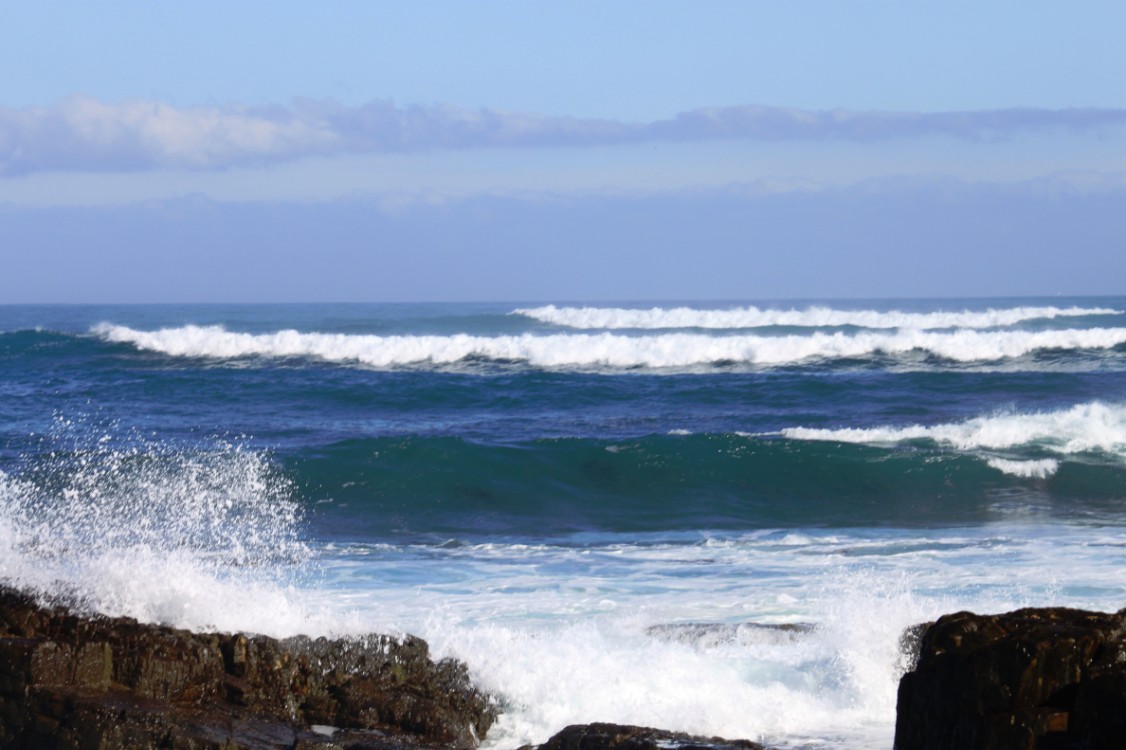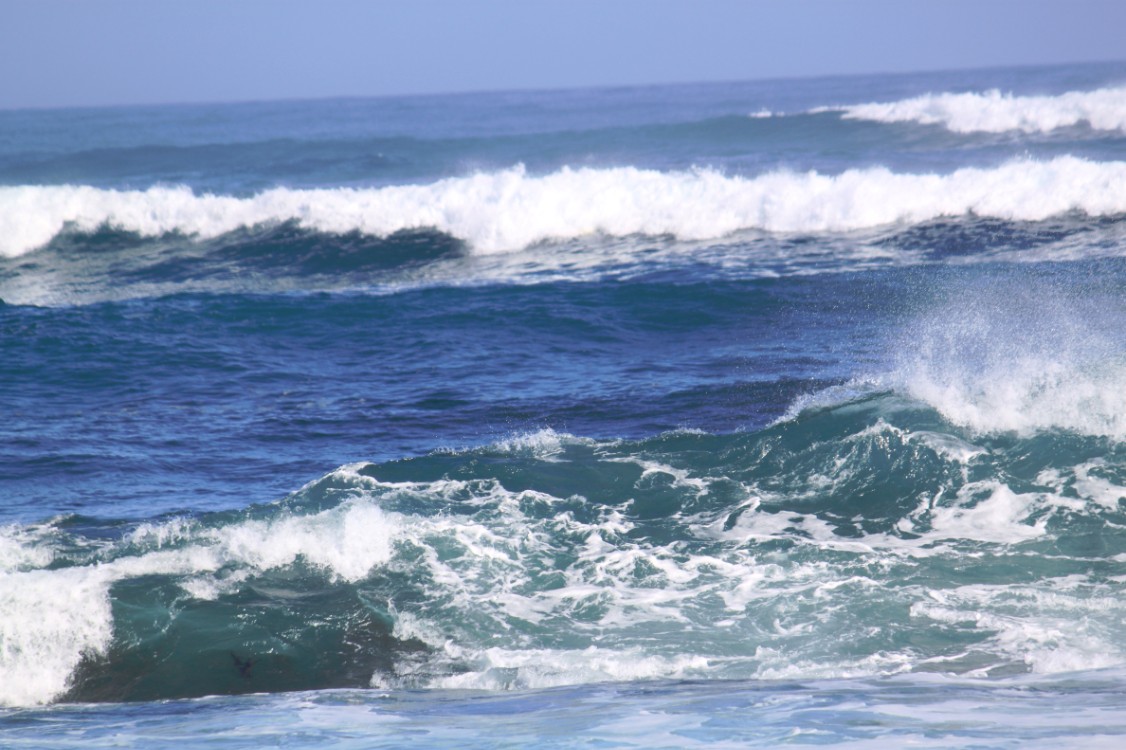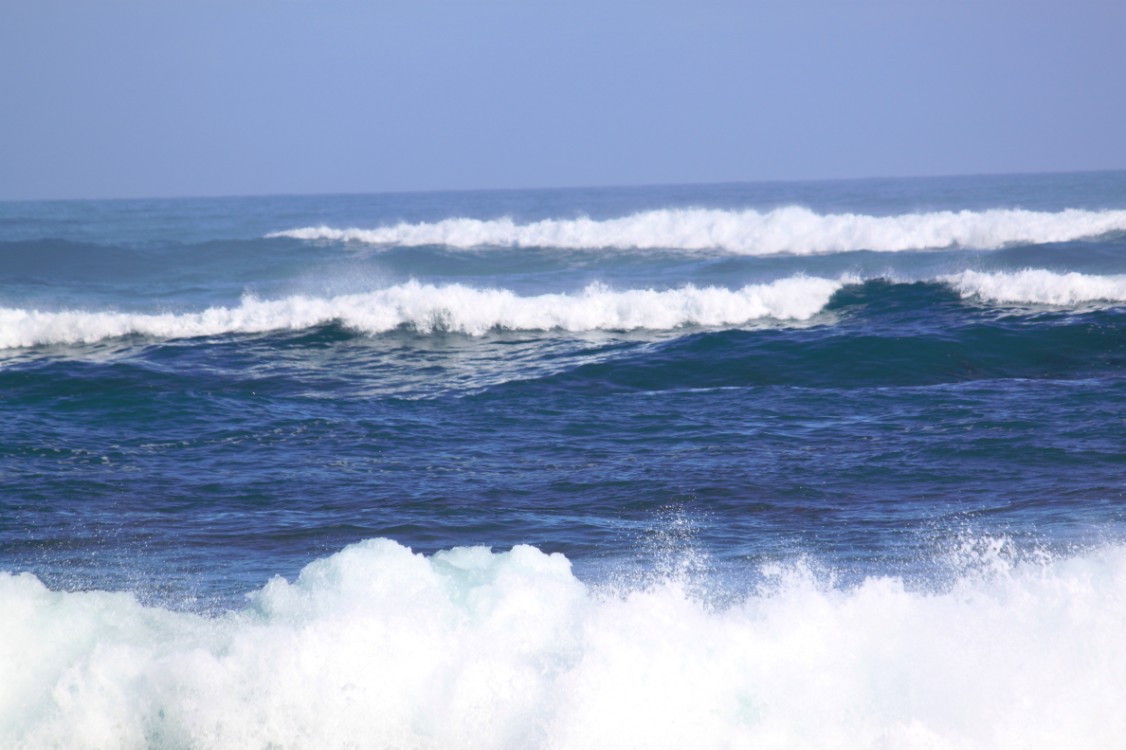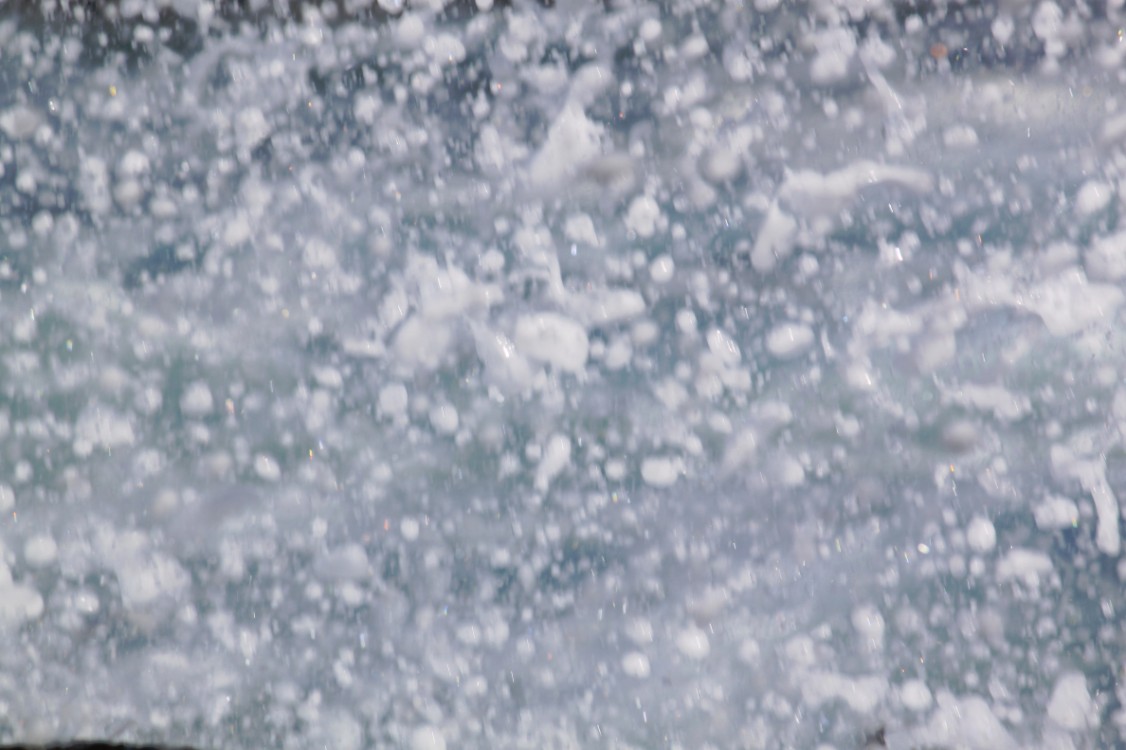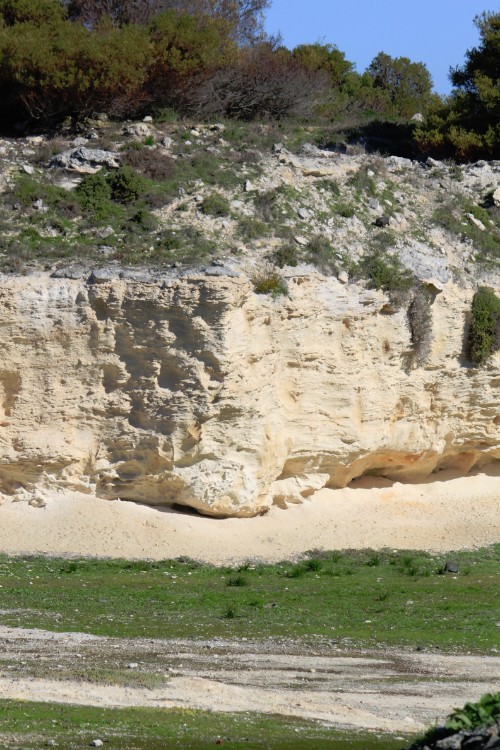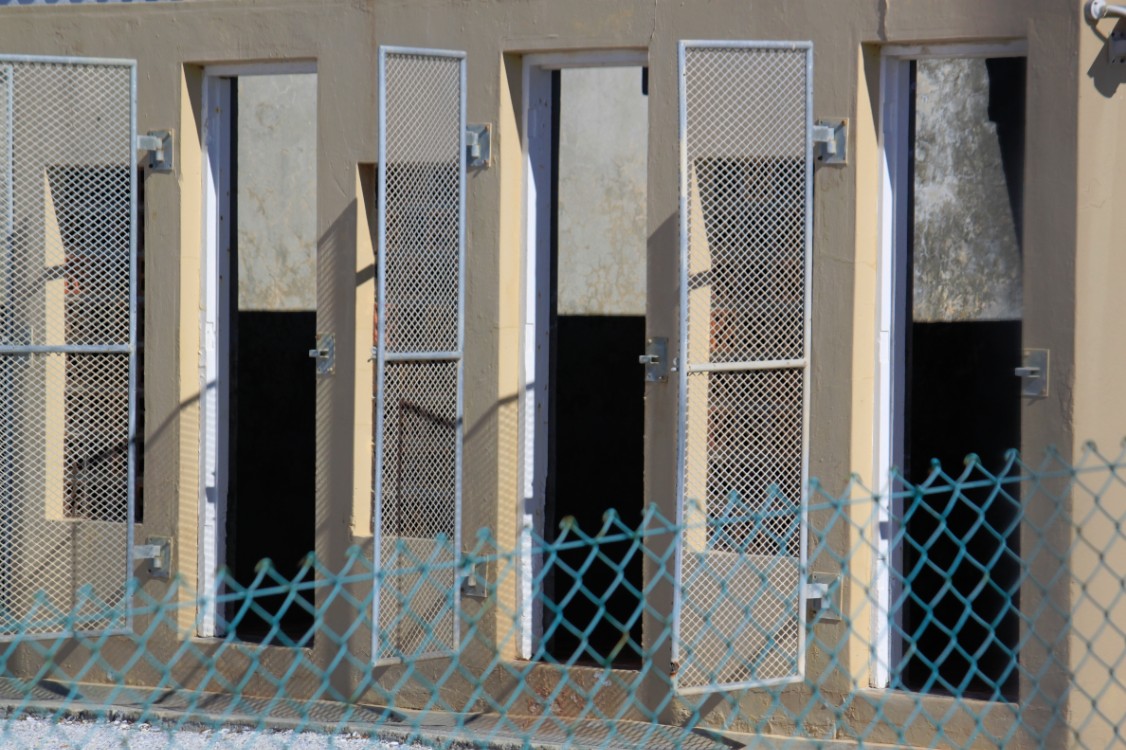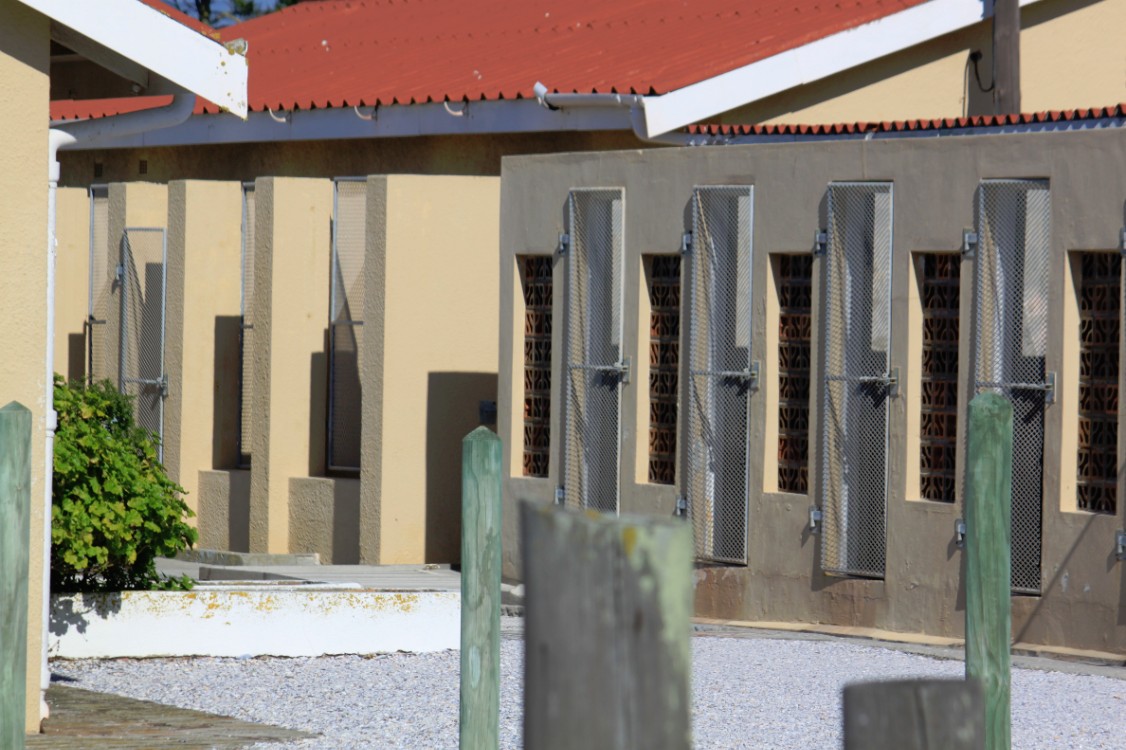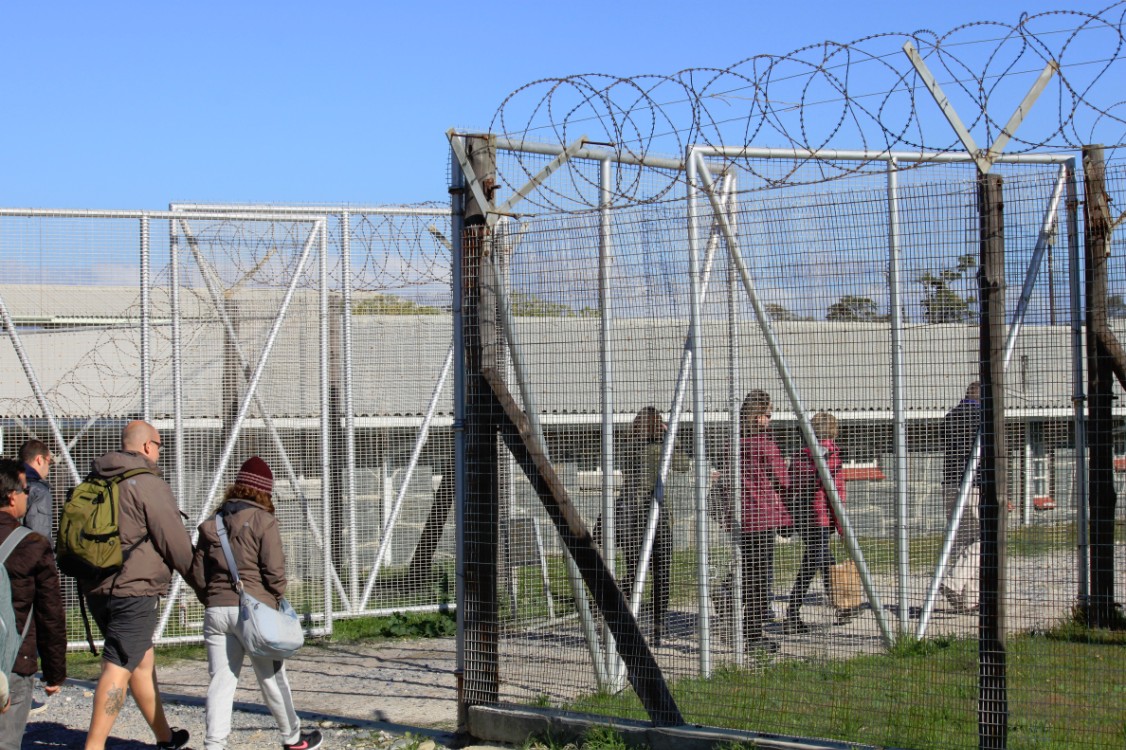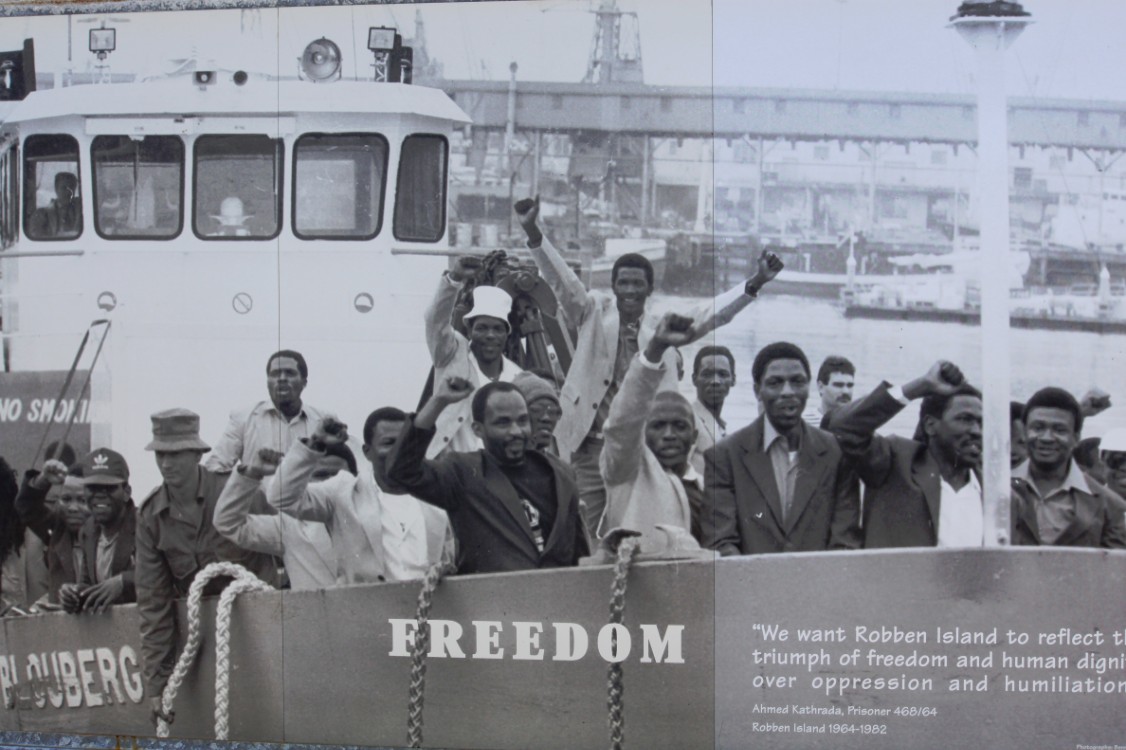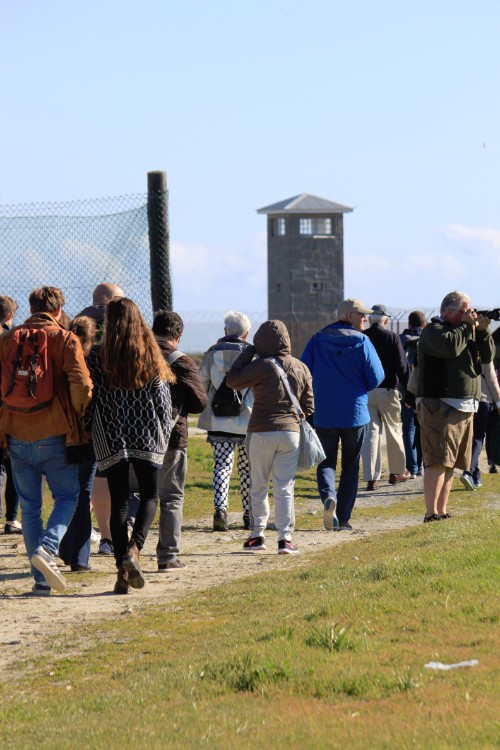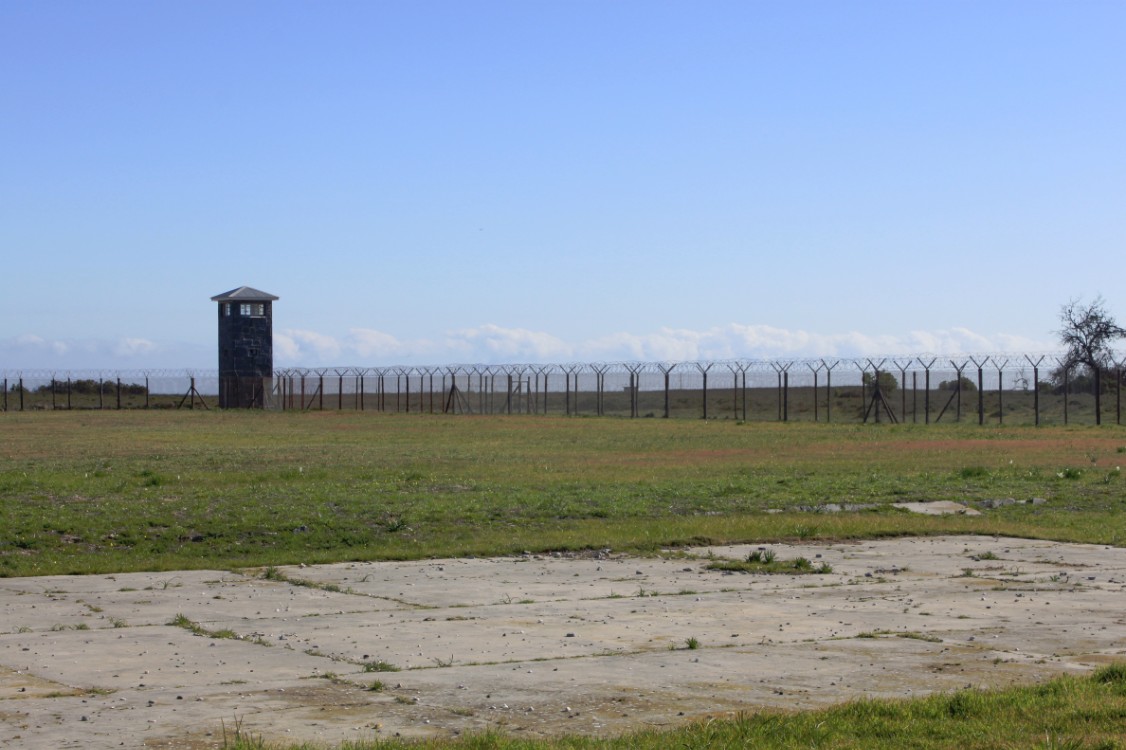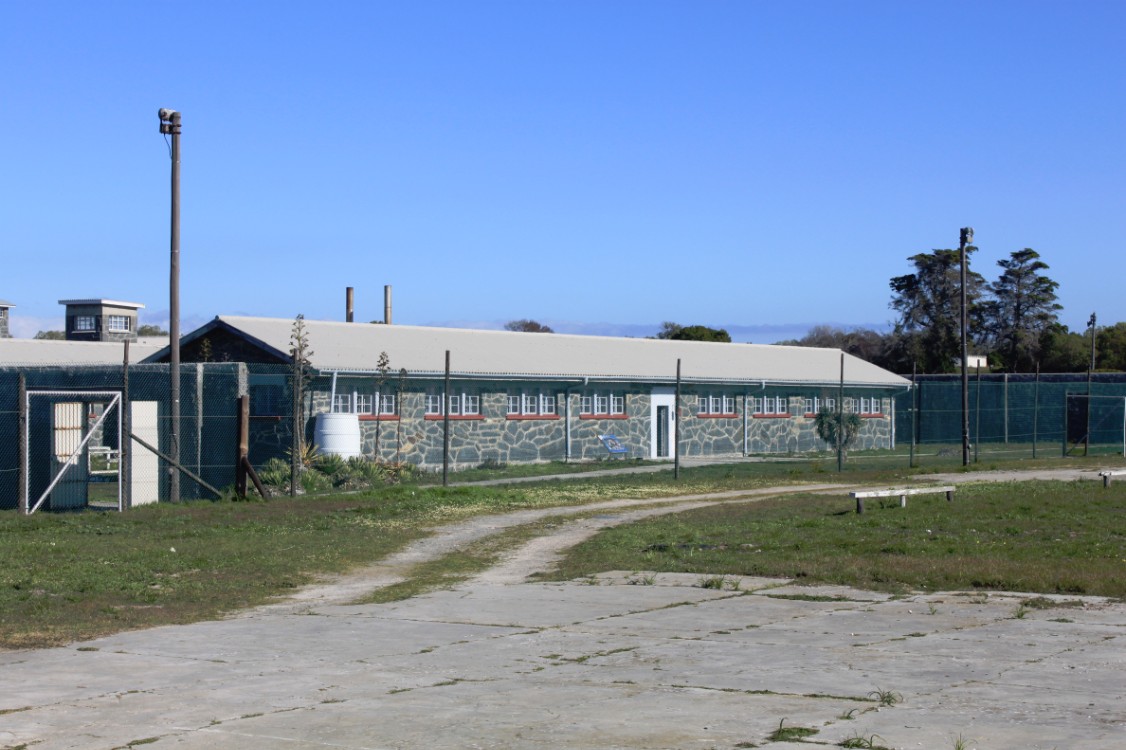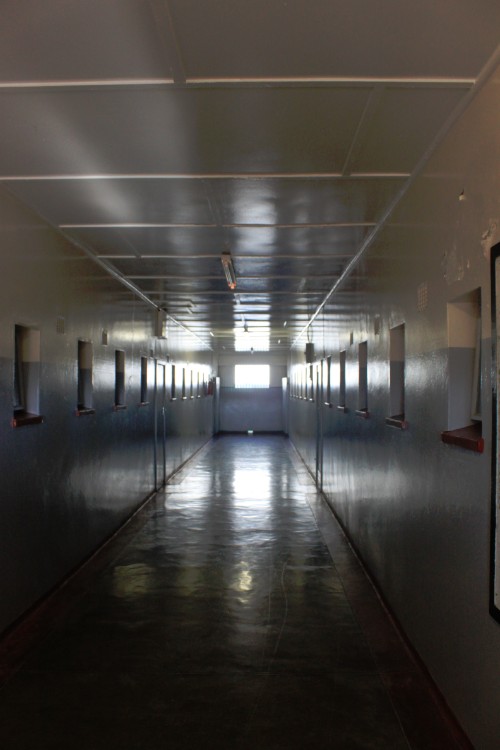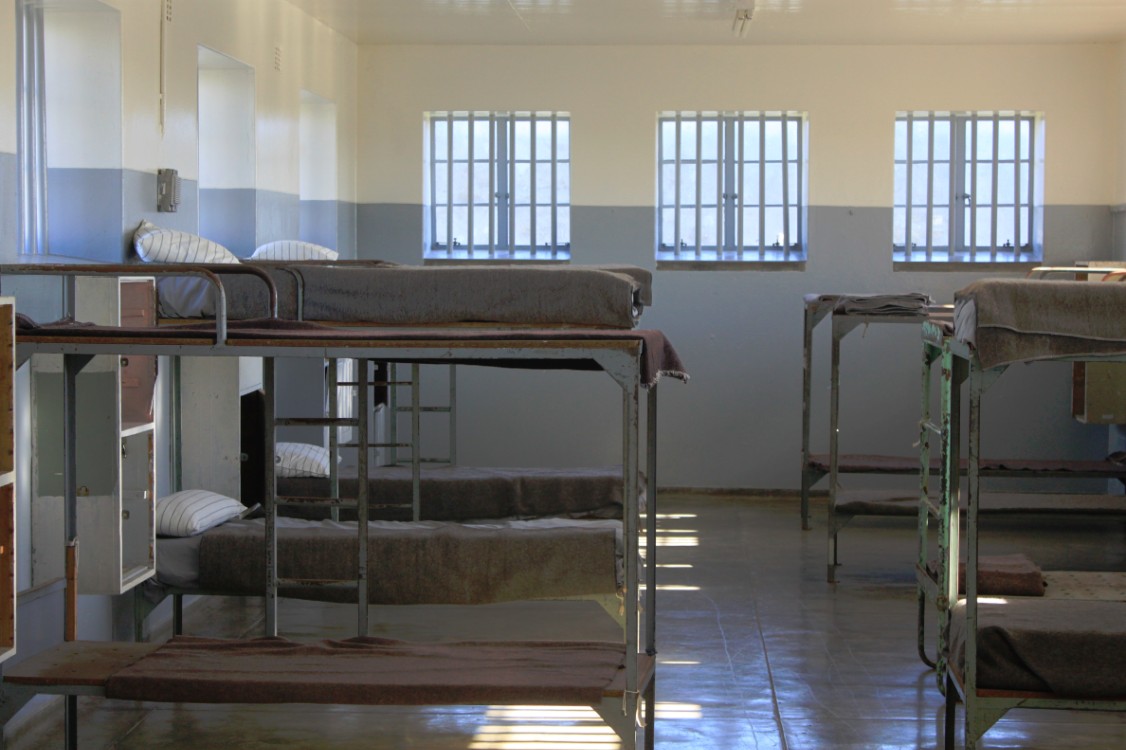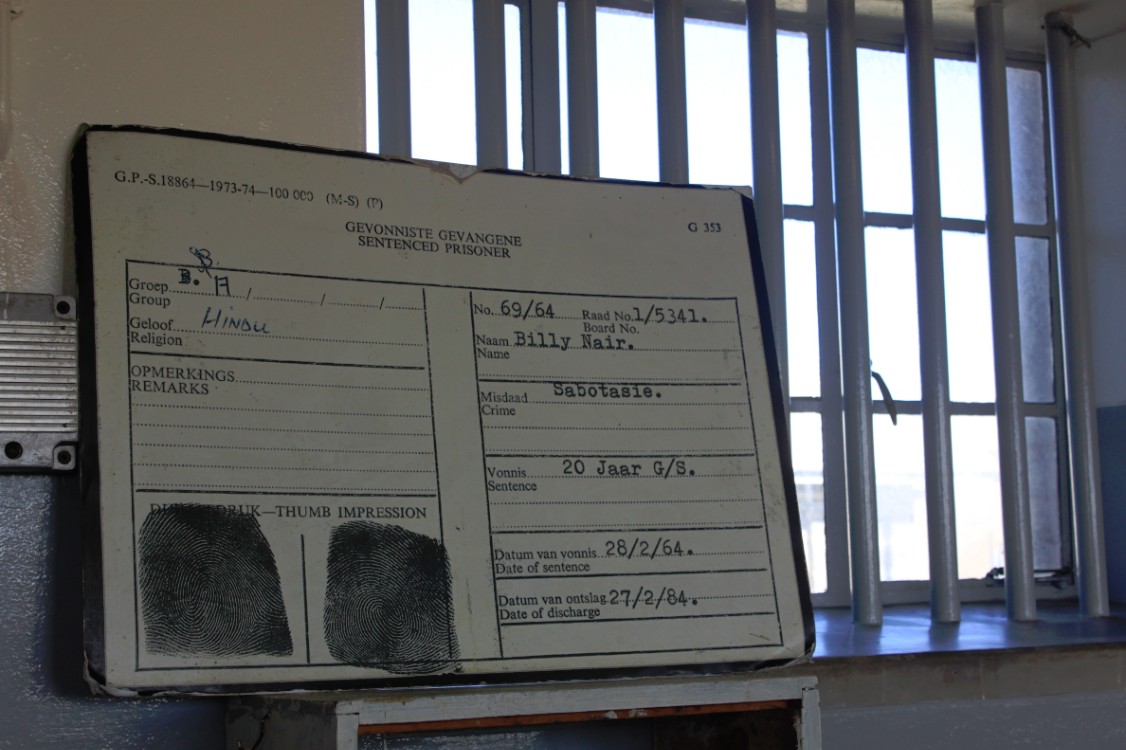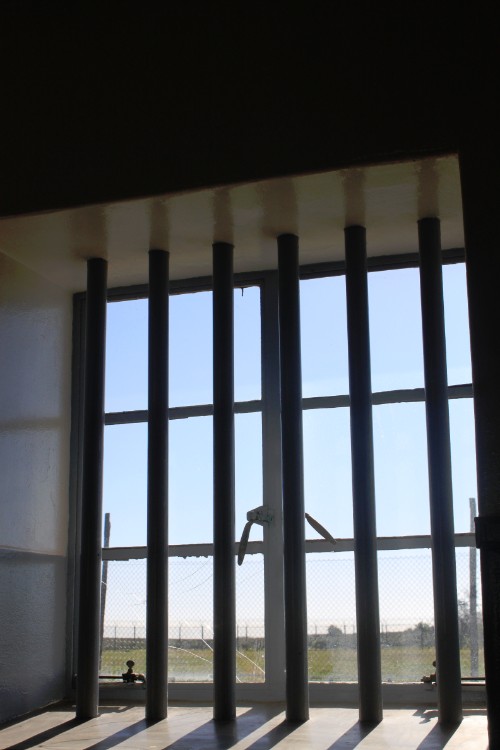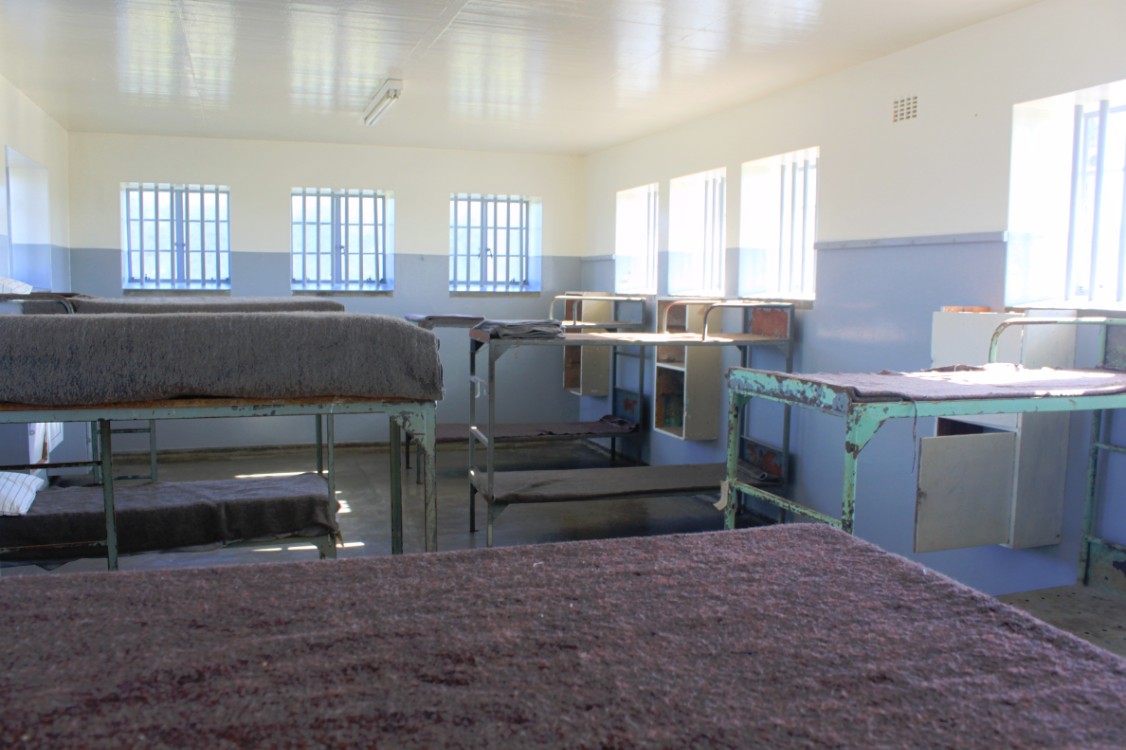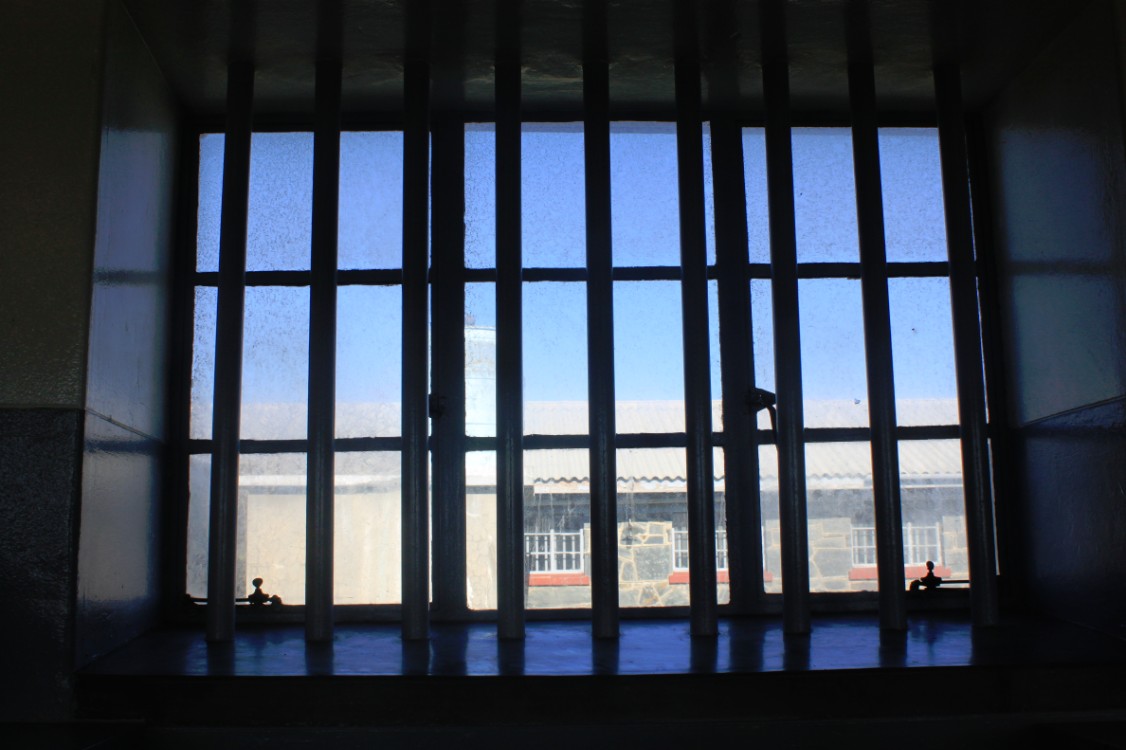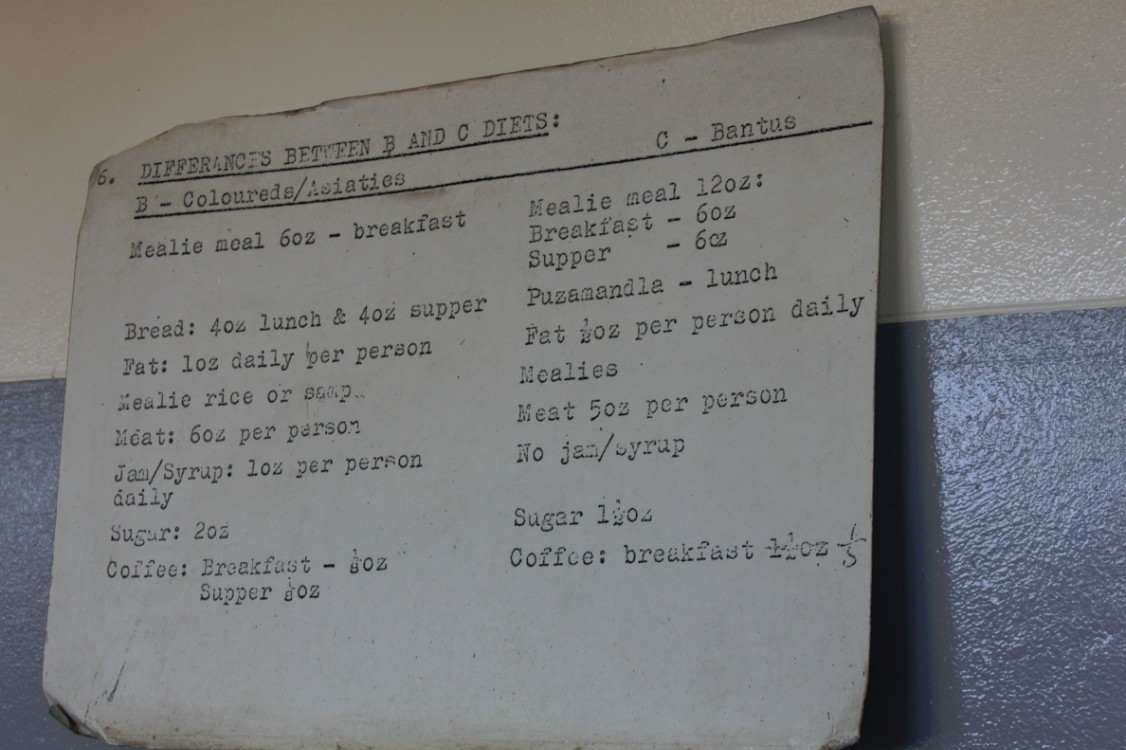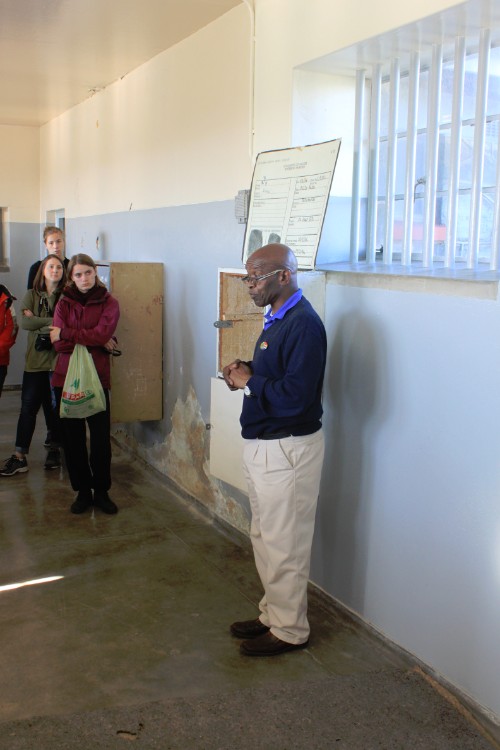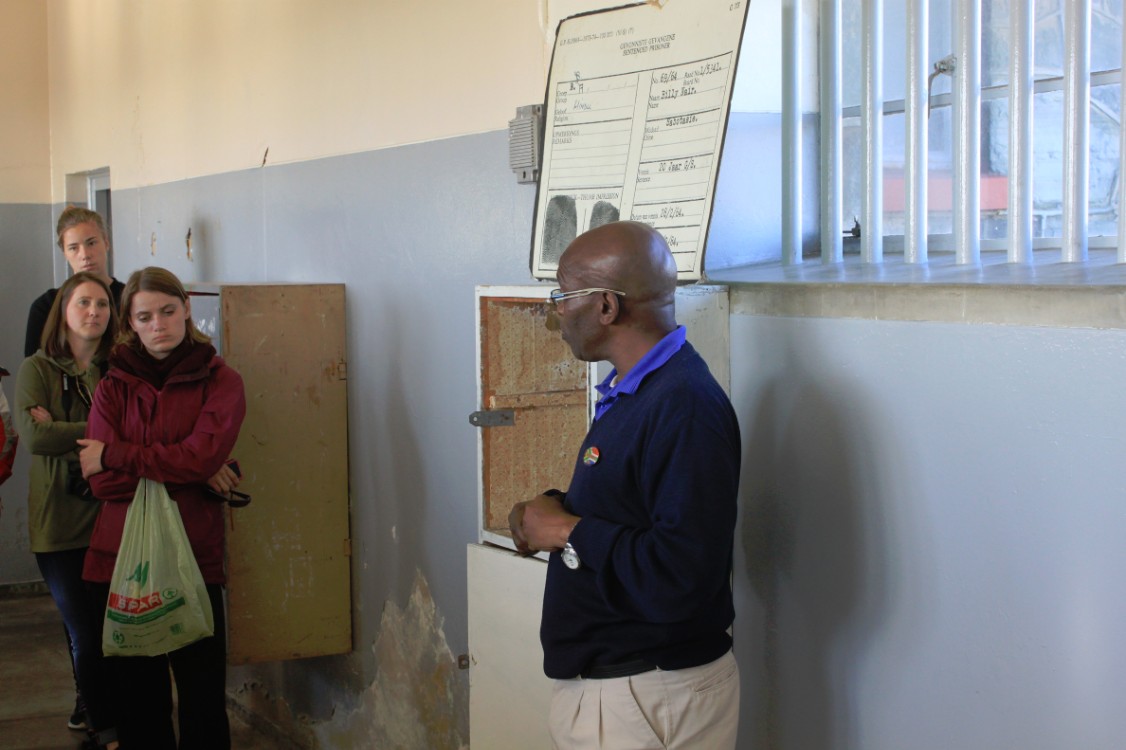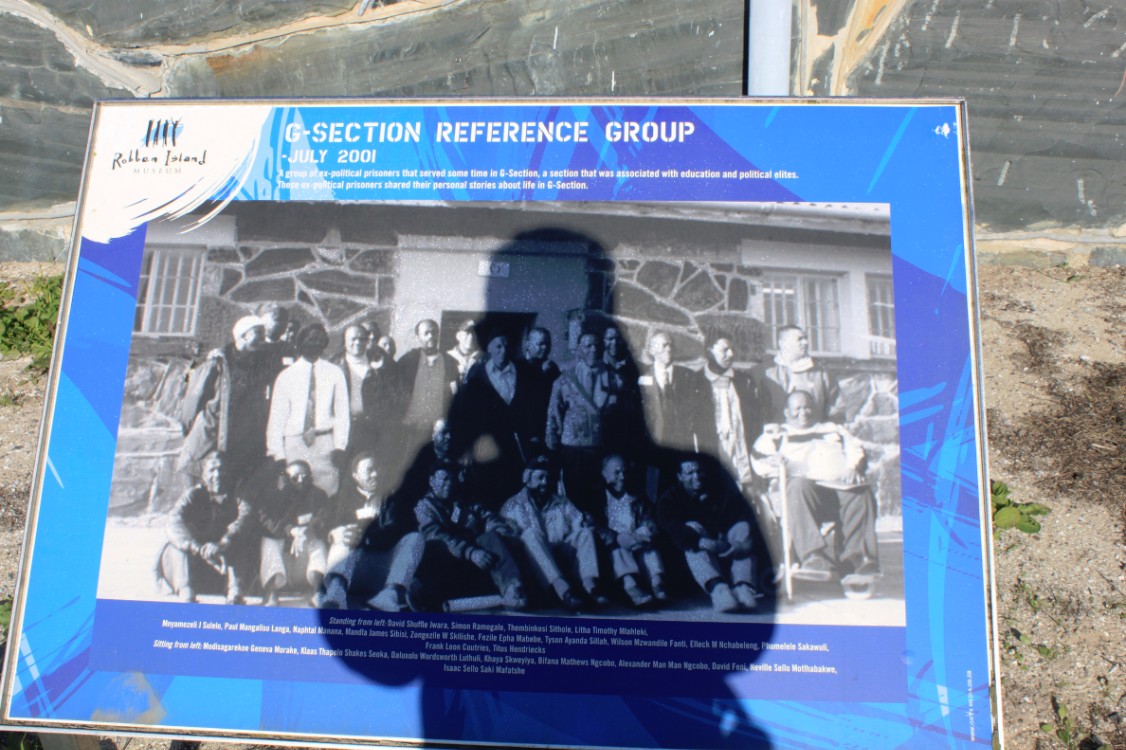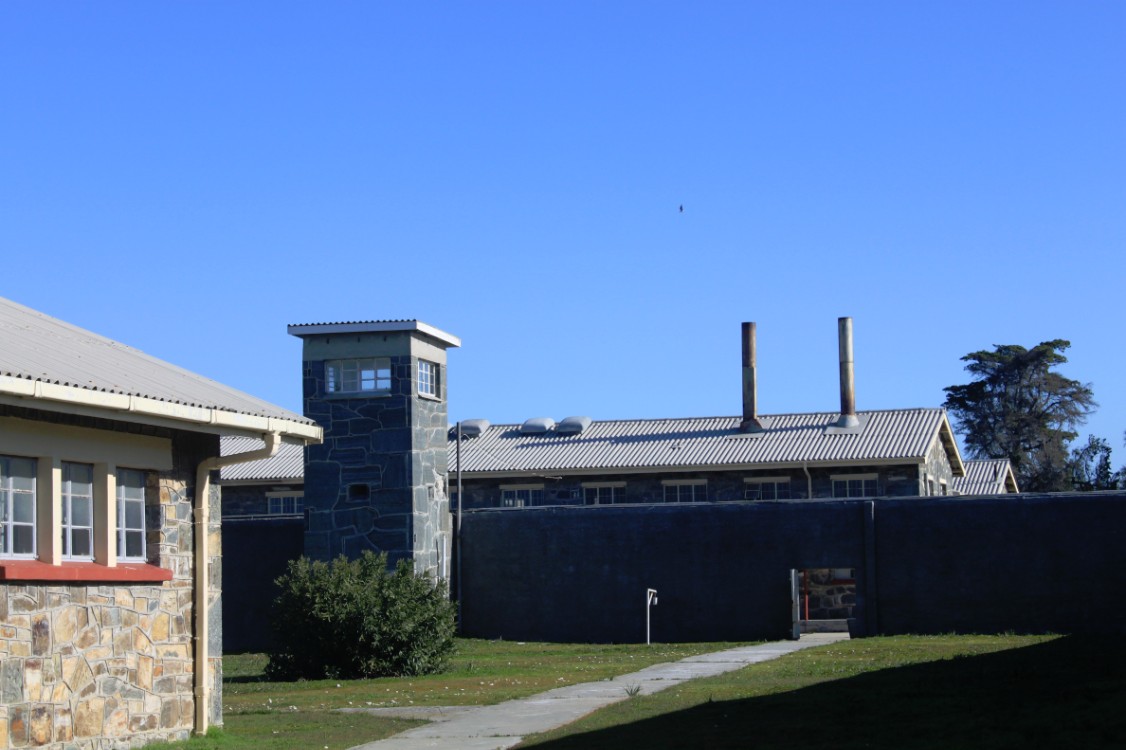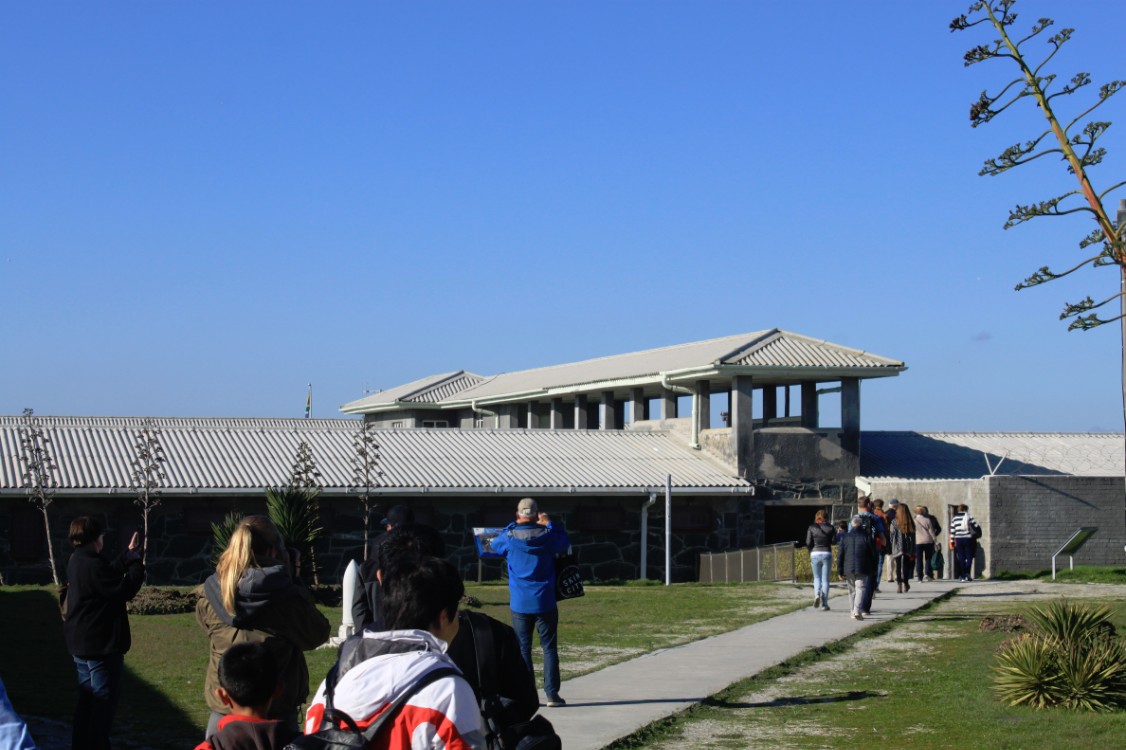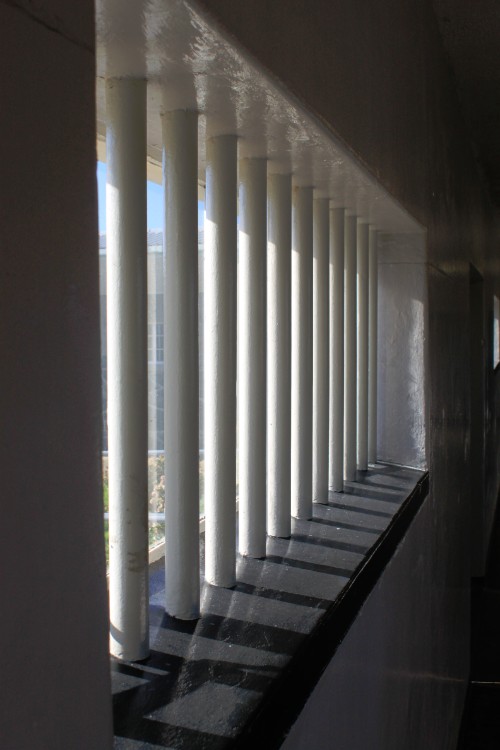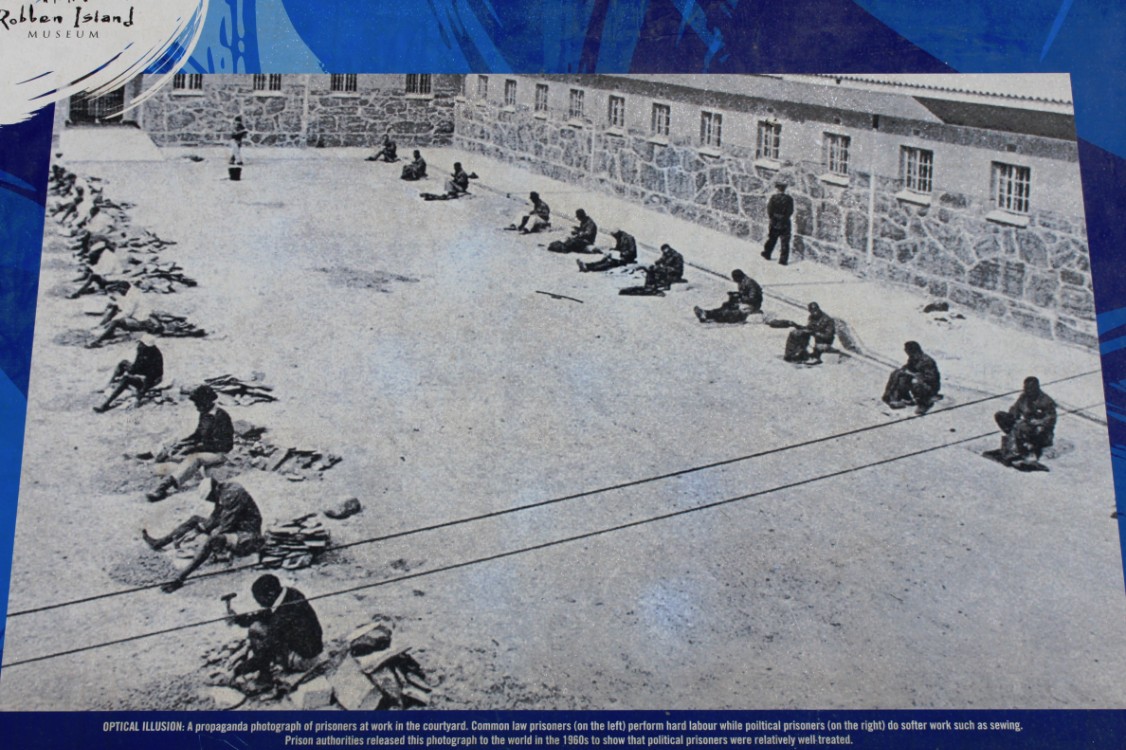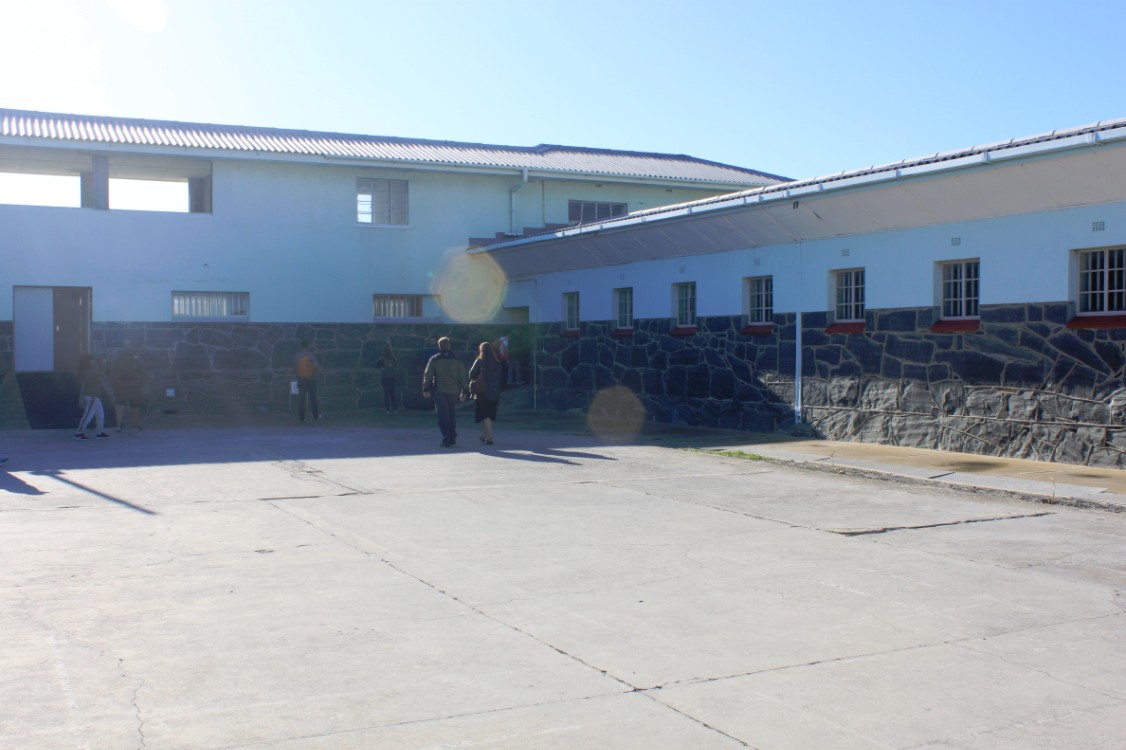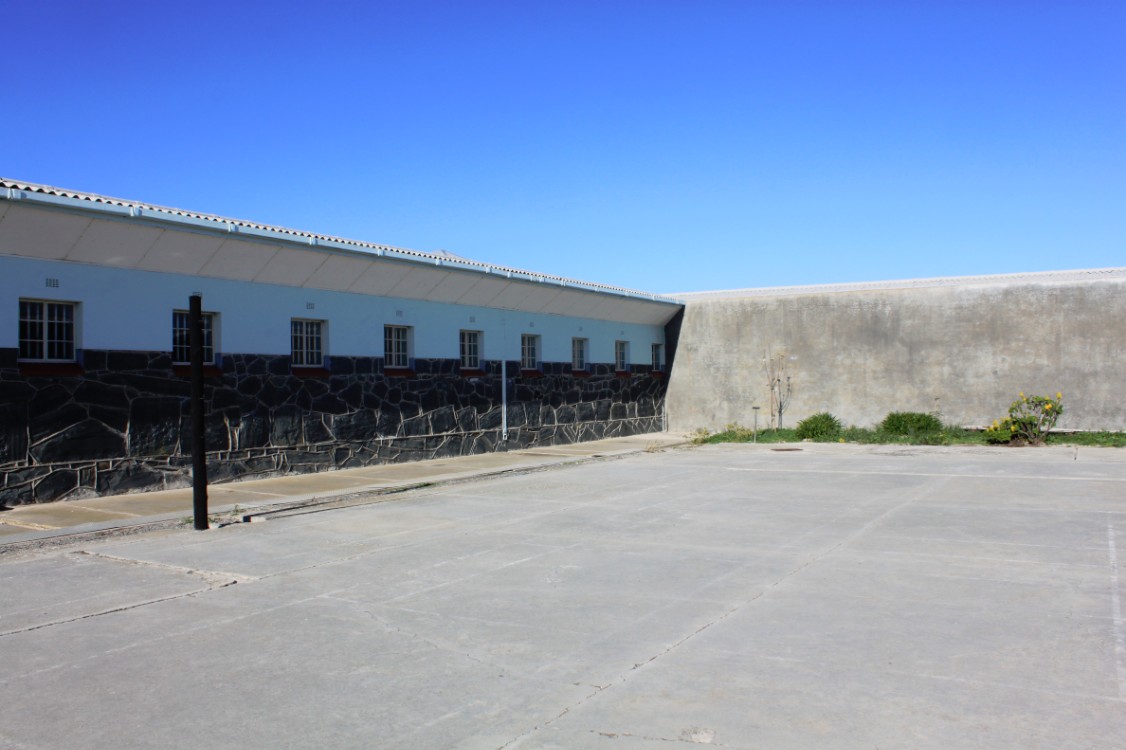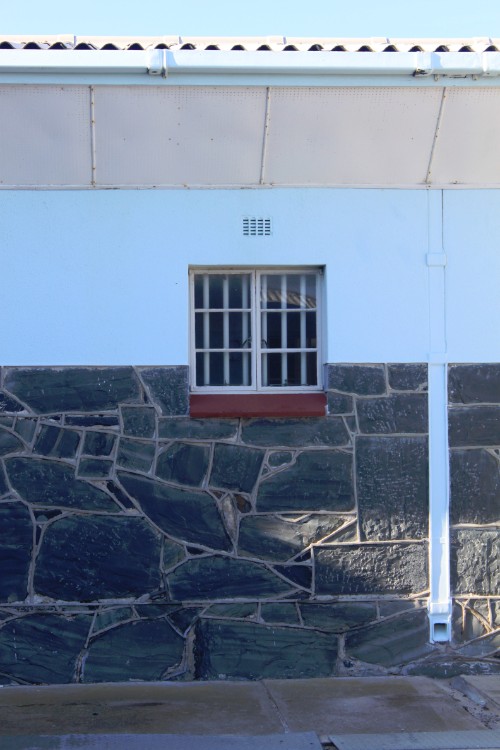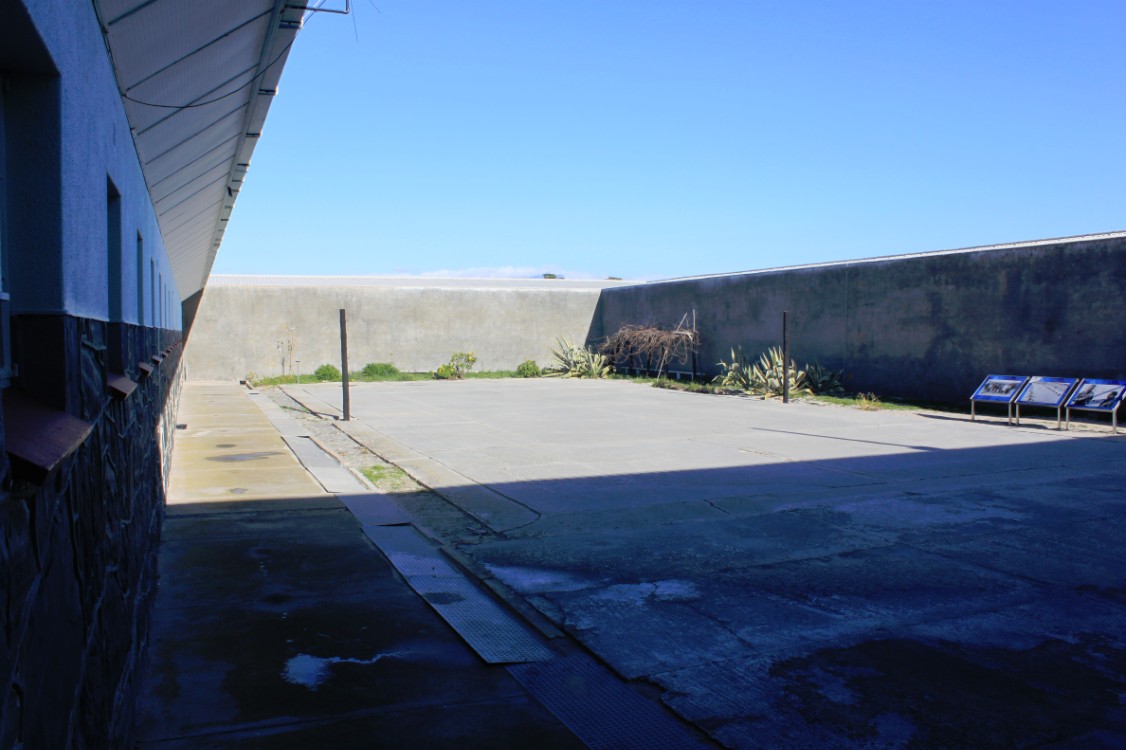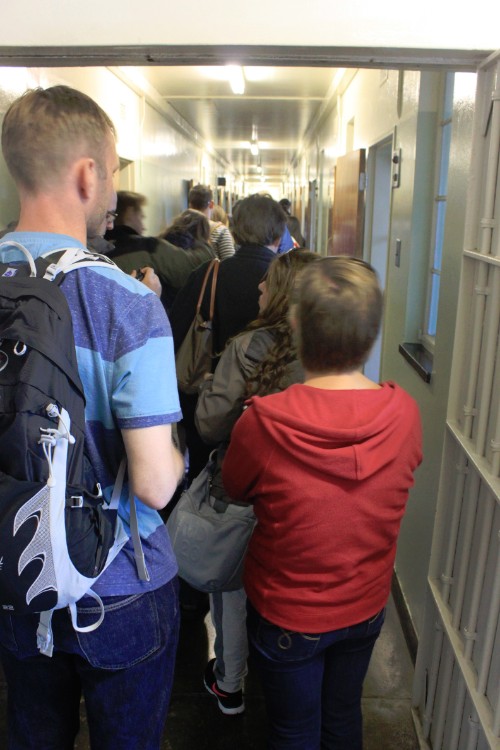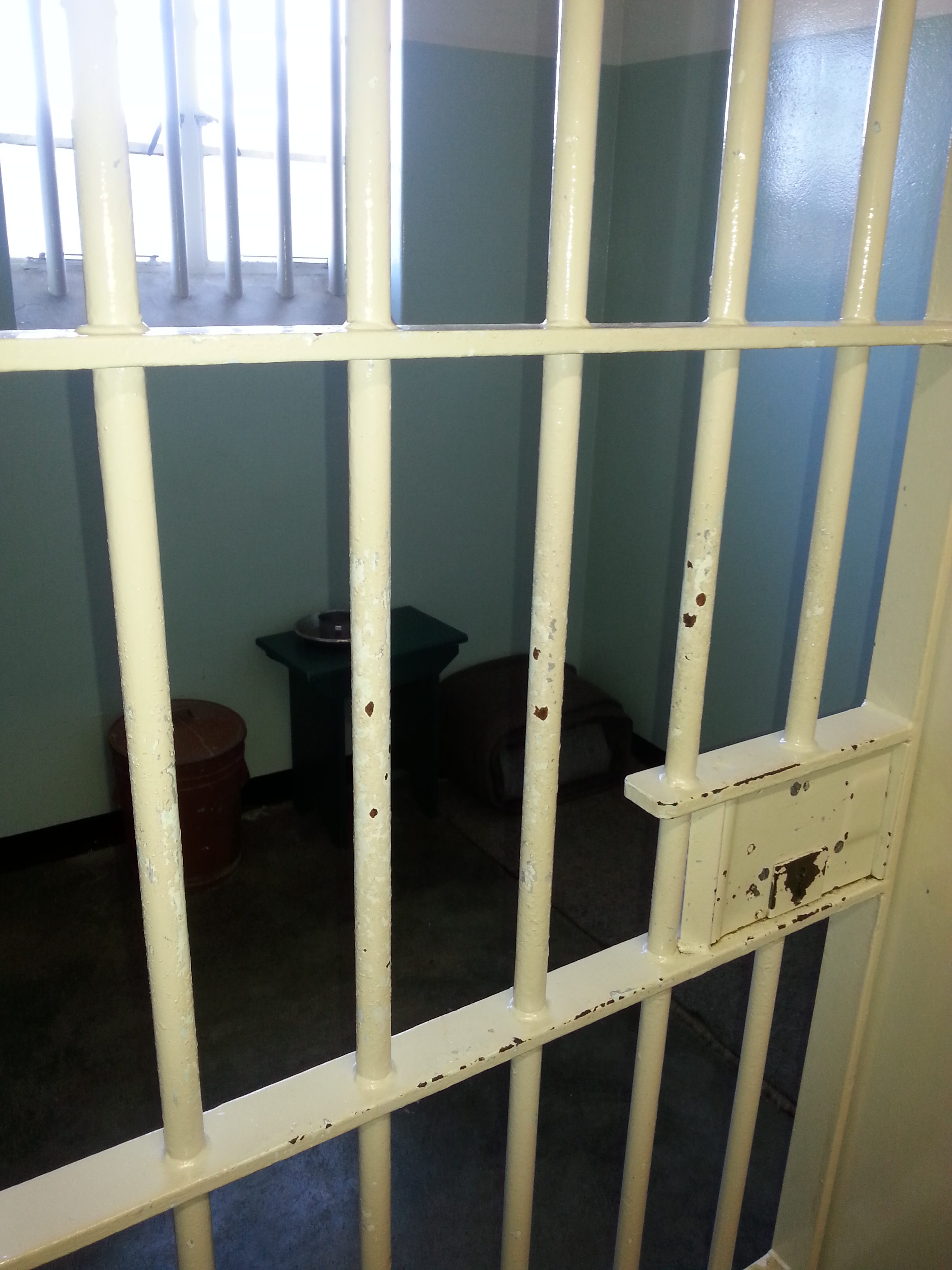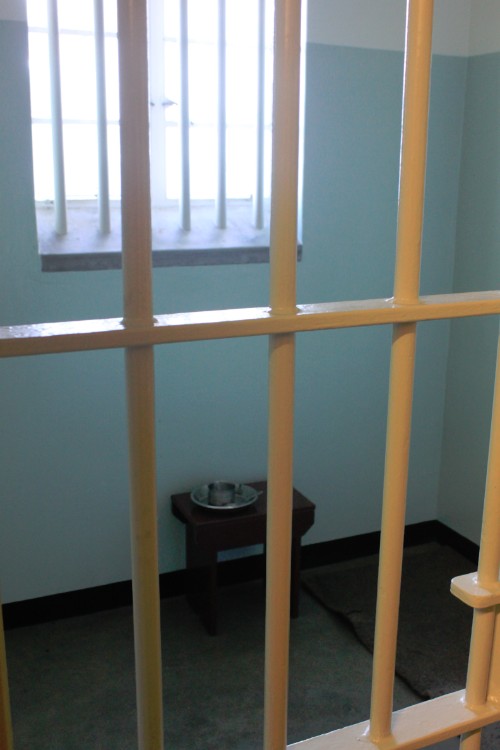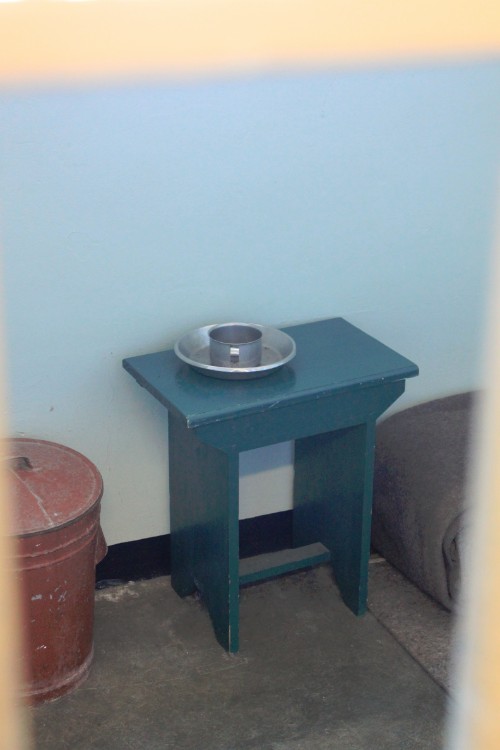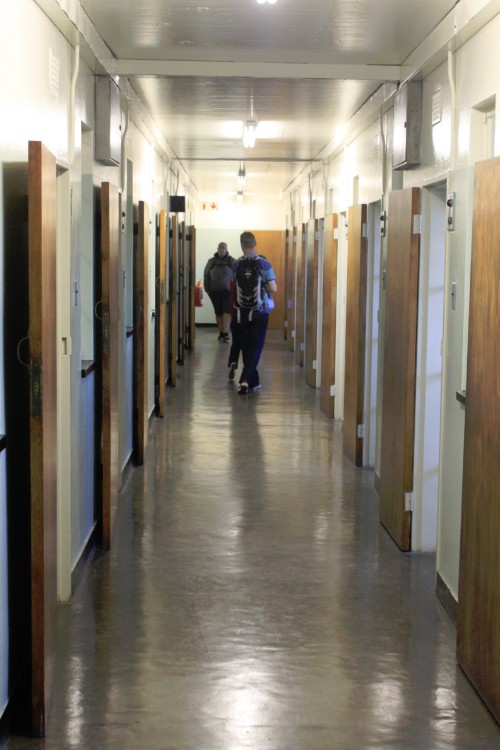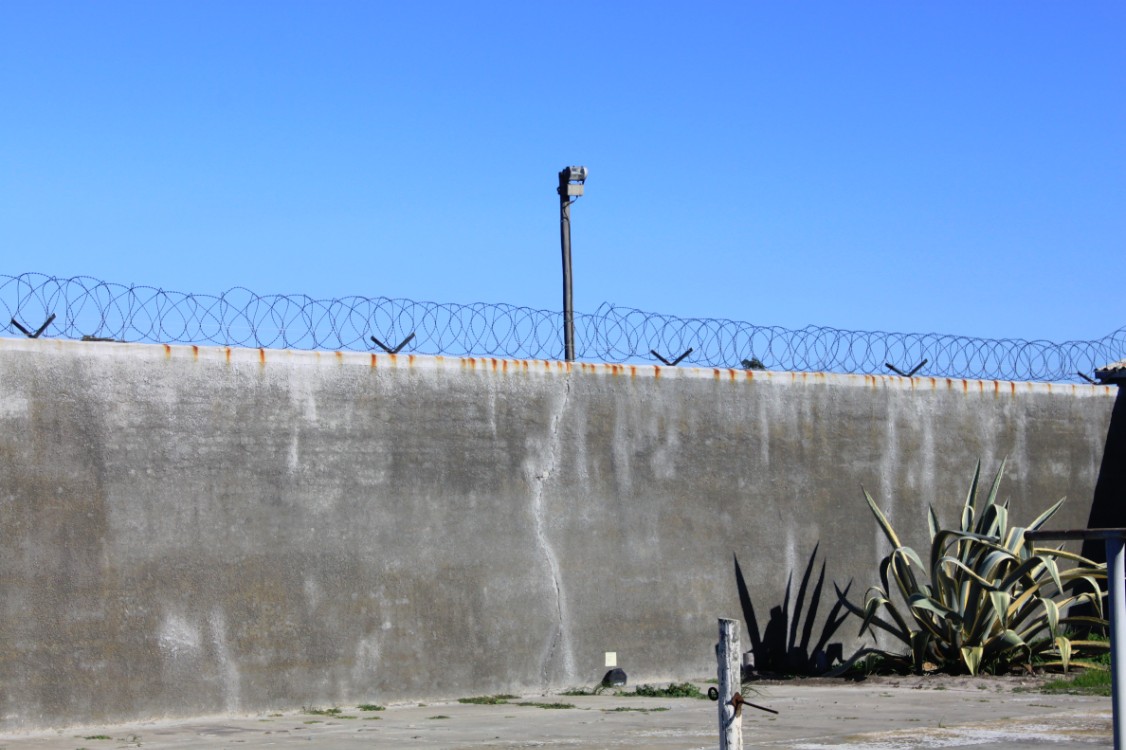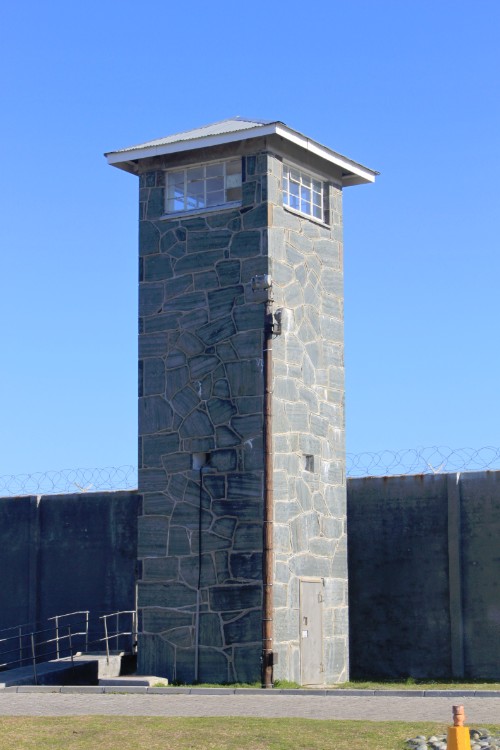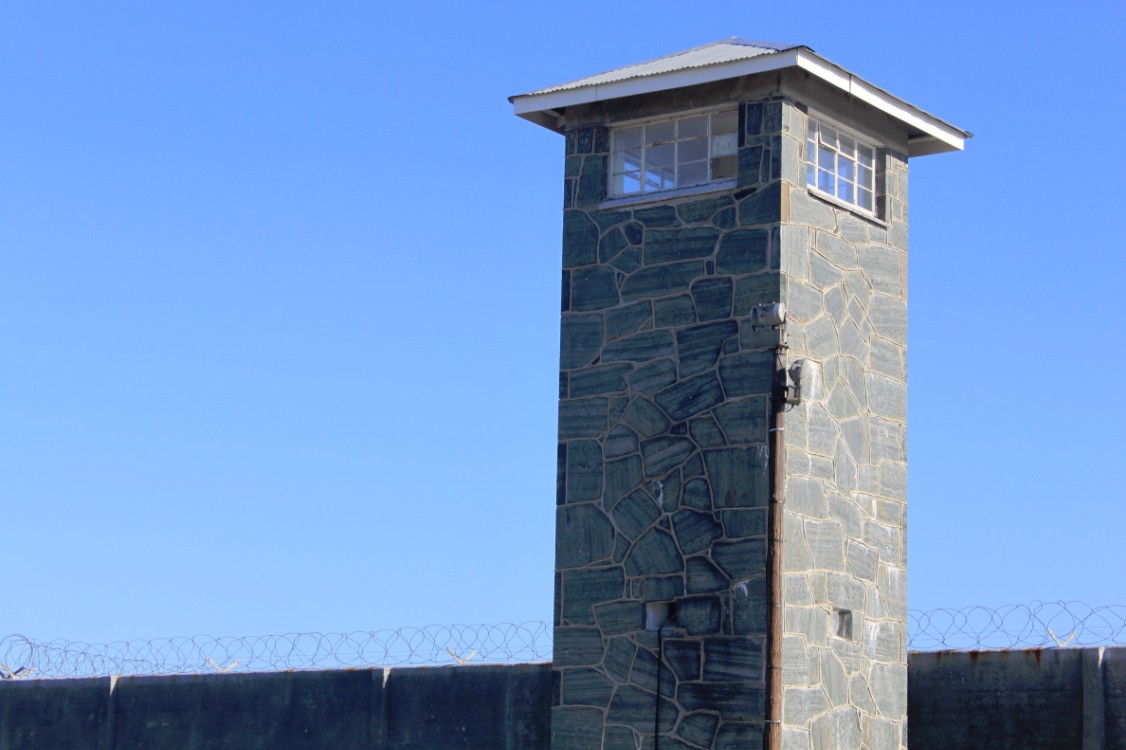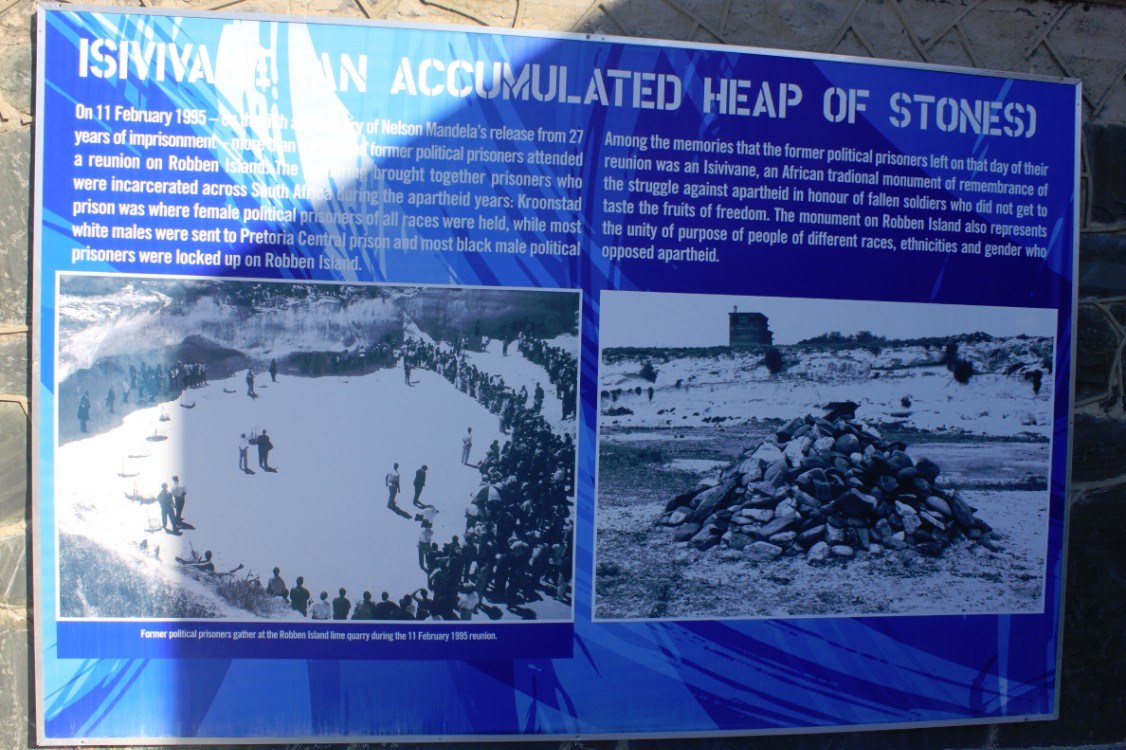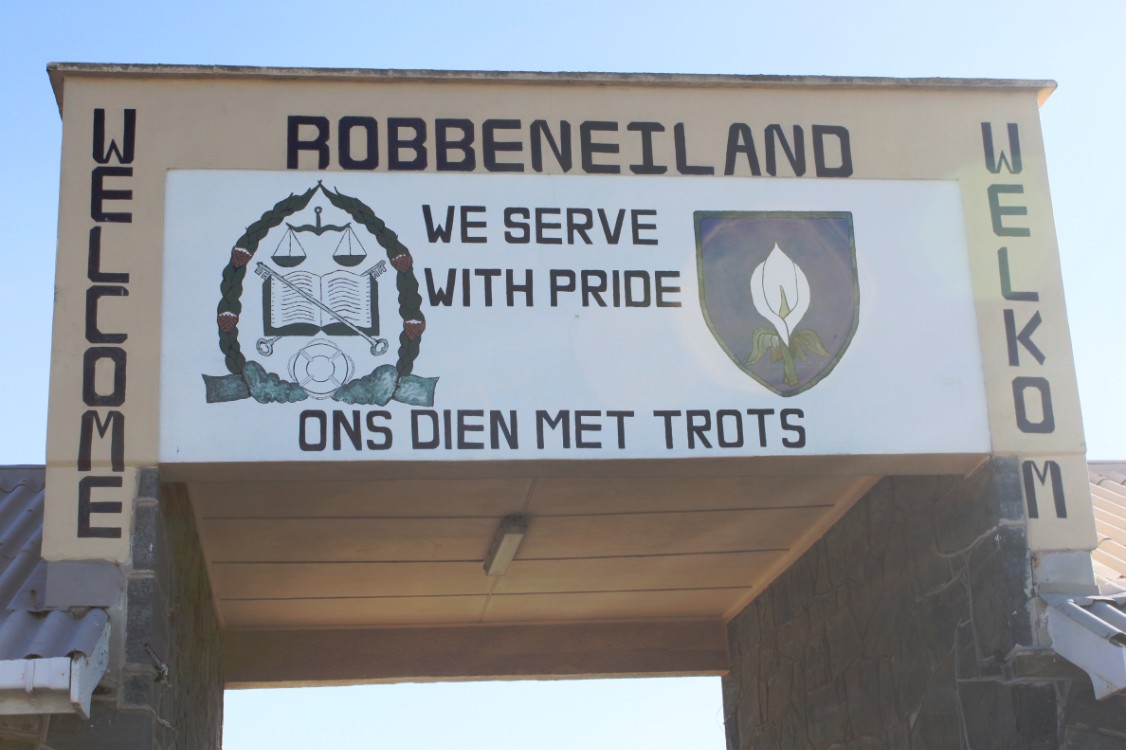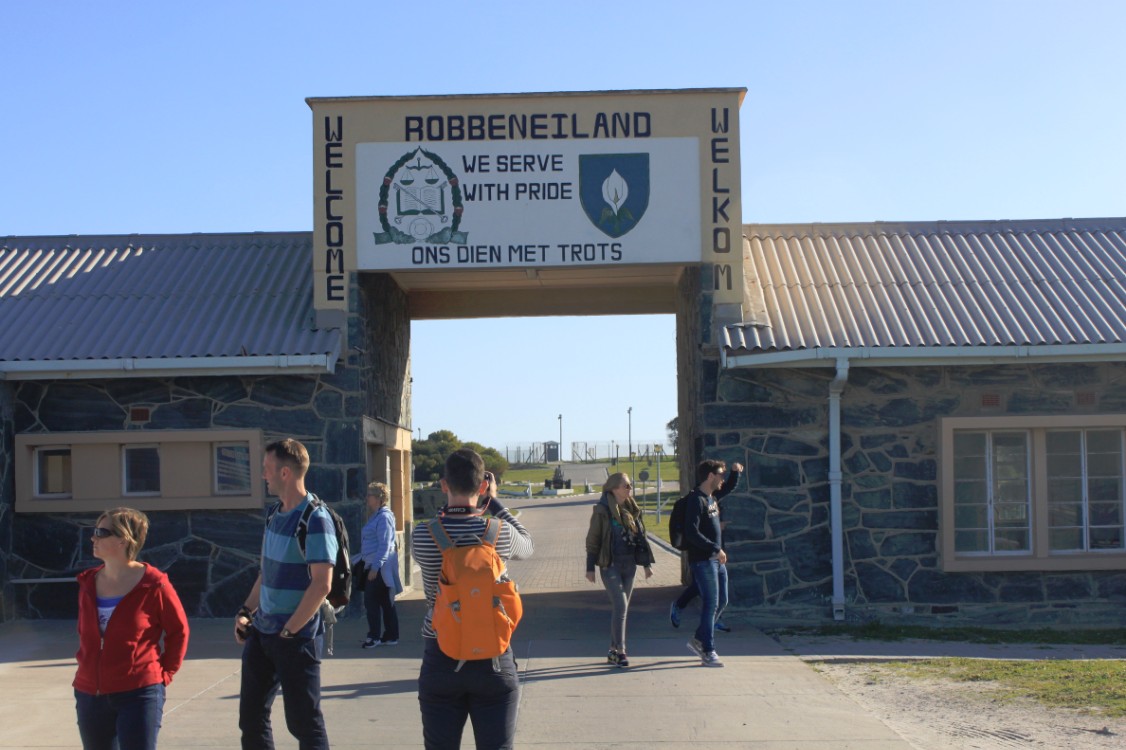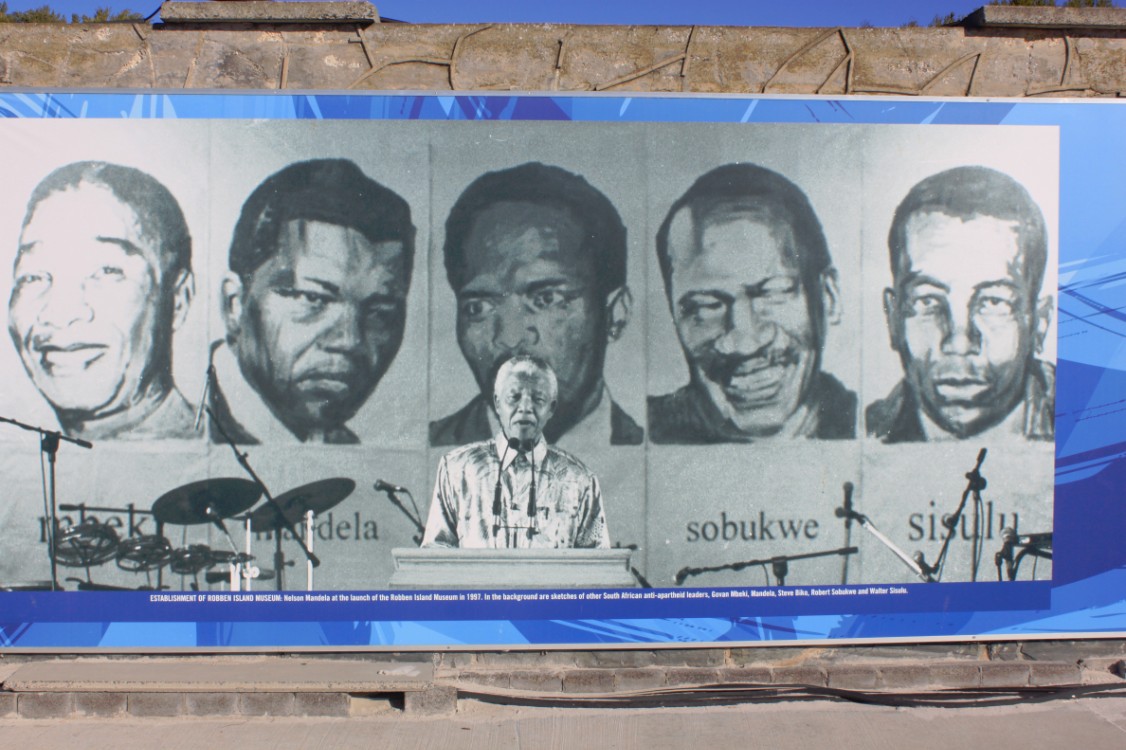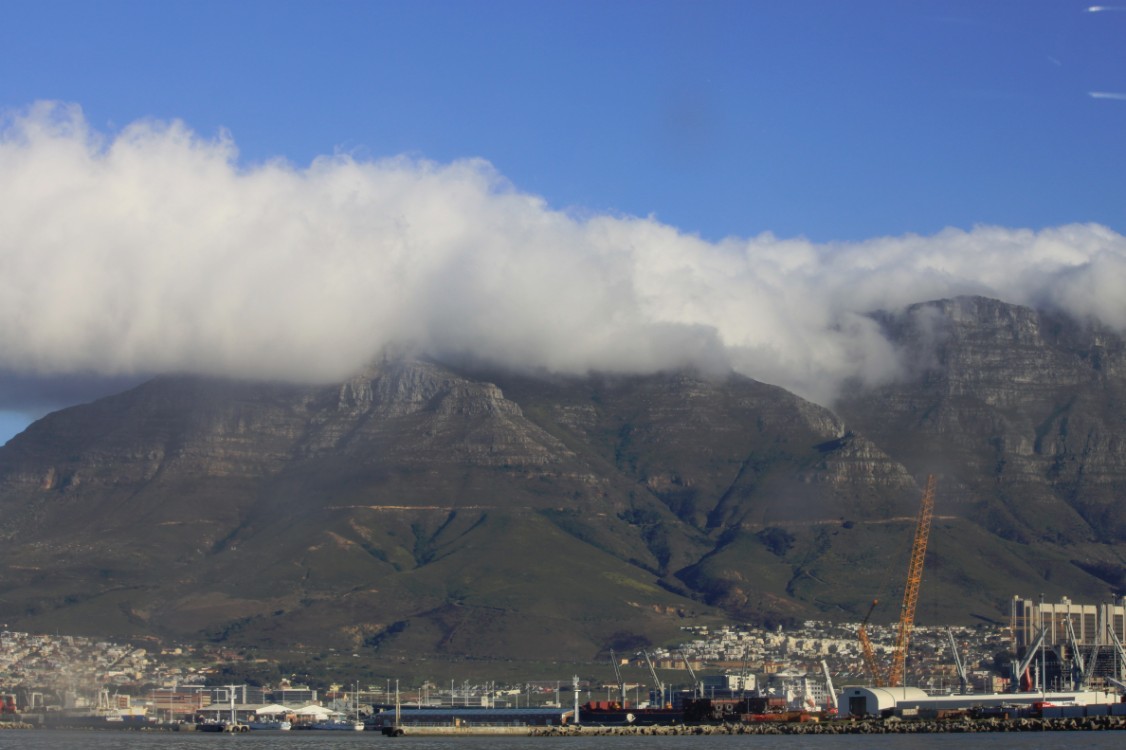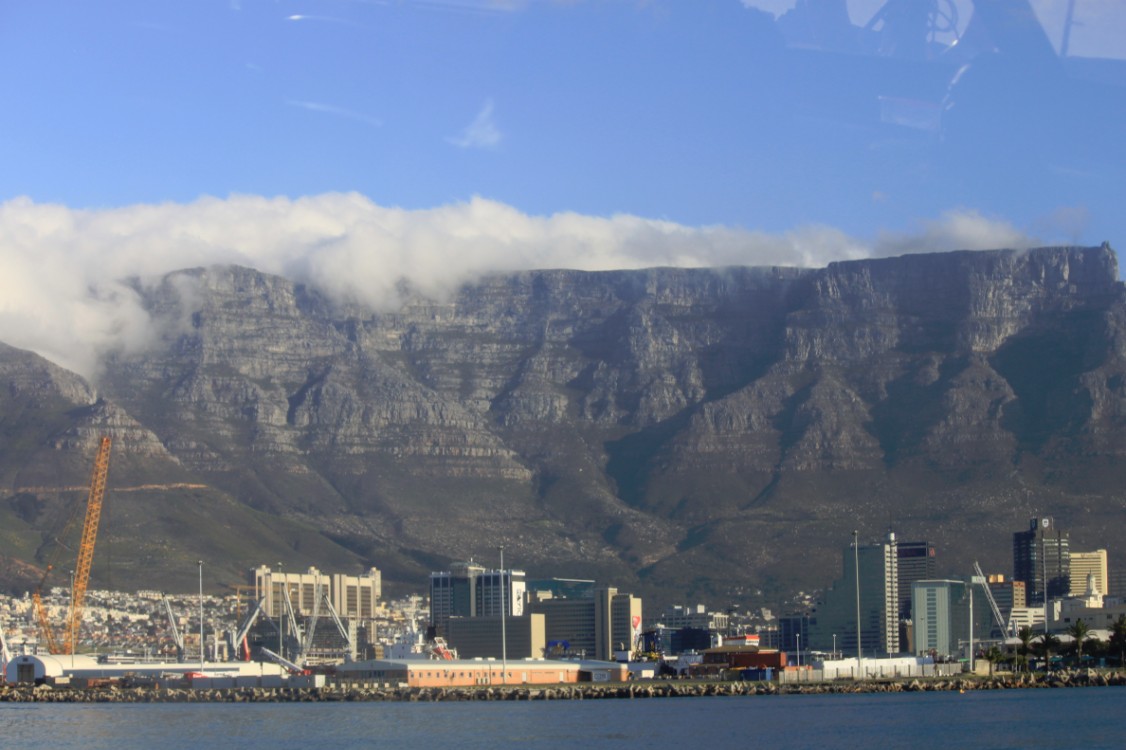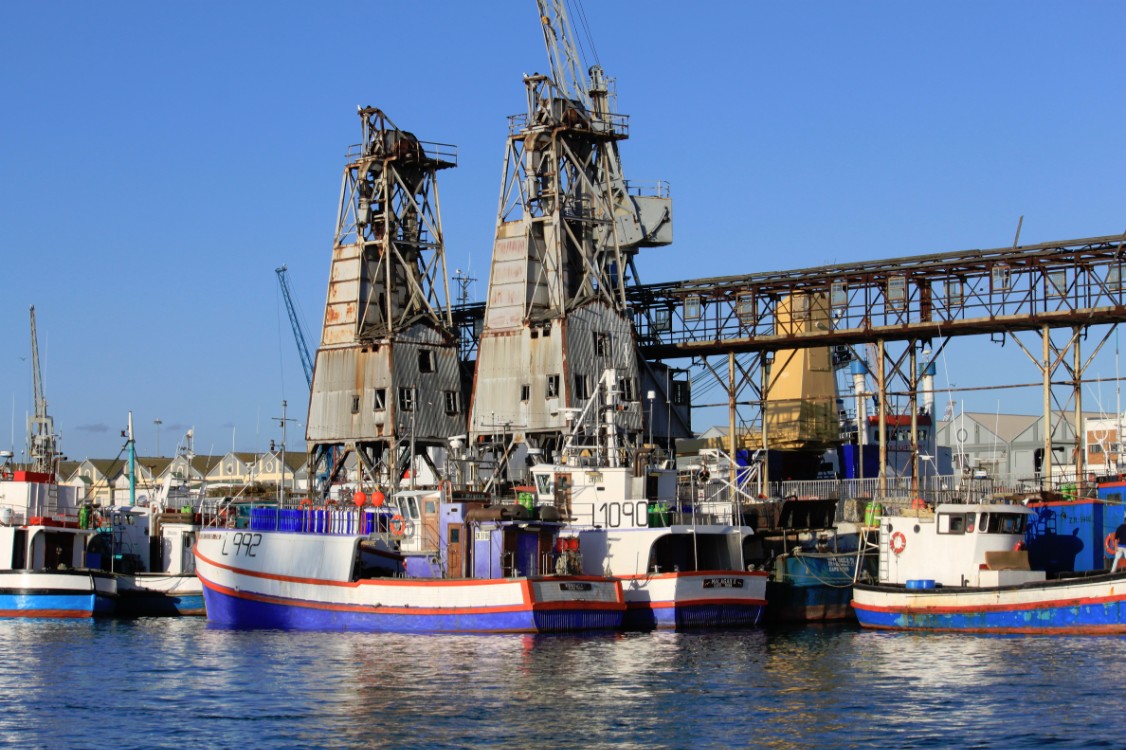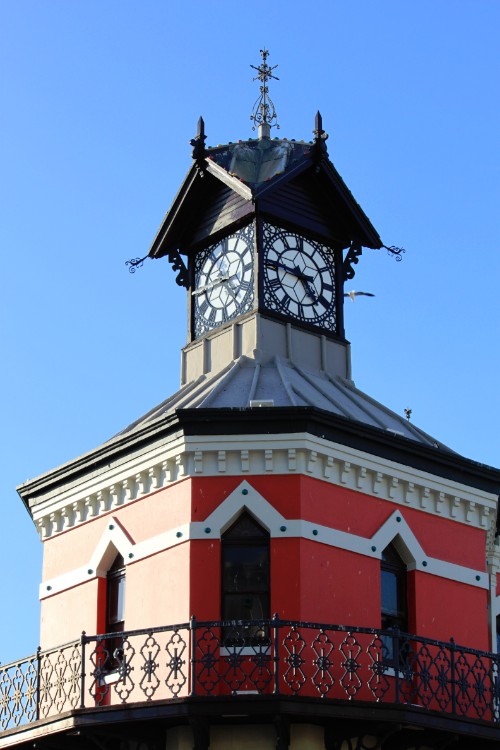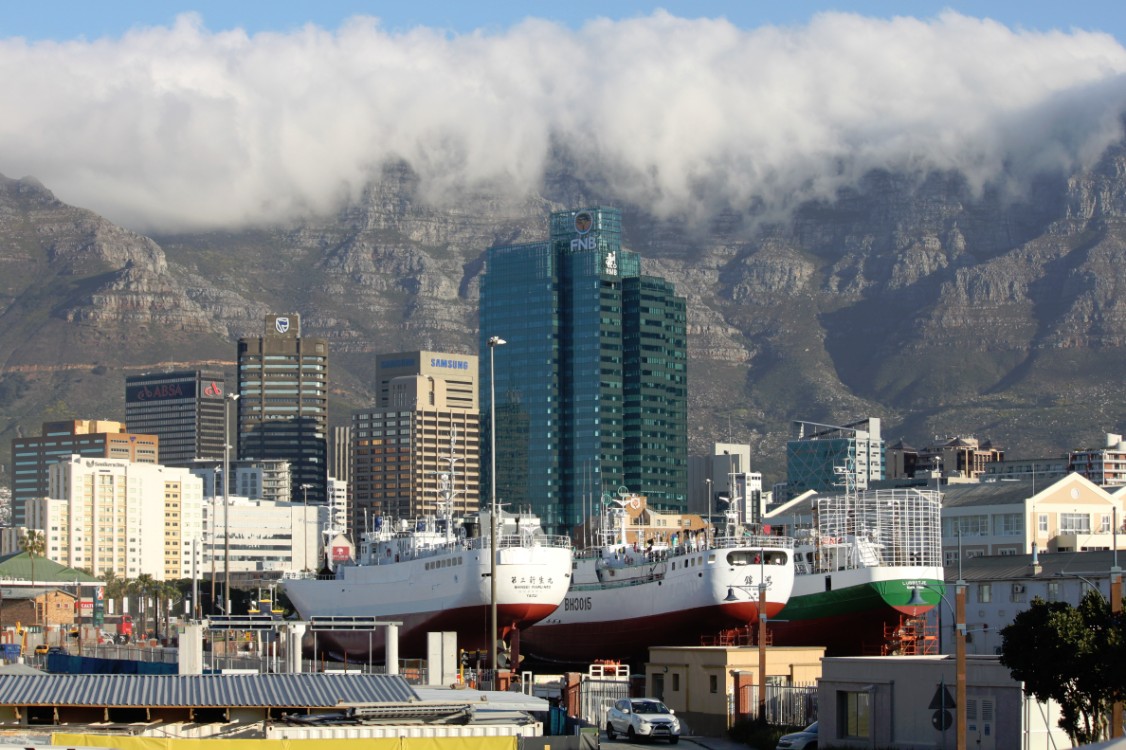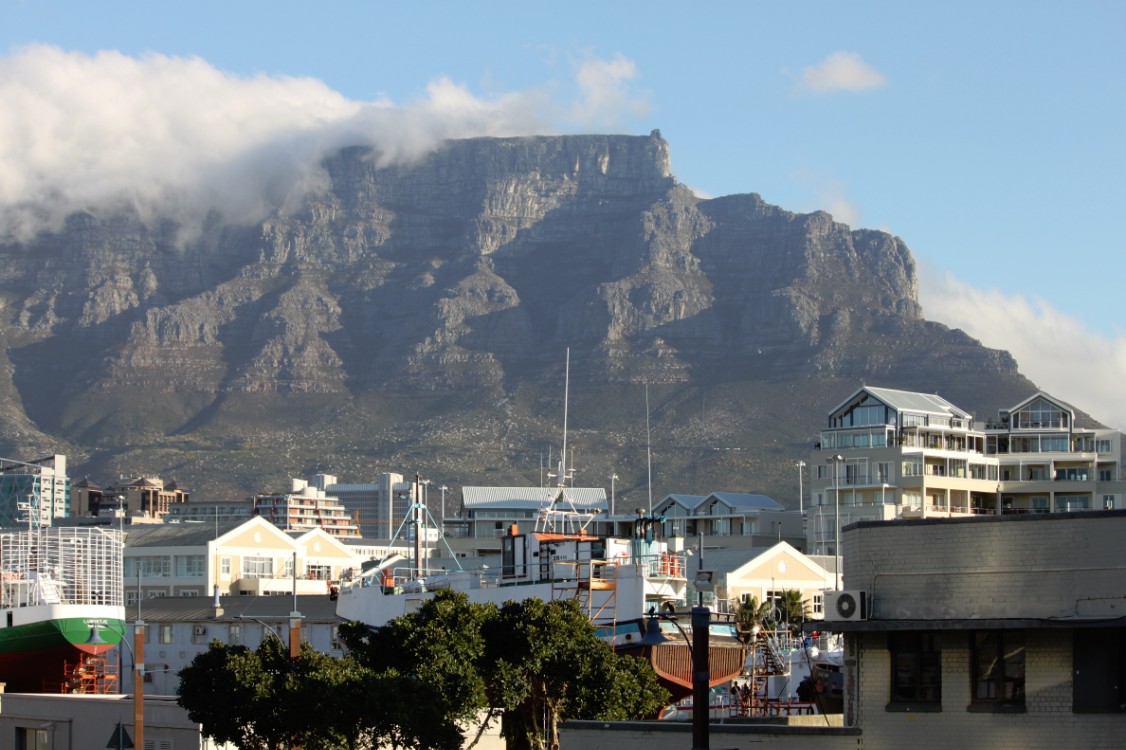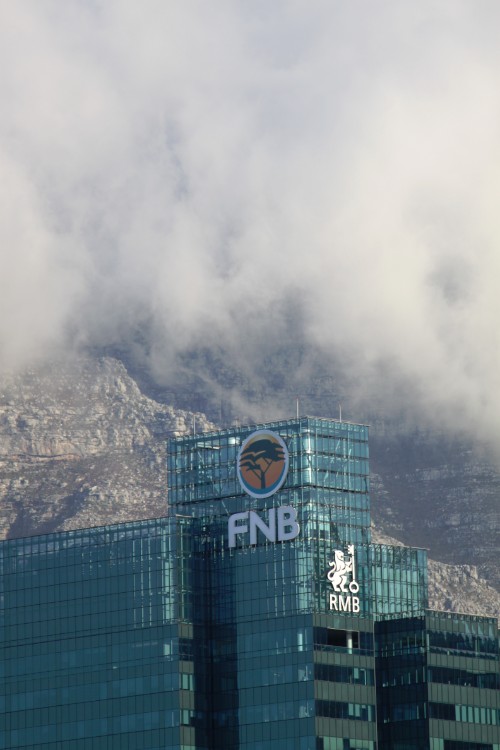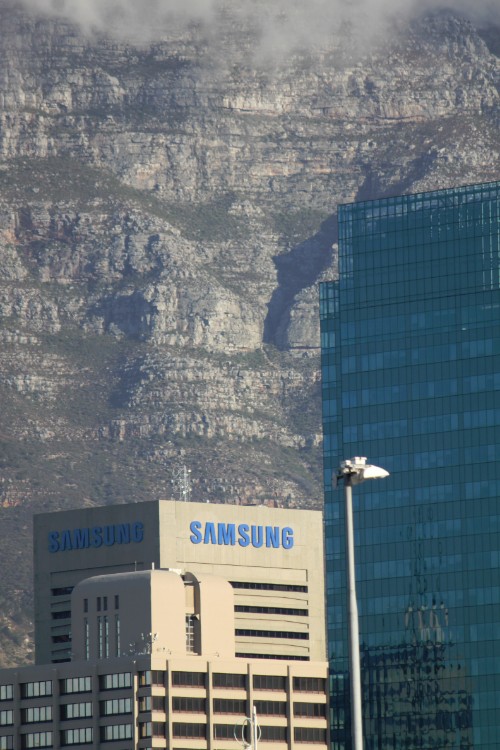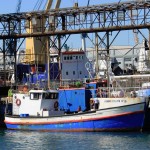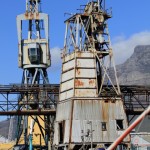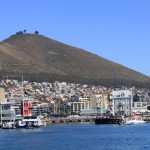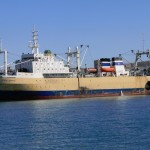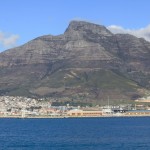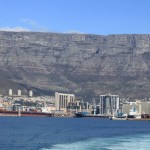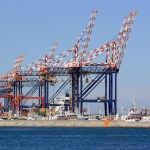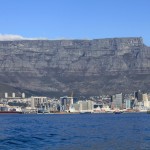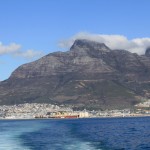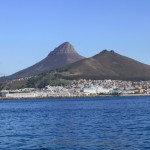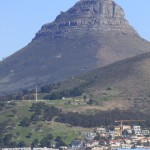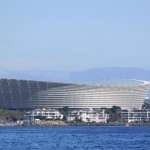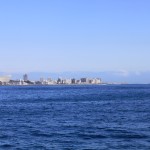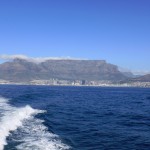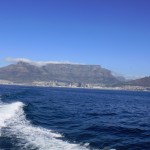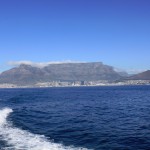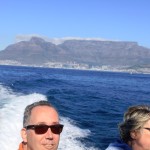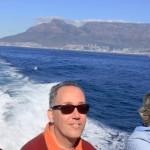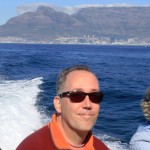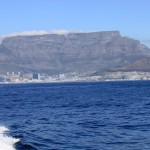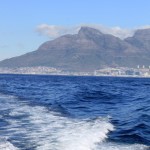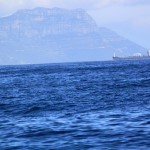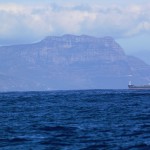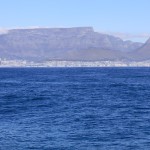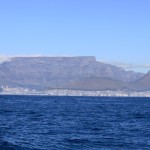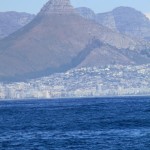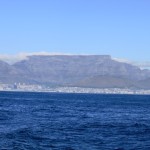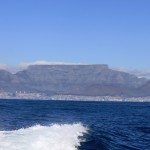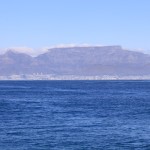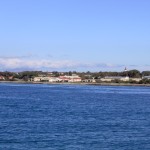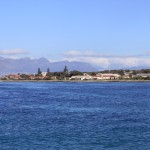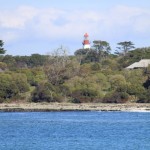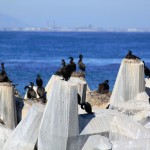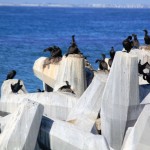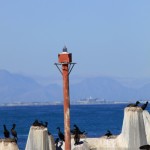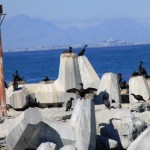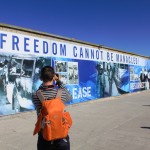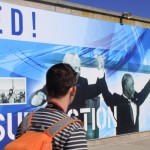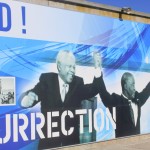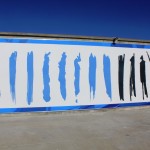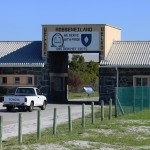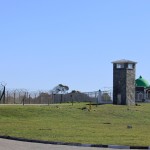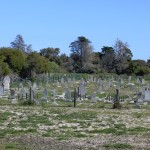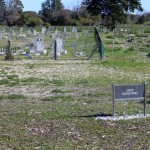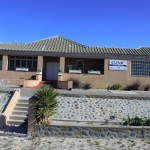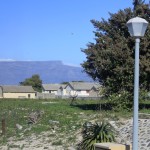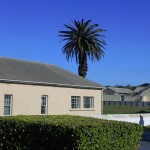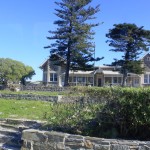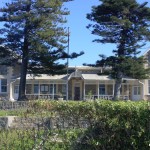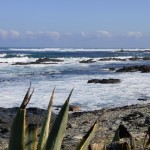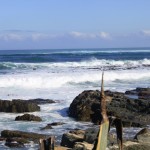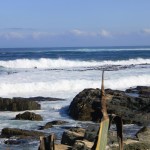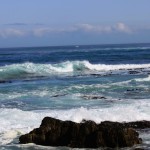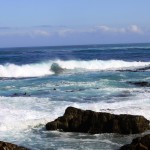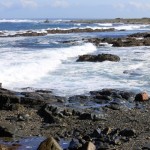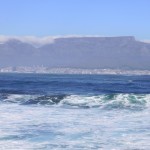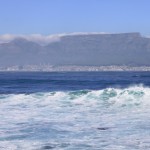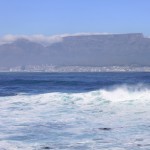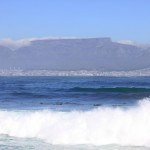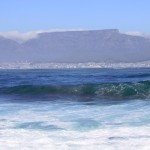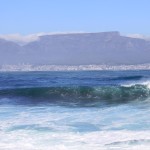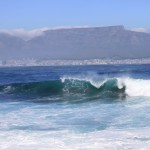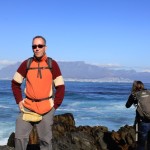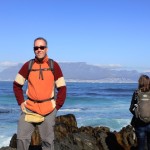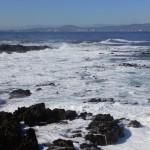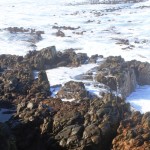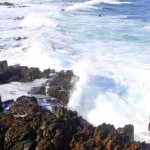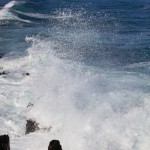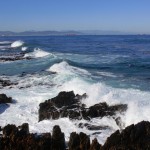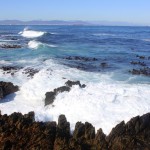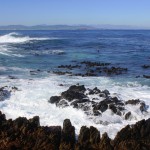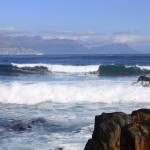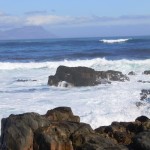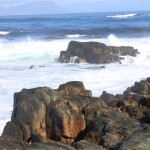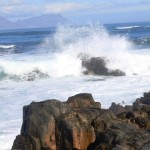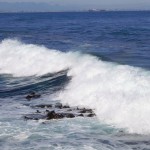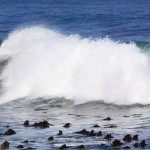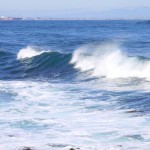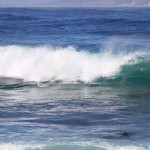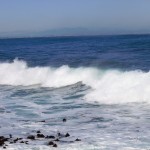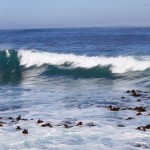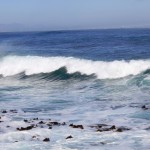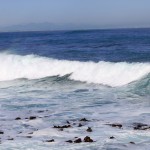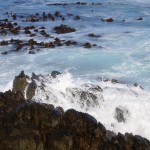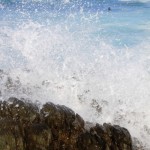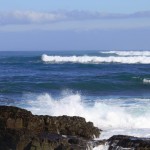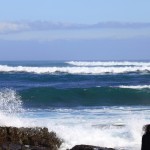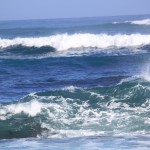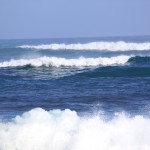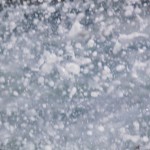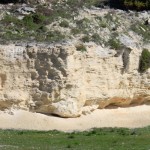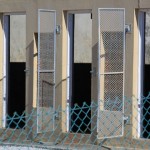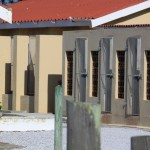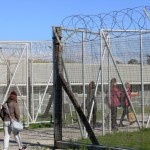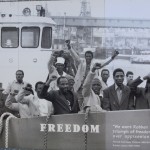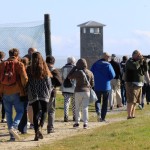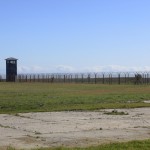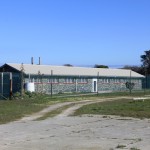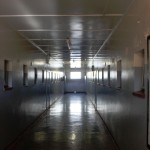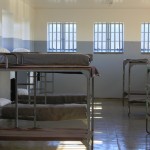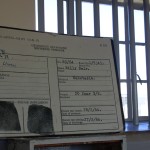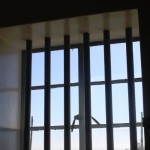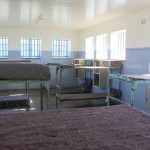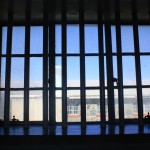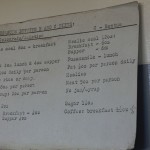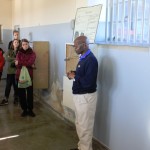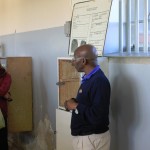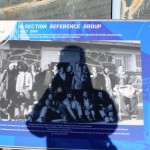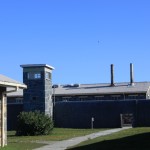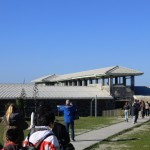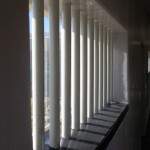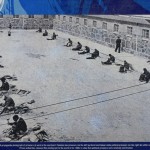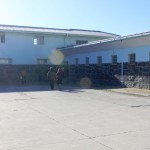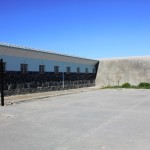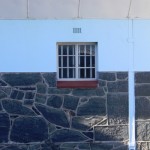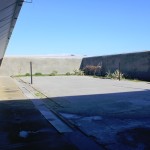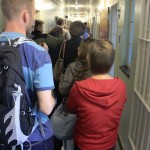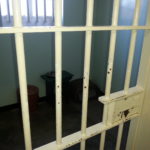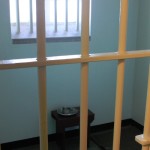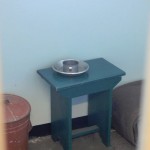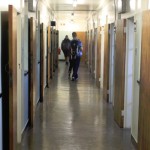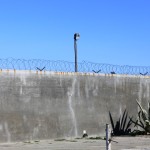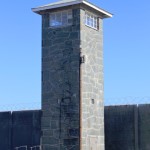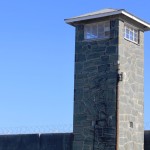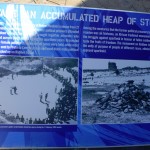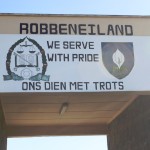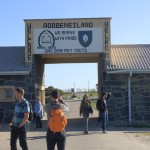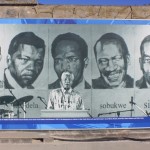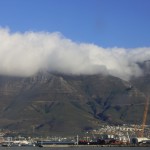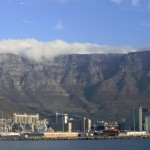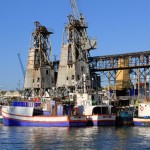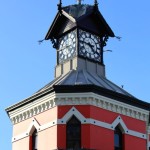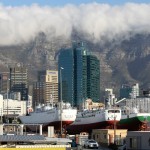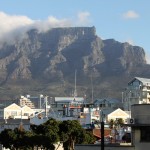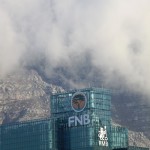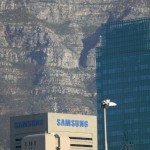4. South Africa – Cape Town: Robben Island
I’ll start with a mega TIP:
 The Wandelgek had booked his ticket for Robben Island in Holland after being tipped that there were only a few tickets left for the last of 2.5 days that he would spend in Cape Town. This was 4 days previous to the day on which he went to Robben Island. So book early at: http://www.webtickets.co.za/event.aspx?itemid=76219
The Wandelgek had booked his ticket for Robben Island in Holland after being tipped that there were only a few tickets left for the last of 2.5 days that he would spend in Cape Town. This was 4 days previous to the day on which he went to Robben Island. So book early at: http://www.webtickets.co.za/event.aspx?itemid=76219
After having spend the morning at the Victoria & Alfred Waterfront including the 2 oceans acquarium, of which I wrote another earlier blog here, The Wandelgek went to the Nelson Mandela Gateway near the Clock Tower at the Victoria & Alfred Waterfront for boarding.
The Robben Island Museum Tour is a 4 hour tour including:
- A return boat trip across Table Bay;
- A 45 minute bus ride over the island with commentary;
- A Tour of the infamous Maximum Security Prison (by an ex-political prisoner)
The boat slowly left the harbour area and there were great views of the Waterfront and of the World Championship Soccer Stadium. The further the boat got out in to the Table Bay area, the more spectacular the view on Cape Town and on Table Mountain towering above got.
Another TIP!
 Be early at the Nelson Mandela Gateway, because the number of seats outside, on top of the boat, where you have the best views is limited. Personnel is quite strict in not allowing more people in this area tham there are seats. Below deck the view is significantly less good, because of the windows which can’t be opened.
Be early at the Nelson Mandela Gateway, because the number of seats outside, on top of the boat, where you have the best views is limited. Personnel is quite strict in not allowing more people in this area tham there are seats. Below deck the view is significantly less good, because of the windows which can’t be opened.
The Wandelgek however did succeed in getting the last seat on top and this was more because of luck than wisdom 🙂
After half an hour the boat arrived at the quay of Robben Island.
When leaving the boat you immediately see the large blue, black and white colored pictures that decorate the road to the entrance of the Maximum Security Prison.
But there were also busses standing ready for a 45 minute trip around the island and this is a must see trip.
The trip includes a commentary by a guide who’s stories are sometimes bone chilling, when it involves the way the prisoners were treated.
During the bus ride, you’ll pass a lime stone mine where the prisoners (including Mandela) had to mine for lime stone wearing only their orange prisoner uniforms which were quite cold in winter. In summer Robben Island doesn’t provide any solace either. There are almost no trees and the sun burns unyieldingly on the flat island and on the unprotected prisoners.
There’s also a lepper graveyard and a medical post, a school for the children of the guards working at the prison. There’s a small village where the guards and their families lived and some houses with dog kennels to keep the dogs, needed to hunt down escaped prisoners.
Yes there were even several succesful escapes. Did you know that Autshumato escaped in 1659 with a fellow Khoikhoi captive by rowing to the mainland in a stolen boat. In 1690, a convict, Jan Rykman escaped by swimming to the mainland in the first recorded swim from Robben Island.
The best stop however was on the eastside of Robben Island where you’ll have the utmost spectacular view on Table Mountain ever. The water in the bay rolls in big waves towards the Island and far away you have a complete view over the mountain range surrounding Cape Town.
So now we know how badly these mostly political prisoners wre treated at Robben Island, but of this I did have quite a good idea when at home.What came next completely shocked me and I felt like my stomach was turning inside out when I started to understand the terrible truth and what this thruth implicated…
The bus now drove towards the Maximum security prison of Robben Island. It had the look and feel of the concentration camps we had in Europe during the Second World War. First we visited a prison block for the less important prisoners. We were guided by a friendly old man who had been a prisoner himself during the Apartheid regime.
He showed us the sleeping rooms where the prisoners slept underneath very thin blankets which would hardly protect anyone from the cold of winter in these not very well heat isolated cell blocks.
And than he started telling us stories and bits of information of which one in particular really shocked me.
I somehow always thought and believed Apartheid was a very evil system which was developed by white people after they realized that they were a minority which could only hold on to power if they would downgrade and surpress the dangerous black majority tha6t outnumbered them big time.
The truth however was even much worse than I had ever imagined…
The ex-prisoner started telling us how every prisoner would receive sugar, coffee, meals, milk, water, etcetera to survive. There were mostly asian, colored (a mix between white and black race) and bantu meaning black prisoners. And then he showed us a list of what each prisoner would get to feed himself. But actually it wasn’t a list but a table dividing the prisoners over two columns. Asians and coloreds versus bantus. Where an asian prisoner would receive 2 ounce of sugar, 6 ounce of meat and 1 ounce of jam/syrup, a bantu would receive only 1.5 ounce of sugar, 5 ounce of meat and no jam/syrup. And than my stomach started to turn because I started to realize that Apartheid was not only a system to srpress the black majority and protect the white minorities power.
I mean, if you even practice Apartheid in a Maximum Security Prison isolated from the South African mainland, then this could only mean one terrible thing: the white people who practiced Apartheid really believed in every vein of their being that they were a superior race and blacks were probably closer related to animals than to them. I felt sick and ashamed to be white. I also didn’t understand this, coming from the Netherlands, a country that had experienced nazi occupation and had endured Hitlers insane ideas about the superior Arian race and the rat/vermin like jewish race. How was it possible that a regime practicing the same ideology as nazi germany could have lasted soo long after World War II had ended?
I was in shock and the stories kept coming.
About how family members of Namibian black prisoners (Namibia was then under South African rule), travelled for thosends of kilometers to meet there improned family, to Robben Island where they were told that the prisoner had become very ill that day and could not attend. Than they were send back to the mainland and to Namibia without a chance to speak the imprisoned relative. The prisoner anxious to see and speak his wife and children, was told that the family was not on the boat and needed to apply for another appointment which took months and which was only allowed a very few times a year.
After this we visited the outside courtyard where the prisoners could play soccer or where they had to work and then we went to the infamous cell block for high security prisoners like Nelson Mandela. The cell of Mandela was like all the others very small and sober.
Than we left the prison and at the Musem shop I bought a Nelson Mandela shirt…
After a half an hour boat trip I arrived at the Waterfront still quite in shochk abot the brutality and sheer evilness that this Apartheid regime (Apartheid being a Dutch word for Separation/Division) had represented…
Robben Island
Robben Island (Afrikaans: Robbeneiland) is an island in Table Bay, 6.9 km west of the coast of Bloubergstrand, Cape Town, South Africa. The name is Dutch for “seal island.” Robben Island is roughly oval in shape, 3.3 km long north-south, and 1.9 km wide, with an area of 5.07 km². It is flat and only a few metres above sea level, as a result of an ancient erosion event. Nobel Laureate and former President of South Africa Nelson Mandela was imprisoned there for 18 of the 27 years he served behind bars before the fall of apartheid. To date, three of the former inmates of Robben Island have gone on to become President of South Africa: Nelson Mandela, Kgalema Motlanthe, and current President Jacob Zuma.
Robben Island is both a South African National Heritage Site as well as a UNESCO World Heritage Site.
History
Since the end of the 17th century, Robben Island has been used for the isolation of mainly political prisoners. The Dutch settlers were the first to use Robben Island as a prison. Its first prisoner was probably Autshumato in the mid-17th century. Among its early permanent inhabitants were political leaders from various Dutch colonies, including Indonesia, and the leader of the mutiny on the slave ship Meermin.
After the British Royal Navy captured several Dutch East Indiamen at the battle of Saldanha Bay in 1781, a boat rowed out to meet the British warships. On board were the “kings of Ternate and Tidore, and the princes of the respective families”. The Dutch had long held them on “Isle Robin”, but then had moved them to Saldanha Bay.
In 1806 the Scottish whaler John Murray opened a whaling station at a sheltered bay on the north-eastern shore of the island which became known as Murray’s Bay, adjacent to the site of the present-day harbour named Murray’s Bay Harbour which was constructed in 1939–40.
After a failed uprising at Grahamstown in 1819, the fifth of the Xhosa Wars, the British colonial government sentenced African leader Makanda Nxele to life imprisonment on the island. He drowned on the shores of Table Bay after escaping the prison.
The island was also used as a leper colony and animal quarantine station. Starting in 1845 lepers from the Hemel-en-Aarde (heaven and earth) leper colony near Caledon were moved to Robben Island when Hemel-en-Aarde was found unsuitable as a leper colony. Initially this was done on a voluntary basis and the lepers were free to leave the island if they so wished. In April 1891 the cornerstones for 11 new buildings to house lepers were laid. After the introduction of the Leprosy Repression Act in May 1892 admission was no longer voluntary and the movement of the lepers was restricted. Prior to 1892 an average of about 25 lepers a year were admitted to Robben Island, but in 1892 that number rose to 338, and in 1893 a further 250 were admitted.
During the Second World War the island was fortified and BL 9.2-inch guns and 6-inch guns were installed as part of the defences for Cape Town.
Robben Island was used as a prison for political prisoners and convicted criminals from 1961. It was a maximum security prison for political prisoners until 1991. The medium security prison for criminal prisoners was closed in 1996.
In the South African general election, 2009, the Democratic Alliance won the island.
Maritime peril
Robben Island and nearby Whale Rock have been the nemeses of many a ship and its crew. The surf of the open Atlantic Ocean thunders continuously at its margins and any vessel wrecked on the reefs offshore is soon beaten to pieces and disappears. In the latter half of the 17th century a Dutch ship laden with gold coins earmarked for the payment of the salaries of employees of the Dutch East India Company in Batavia (now Jakarta, Indonesia) disintegrated on these reefs a short distance offshore, in relatively shallow but very restless waters. The gold today would be worth tens of millions of euros or US dollars. A few coins have washed ashore over the centuries but the treasure itself remains in the ocean. It is protected largely by the almost ceaseless and violent surf. Many other vessels have been wrecked around the island.
Today
Today the island is a popular tourist destination and was declared a World Heritage Site in 1999. It is reached by ferry from the Victoria & Alfred Waterfront in Cape Town and is open throughout the year, weather permitting, and tours of the island and prison are led by guides who were formerly prisoners there. Robben Island Museum (RIM) operates as a site or living museum. All the land on the island is owned by the State, with the exception of the island church.
Robben Island lighthouse
Jan van Riebeeck first set a navigation aid at the top of Fire Hill (now Minto Hill), the highest point on the island. Huge bonfires were lit at night to warn VOC ships of the rocks that surround the island. The current Robben Island lighthouse, built on Minto Hill in 1864, is 18 metres (59 ft) high and was converted to electricity in 1938. It is the only South African lighthouse to utilise a flashing light instead of a revolving light. Its light is visible for 24 nautical miles.
Moturu Kramat
The Moturu Kramat, a sacred site for Muslim pilgrimage on Robben Island, was built in 1969 to commemorate Sayed Abdurahman Moturu, the Prince of Madura. Moturu, one of Cape Town’s first imams, who was exiled to the island in the mid-1740s and died there in 1754. Muslim political prisoners would pay homage at the shrine before leaving the island.
Animal life
When the Dutch arrived in the area in 1652, the only large animals on the island were seals and birds, principally penguins. In 1654, the settlers released rabbits on the island to provide a ready source of meat for passing ships. The original colony of African penguins on the island was completely exterminated by 1800. However the modern day island is once again an important breeding area for the species after a new colony established itself there in 1983. The colony has grown to 13,000 and is now the third largest for the species. The penguins are easy to see close up in their natural habitat and are therefore a popular tourist attraction.
Around 1958, Lieutenant Peter Klerck, a naval officer serving on the island, introduced various animals. The following extract of an article, written by Michael Klerck who lived on the island from an early age, describes the fauna life there:
My father, a naval officer at the time, with the sanction of Doctor Hey, director of Nature Conservation, turned an area into a nature reserve. A ‘Noah’s Ark’ berthed in the harbour sometime in 1958. They stocked the island with tortoise, duck, geese, buck (which included Springbok, Eland, Steenbok, Bontebok and Fallow Deer), Ostrich and a few Wildebeest which did not last long. All except the fallow deer are indigenous to the Cape. Many animals are still there including three species of tortoise—the most recently discovered in 1998—two Parrot Beaked specimens that have remained undetected until now. The leopard or mountain tortoises might have suspected the past terror; perhaps they had no intention of being a part of a future infamy, but they often attempted the swim back to the mainland (they are the only species in the world that can swim). Boats would lift them out of the sea in Table Bay and return them to us. None of the original 12 shipped over remain, and in 1995, four more were introduced—they seem to have more easily accepted their home as they are still residents. One resident brought across a large leopard tortoise discovered in a friend’s garden in Newlands, Cape Town. He lived in our garden and grew big enough to climb over the wall and roam the island much like the sheep in Van Riebeeck’s time. As children we were able to ride his great frame comfortably, as did some grown men. The buck and ostriches seemed equally happy and the ducks and Egyptian Geese were assigned a home in the old quarry, which had, some three hundred years before, supplied the dressed stone for the foundations of the Castle; at the time of my residence it bristled with fish. It has also been mentioned in Pointless. Recent reports in Cape Town newspapers show that a lack of upkeep, a lack of culling, and the proliferation of rabbits on the island has led to the total devastation of the wildlife; there remains today almost none of the animals my father brought over all those years ago; the rabbits themselves have laid the island waste, stripping it of almost all ground vegetation. It looks almost like a desert. A reporter from the broadcasting corporation told me recently that they found the carcass of the last Bontebok.
There may be 25,000 rabbits on the island. Humans are hunting and culling the rabbits to reduce their number.
List of former prisoners held at Robben Island
- Autshumato, one of the first activists against colonialism
- Dennis Brutus, former activist and poet
- Patrick Chamusso, former activist of the African National Congress
- Laloo Chiba, former accused at Little Rivonia Trial
- Eddie Daniels (political activist)
- Jerry Ekandjo, Namibian politician
- Nceba Faku, former Metro Mayor of Port Elizabeth
- Petrus Iilonga, Namibian trade unionist, activist and politician
- Ahmed Kathrada, former Rivonia Trialist and long-serving prisoner
- Koesaaij, Malagasy co-leader of the Meermin slave mutiny in February, 1766
- Langalibalele, one of the first Activists against colonialism
- John Kenneth Malatji, former activist and special forces of ANC – Tladi, Soweto
- Njongonkulu Ndungane, later to become Archbishop of Cape Town
- Mosiuoa Lekota, imprisoned in 1974, President and Leader of the Congress of the People
- Mac Maharaj, former accused at Little Rivonia Trial
- Makana, one of the activists against colonialism
- Nelson Mandela, African National Congress leader and former President of South Africa (first black president)
- Gamzo Mandierd, activist
- Jeff Masemola, the first prisoner sentenced to life imprisonment in the apartheid era
- Amos Masondo, former Mayor of Johannesburg
- Massavana, Malagasy leader of the Meermin slave mutiny in February, 1766
- Michael Matsobane, leader of Young African Religious Movement. Sentenced at Bethal in 1979; released by PW Botha in 1987.
- Chief Maqoma, former chief who died on the island in 1873
- Govan Mbeki, father of former President of South Africa Thabo Mbeki. Govan was sentenced to life in 1963 but was released from Robben Island in 1987 by PW Botha
- Wilton Mkwayi, former accused at Little Rivonia Trial
- Murphy Morobe, Soweto Uprising student leader
- Dikgang Moseneke, Deputy Chief Justice of South Africa
- Sayed Adurohman Moturu, the Muslim Iman who was exiled on the island and died there in 1754
- Griffiths Mxenge, a South African Lawyer and member of the African National Congress
- Billy Nair, former Rivonia Trialist and ANC/SACP leader
- M. D. Naidoo, a South African lawyer and member of the African National Congress
- John ya Otto Nankudhu, Namibian liberation fighter
- John Nkosi Serving life but released by PW Botha in 1987
- Nongqawuse, the Xhosa prophetess responsible for the Cattle Killing
- Maqana Nxele, former Xhosa prophet who drowned while trying to escape
- John Nyathi Pokela, co-founder and former chairman of the PAC
- Joe Seremane, current chairperson of the Democratic Alliance.
- Tokyo Sexwale, businessman and aspirant leader of the African National Congress
- Gaus Shikomba, Namibian politician
- Walter Sisulu, former ANC Activist
- Stone Sizani, ANC Chief Whip
- Robert Sobukwe, former leader of the PAC
- Andimba Toivo ya Toivo, Namibian politician
- Jacob Zuma, President of South Africa and leader of the African National Congress
- Achmad Cassiem
- Setsiba Paul Mohohlo, former APLA unit commander
- Micheal Ludumo Buka, former ANC Activist
- Kgalema Motlanthe, South Africa’s first Pedi president
- John Aifheli Thabo, an ANC political activist
- Ezra Mvuyisi Sigwela, an ANC political activist
Learn even more on Robben Island on: http://www.robben-island.org.za/tours#visitorinfo

